

Alle Vor- und Nachteile der Travel Prepaid Mastercard
Es gibt wenige Länder in denen die Schweizer Franken als Landeswährung verwendet werden. Diesen Umstand hat sich die Travel Prepaid Mastercard , die vormals als Travel Cash Kreditkarte bekannt war, zu Nutzen gemacht! Die Prepaid Mastercard von Swiss Bankers richtet sich an Reisende, die einen einfachen Weg suchen im Ausland in Euro oder US-Dollar ohne hohe Gebühren zu bezahlen und dabei eine Prepaid Kreditkarte nutzen möchten. Es klingt vielversprechend – doch kann die Karte wirklich überzeugen oder sind andere Prepaid Kreditkarten im Kreditkartenvergleich attraktiver? Wir habe sie uns für Euch im Detail angeschaut!
Travel Prepaid Mastercard
- keine Jahresgebühr
- keine Fremdwährungsspesen
- schnelles Aufladen per App
- mobile Zahlungsoptionen
- bis zu 10 Prozent sparen bei Booking.com
- schneller kostenloser und weltweiter Ersatz bei Verlust per Kurier
- in EUR, USD oder CHF erhältlich
Die Leistungen mögen auf den ersten Blick nicht überragend erscheinen, sind aber für ein kostenloses Produkt durchaus interessant. Auf dieser Seite analysieren wir die Travel Prepaid Mastercard in allen Details und zeigen ihre Stärken und Schwächen auf. Da keine Kreditkarte immer für jeden die beste Option ist, mochten wir Euch zudem einige attraktive Alternativen präsentieren!
Inhaltsverzeichnis
Die Vorteile der Travel Prepaid Mastercard
Die nachteile der travel prepaid mastercard, für wen lohnt sich die travel prepaid mastercard, alternativen zur travel prepaid mastercard.
- Fazit zur Travel Prepaid Mastercard
Häufig gestellte Fragen zur Travel Prepaid Mastercard
Der grösste Vorteil der Travel Prepaid Mastercard ist, dass sie in drei Währungsversionen erhältlich ist – Euro, US-Dollar oder in Schweizer Franken. Wer also viel in der Eurozone oder im amerikanischen Raum unterwegs ist, sollte in Erwägung ziehen, die Prepaid Kreditkarte in der jeweiligen Währung zu beantragen. Zudem fällt bei der Swiss Bankers Travel Mastercard im Gegensatz zu den Konkurrenzprodukten keine Bearbeitungsgebühr für den Einsatz im Ausland an, was sie für Kartenzahlungen auf Reisen sehr attraktiv macht.
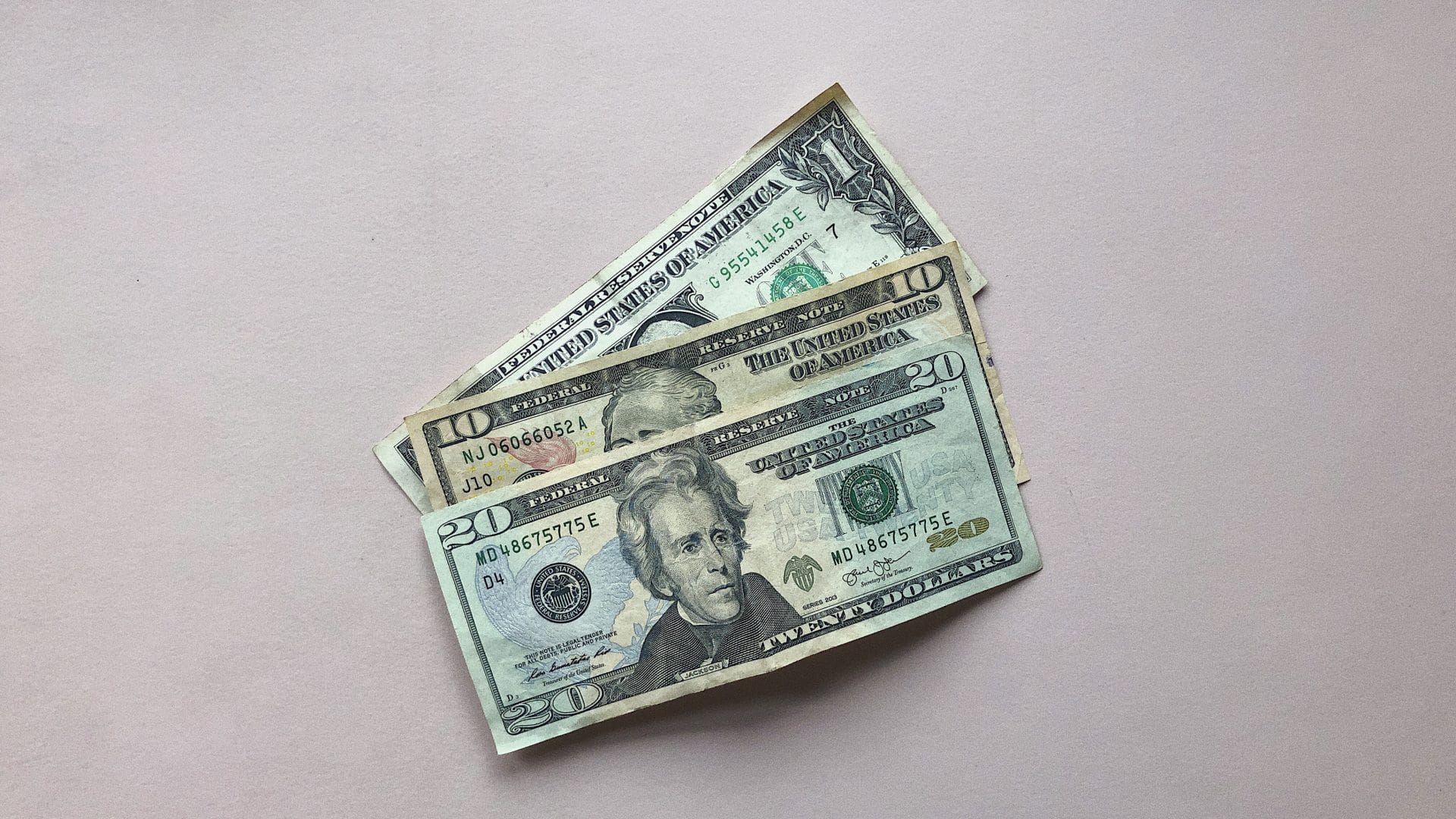
Darüber hinaus kommt die Travel Prepaid Mastercard ohne Jahresgebühr daher, was sie zu einer attraktiven kostenlosen Kreditkarte macht. An anderer Stelle fallen zwar Gebühren an, aber die Gebührenstruktur ist sehr transparent: Der Bargeldbezug erfolgt zu einem festen Preis und ist nicht an die Höhe der Auszahlung gebunden. Im Inland fallen bei Abhebungen am Bancomat 5 Franken/US-Dollar/Euro (je nach Version) an, im Ausland 7.50 Franken/US-Dollar/Euro. Damit können böse Überraschungen bei hohen Abhebungen vermieden werden.
Ein weiterer Vorteil ist auch hier die schnelle Aufladung der Travel Prepaid Mastercard über die App des Kartenanbieters: innerhalb von 15 Minuten soll das Guthaben auf der Karte verfügbar sein. Per Überweisung dauert es rund zwei Arbeitstage. Wer also kurzfristig Bargeld benötigt kann mit Hilfe der Travel Prepaid Mastercard schnell und unkompliziert an US-Dollar, Euro oder Franken kommen. Das Limit für die Kartenaufladung beträgt bei dieser Prepaid Kreditkarte 10’000 Franken/US-Dollar/Euro. Durch die Abrechnung in Landeswährung können Inhaber der Travel Prepaid Mastercard teure Umrechnungskurse der Hausbank oder schlechte Wechselkurse am Flughafen umgehen.

Ein weiterer Vorteil, der für eine kostenlose Kreditkarte wirklich unüblich ist und durch den man bei geschicktem Einsatz eine Menge Geld sparen kann, sind die bis zu 10 Prozent Cashback bei Booking.com. Die Unterkunft können dabei ganz leicht auf der Swiss Bankers Buchungsseite vorgenommen und später im Hotel per Travel Mastercard bezahlt werden. Nach dem Aufenthalt erhaltet Ihr das Cashback im Booking.com-Wallet.
Ausserdem bieten die Swiss Bankers einen kostenlosen Ersatz der Karte bei Verlust oder Diebstahl. Gerade, wenn man länger auf Reisen ist, gibt einem das ein grosses Plus an Sicherheit. Dieser kostenlose Service bietet die Travel Prepaid Mastercard weltweite per Kurier an.

Zu guter Letzt sollte nicht unerwähnt bleiben, dass die Travel Prepaid Kreditkarte für diverse Formen des Mobile Payments ausgestattet ist. Sie ist kompatibel mit Apple Pay, Samsung Pay, Google Pay, Garmin Pay, Fitbit Pay, und sogar SwatchPAY!.
Wie bei vielen kostenlosen Kreditkarten, gibt es aber auch bei der Travel Mastercard einige Nachteile, die nicht unerwähnt bleiben dürfen. Der grösste Nachteil der Travel Cash Prepaid Mastercard ist trotz ihrer Übersichtlichkeit sicher die Gebührenlage: mit einem Franken je Transaktion im Geschäft und 5 Franken/Euro/US-Dollar je Bargeldbezug im Inland und 7.50 Franken/Euro/US-Dollar erreicht man schnell die Grenze, an der es günstiger wäre eine teurere Kreditkarte komplett ohne Fremdwährungsgebühr zu bestellen. Gerade wer noch den alten Namen “Travel Cash” im Kopf hat, sollte bedenken, dass das Abheben von Bargeld zu einem erheblichen Kostenfaktor führen kann.

Dazu kommen noch die Aufladegebühren in Höhe von 1.5 Prozent des Aufladebetrags. Bei der Ladung per Banküberweisung fällt keine zusätzliche Gebühr an, bei Ladung per Kreditkarte jedoch eine zusätzliche Fremdgebühr von ebenfalls 1.5 Prozent. Wer seine Travel Prepaid Mastercard mit einer PostFinance Karte aufladen möchte, muss sogar mit 6 Schweizer Franken an zusätzlichen Gebühren rechnen.
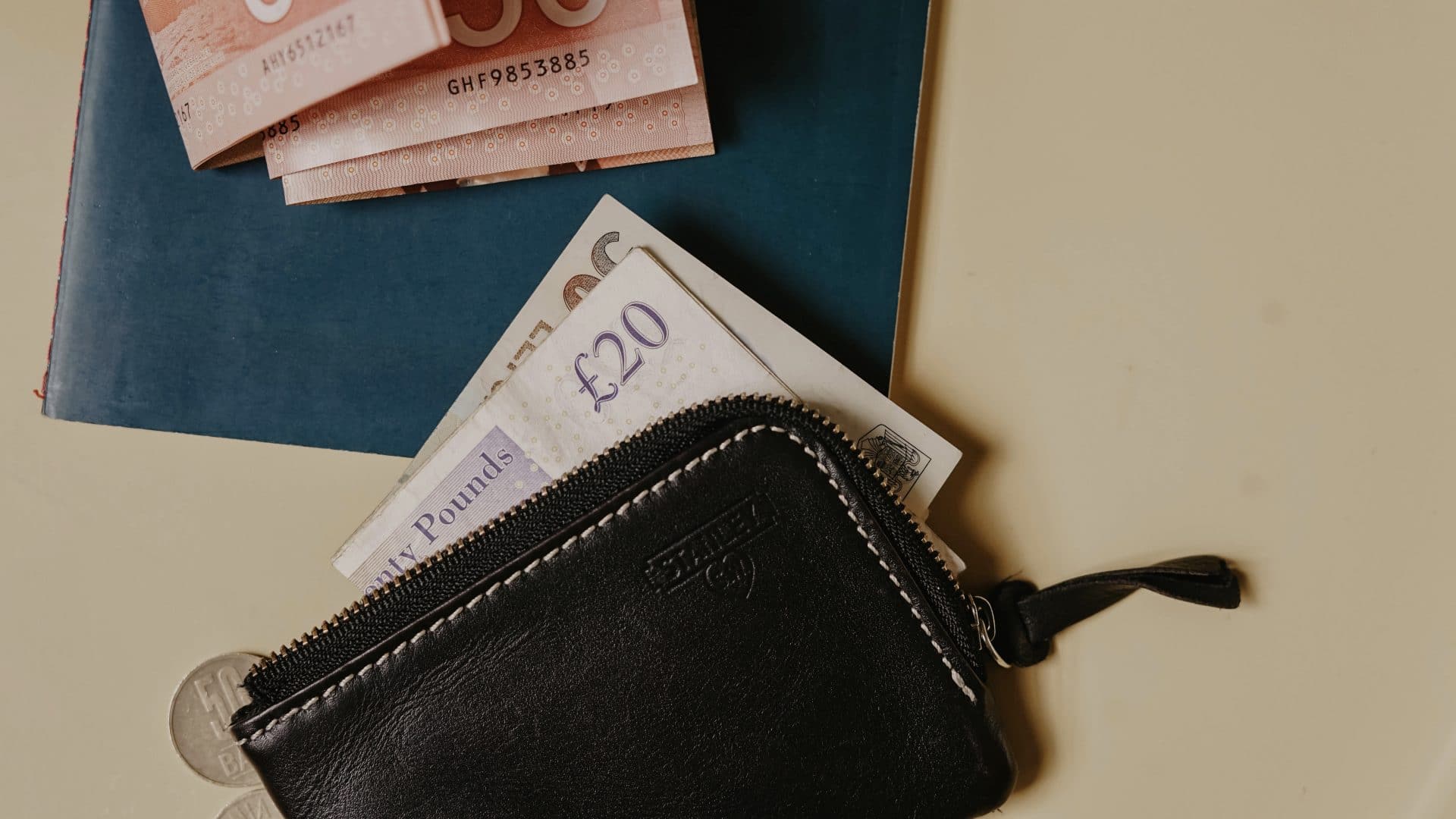
Für kurze Trips in die USA kann sich die US-Dollar-Version lohnen, wer aber mehrfach Abhebungen tätigt oder im Ferienland regelmässig mit der Karte bezahlen möchte sieht die Gebühren sich anhäufen. Weiterhin bietet die Karte sich nur für Reisende in der Eurozone, sowie für die USA an. Sollte man in Japan Yen benötigen oder in Mexiko Pesos ist die Travel Prepaid Mastercard hierfür nicht gedacht und verliert einige Ihrer Vorteile.
Die Travel Cash Prepaid Mastercard lohnt sich primär für Reisende, die häufig in der Eurozone oder den USA unterwegs sind und die volle Kontrolle über ihre Ausgaben behalten wollen. Hierbei bieten sich dann aber eher Kartenzahlungen als Bargeldbezüge an, da die Abhebegebühr auf Dauer ganz schön ins Geld gehen kann.
Doch auch bei der Zahlung in Geschäften hängt es sehr stark vom Einkaufsverhalten ab: tätigt man viele kleine Transaktionen wird die Travel Cash Prepaid Mastercard sehr schnell enorm teuer, da pro Zahlung eine Gebühr von 1 US-Dollar/CHF/Euro anfällt – jedoch keine zusätzliche Bearbeitungsgebühr für den Auslandseinsatz.

Auch lohnenswert ist die Karte mitunter für Personen, die auf Reisen grosse Sorgen haben, dass sie ihre Karte verlieren oder durch Umrechnungskurse grosse finanzielle Einbussen erfahren. Die Ersatzkarte ist gratis und die Prepaid-Eigenschaft schützt vor einem Kontrollverlust der Ausgaben.
Wenn wir an die Vorteile der Travel Cash Prepaid Mastercard denken, müssen wir direkt an die N26 Kreditkarte denken. Die Karte ist ein Geheimtipp unter den Kreditkarten und bietet einige Vorteile, die sich auch auf Reisen sehr auszahlen können. Mit der Karte profitiert Ihr bis zu fünf kostenfreien Bargeldabhebungen pro Monat an allen Geldautomaten mit MasterCard Zeichen im Euroraum in Euro. Ein grosser Vorteil gegenüber der Travel Prepaid Mastercard sind bei der N26 Kreditkarte zudem die gebührenlose Abhebungen in der Schweiz in Euro. Hierbei ist aber wichtig, dass Ihr in Euro abhebt, da Ihr bei Abhebungen in der Schweiz in Schweizer Franken 1,7 Prozent Fremdwährungsgebühr zahlt.
N26 MasterCard Kreditkarte
- Kostenlose Kreditkarte – dauerhaft ohne Jahresgebühr
- Kostenfreie Zahlungen weltweit
- 3 kostenfreie Bargeldabhebungen in Euro im Monat
- Girokonto inklusive
- Abrechnung über modernes Online-Konto
Auch kann es sich lohnen, einen Blick auf ein anderes Produkt der Swiss Bankers Prepaid Kreditkarten zu werfen: Die Life Prepaid Mastercard. Diese bietet sich zwar mehr für den Alltag als für die Reise an, hat kommt aber gegenüber der Travel Prepaid Kreditkarte mit dem entscheidenden Vorteil daher, dass sie keine Ladegebühren und keine Gebühr pro Zahlung (im Inland) hat.
Life Prepaid Mastercard
- Nur für kurze Zeit: Jahresgebühr geschenkt dem Promo-Code “life4free”
- keine Ladegebühren
- keine Zahlungsgebühren
- Online-Beantragung ohne Bonitätsprüfung
- als digitale Version erhältlich
Eine andere Alternative wäre das Online-Konto von Revolut . Mit diesem Produkt zahlt Ihr keine Gebühren für den Auslandseinsatz, könnt dazu einfache Überweisungen tätigen und sogar noch Meilen dabei sammeln. Bei Revolut gibt es Grenzen bei der maximalen Bargeldverfügung je Monat, aber bei Zahlungen im Ausland behaltet Ihr dank dem Startup den Überblick und zahlt nie wieder zu viel für den Wechselkurs.

Wer oft auf Reisen ist, sollte einen Blick auf unsere Premium Reisekreditkarten wie etwa die American Express Platinum werfen. Diese sind zwar deutlich kostspieliger, dank zusätzlicher Versicherungen und der Möglichkeit Meilen oder Punkte zu sammeln gibt es dort aber sehr attraktive Optionen!
Fazit zur Travel Prepaid Mastercard
Im Bereich der Prepaid Reisekreditkarten ist die Travel Prepaid Mastercard sicherlich eines der bekanntesten Produkte und in ihrer Art einzigartig. Als Karte für grosse Transaktionen und das schnelle Aufladen im Ausland findet die Travel Prepaid Mastercard sicher ihre Abnehmer. Für die meisten Schweizer, die oft in Deutschland, Österreich, Frankreich oder Italien Transaktionen tätigen, sollte aber die N26 Kreditkarte oder das Produkt von Revolut zum festen Bestand gehören. Aus den Gründen, dass beide Karten vollkommen kostenlos sind und tiefere Gebühren bei den Abhebungen und dem Aufladen anfallen.
Prepaid Kreditkarten haben den grossen Vorteil, dass sie einem die volle Kostenkontrolle und finanzielle Übersicht ermöglichen. Gerade auf Reisen kann dies ein hohes Mass an zusätzlicher Sicherheit mit sich bringen. Man kann nur so viel ausgeben, wie eingezahlt wird. Ausserdem sind sie viel leichter zugänglich als herkömmliche Kreditkarten, da man in der Regel keiner Bonitätsprüfung standhalten muss. Auch Minderjährige können somit in den Genuss des international gängigsten Zahlungsmittels kommen.
Die Travel Prepaid Kreditkarte kommt ohne Jahresgebühr daher, allerdings können an anderer Stelle dennoch Kosten und Gebühren anfallen.
Ja, leider fallen beim Einsatz der Karte weitere Gebühren an. Insbesondere Transaktions- und Aufladegebühren sollten beachtet werden. Auch beim Bargeldbezug fallen feste Gebührensätze an. Genauere Infos dazu gibt es hier im Guide!
Antworten abbrechen
Sende mir eine E-Mail, wenn jemand auf meinen Kommentar antwortet
Bei der Travel Prepaid Mastercard steht nicht der vollständige Namen des Inhabers auf der Karte. Darum lässt sich oft im Ausland z.B. keinen Wagen oder eine Wohnung mieten, da die Vorschriften den vollständigen Namen verlangen. eher ärgerlich …
Neueste Beiträge

Indigo London Kensington Angebot mit kostenfreier Nacht

Wegen Überschwemmungen in Kenia erhöhte Vorsicht geboten

Finnair Plus Status Match für SAS EuroBonus Mitglieder
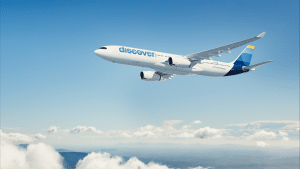
Bodrum, Korfu & mehr – die Discover Meilenschnäppchen im Mai

Oslo & mehr – die Brussels Airlines Meilenschnäppchen im Mai
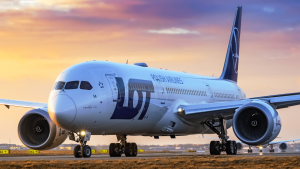
Delhi, Kairo & mehr – die LOT Polish Airlines Meilenschnäppchen Mai 2024
- Registrierung
Passwort vergessen?
Zurück zum Login

Bleibe informiert! Abonniere unsere Push-Benachrichtigungen.
Whether to Use Cash, Credit, or Debit While Traveling
Traveling with money is a task that makes many people uneasy, especially when foreign currency is involved. Carrying cash abroad can be deemed as risky, but credit and debit cards can be notoriously finicky because of bank security and the fees that come with international credit charges can have a major effect on your funds in the long run. So, what's a poor old wandering soul to do?
These are questions to bring up with your bank, of course, but the safest method is perhaps to use them all. In other words: The "don't put all your eggs in one basket" saying applies. Using a mix of cash, credit, debit, and maybe even the odd traveler's check ensures that if the fees for one method are particularly astronomical, your bank account won't take as much of a toll. It also helps if one of your cards or a wad of cash is lost or stolen.
Cash is convenient and relatively cheap to exchange . You can take money from your home country into a foreign bank almost anywhere in the world and they'll easily exchange it without the worry of tiny bank fees adding up, pesky ATM fees, or losing out on a bad exchange rate. Alternatively, though, carrying coins and paper money is a security risk. When stolen, it cannot be replaced. The key is to have just a small amount of backup cash stashed away in a safe money belt.
If properly protected, a debit card can't be stolen as easily as cash. Debit cards can be used across many countries , although you should notify your bank of international usage first. Better yet, they can be used to retrieve cash—if the occasion calls for it—at an ATM and are all-around less bulky than carrying cash on your hip.
Be aware, however, that not all ATM machines (especially in more rural places) accept foreign debit cards and certainly not every restaurant and store will, either. Shops have been known to ban foreign debit altogether, so carrying a form of backup currency is always wise. Additionally, using debit regularly could lead to an accumulation of transaction fees. At ATMs, for instance, you'll be charged for converting funds into local currency and , if outside of your network, an additional ATM fee.
You may also need to change your PIN before you go, seeing as some countries' ATM machines can't process PINs with more than four digits. Others can't process ones with zeros. Lastly, before swiping your debit card abroad, educate yourself on ATM scams and learn how to avoid them.
Credit Cards
Like debit cards, credit cards are small and packable. They're replaceable and reliable. In fact, some hotels only accept authorization via credit, so this may be an integral method for you. MasterCard and Visa are widely accepted in other countries and you can use them for ATM transactions, too.
The bad news is that unscrupulous merchants can steal your credit card information and while you can dispute fraudulent charges and eventually get them removed from your account, the process can be grueling. You may need to cancel your card mid-trip to resolve fraud issues. It would be wise to also find out what your bank charges in international transaction fees before swiping your card haphazardly.
Prepaid Travel Cards
Prepaid travel cards like Visa TravelMoney look like credit cards but function more like a modern version of travelers checks. You simply load the card with money from your bank account and use it like a debit card at ATMs or like a credit card at merchants and hotels. They're locked with a PIN number, as your other cards are, for extra security, but they can sometimes be difficult to use at ATM machines. Additionally, fees for foreign currency transactions can be extremely high—as much as 7 percent in some cases.
Traveler's Checks
Although traveler's checks are historically secure and can be replaced if lost or stolen, they're hardly used anymore. Not many merchants or banks still accept them, even if they're written in their local currency. Merchants may charge you an additional fee for paying with traveler's checks, which are expensive to purchase in the first place (on top of the standard service fee, you'll also pay for shipping if you order them online). Not only are they one of the bulkiest means of payment to carry with you, they're one of the least useful, too.
Currency in Egypt: Everything You Need to Know
9 Tips for Using Your ATM card in Europe
The 11 Best Travel Money Belts of 2024
A Traveler's Guide to the Yen
What's the Best Way to Bring Spending Money to the UK?
Tips for Changing Your Money Abroad
Currency Converters
Using ATMs in Peru
Exchanging Currency in France
Tips for Using Debit and Credit Cards in Canada
Using Your Debit Card Overseas
Money in Germany
What Is an Exchange Rate and What Does It Mean?
How to Keep Your Money Safe While Traveling
How to Exchange Money in China
The 7 Best Passport Holders of 2024, Tested and Reviewed
Prepaid Kreditkarten
Services & Support
Swiss Bankers

Die Prepaid Kreditkarte für Reisen.

Die Prepaid Karte für jeden Tag.

Zur Übersicht
Wichtige Information:
Am 10. April 2024 wurden das Kundenportal sowie der Web-Zugriff auf das Kartenkonto eingestellt. Bitte laden Sie die Swiss Bankers App herunter, um weiterhin uneingeschränkten Zugriff auf alle Dienste zu haben.
Land auswählen:
Sprache auswählen:
PIN ändern Immer sicher: selbst bei Verlust der Karte Karte aufladen Swiss Bankers App

Travel - Die kostenlose Prepaid Kreditkarte für Reisen.
Travel von Swiss Bankers ist die sichere Prepaid Kreditkarte für Ihre Reisen. Sie erhalten die Karte sofort, können Guthaben nach Bedarf laden und weltweit bezahlen – ohne Jahresgebühr und mit voller Kostenkontrolle.
Ihre Vorteile mit Travel, der neuen Travel Cash Karte.
Ohne jahresgebühr..
Reisen Sie unkompliziert und ohne Risiko mit der aufladbaren Travel Reisekarte ohne Jahresgebühr und mit kostenloser Ersatzkarte bei Verlust.
Weltweit bezahlen.
Die Karte wird in über 70 Millionen Geschäften und Hotels sowie beim Online-Bezahlen akzeptiert. Bargeldbezüge sind an Bancomaten im In- und Ausland möglich. Bei Fragen hilft Ihnen unser kostenloser Kundenservice weiter.
Sofort erhältlich.
Travel ist bei verschiedenen Verkaufsstellen und bei fast allen Banken schnell und ohne Bonitätsprüfung erhältlich – für alle Personen ab 16 Jahren und mit Vollmacht der Eltern schon ab 12 Jahren. Wahlweise in CHF, EUR oder USD.
Einfaches Aufladen.
Ihre Karte können Sie bei der Verkaufsstelle , mit der Swiss Bankers App , in unserem Kundenportal oder per E-Banking mit Beträgen bis maximal CHF/EUR/USD 10’000 aufladen.
Bis zu 10 % Cashback bei Booking.com.
Sparen Sie bis zu 10% auf Booking.com bei über 28 Mio. Unterkünften weltweit – zusätzlich auf vergünstigte Unterkünfte und dem Genius-Treueprogramm.
Swiss Bankers App.
Die Swiss Bankers App bietet praktische Funktionen wie Überblick über Guthaben und Ausgaben, Karte aufladen, sofortige Sperrung bei Verlust, sofortiger digitaler Kartenersatz in der App und mehr. Profitieren Sie auch vom Mobile Payment . Sie bezahlen bequem mit Ihrem Smartphone oder Ihrer Smartwatch, z.B. via Apple Pay oder Samsung Pay.
Länderinformationen.
Nützliche Informationen zu Ihrem Reiseziel.
Weltweit immer sicher.
Bei Verlust oder Diebstahl wird Ihnen die Karte inklusive Guthaben weltweit kostenlos mit Kurierservice ersetzt. Digital in der Swiss Bankers App hinterlegte Karten werden umgehend neu aktiviert.
Mehr zur Sicherheit
Gebühren und Karteninformationen.
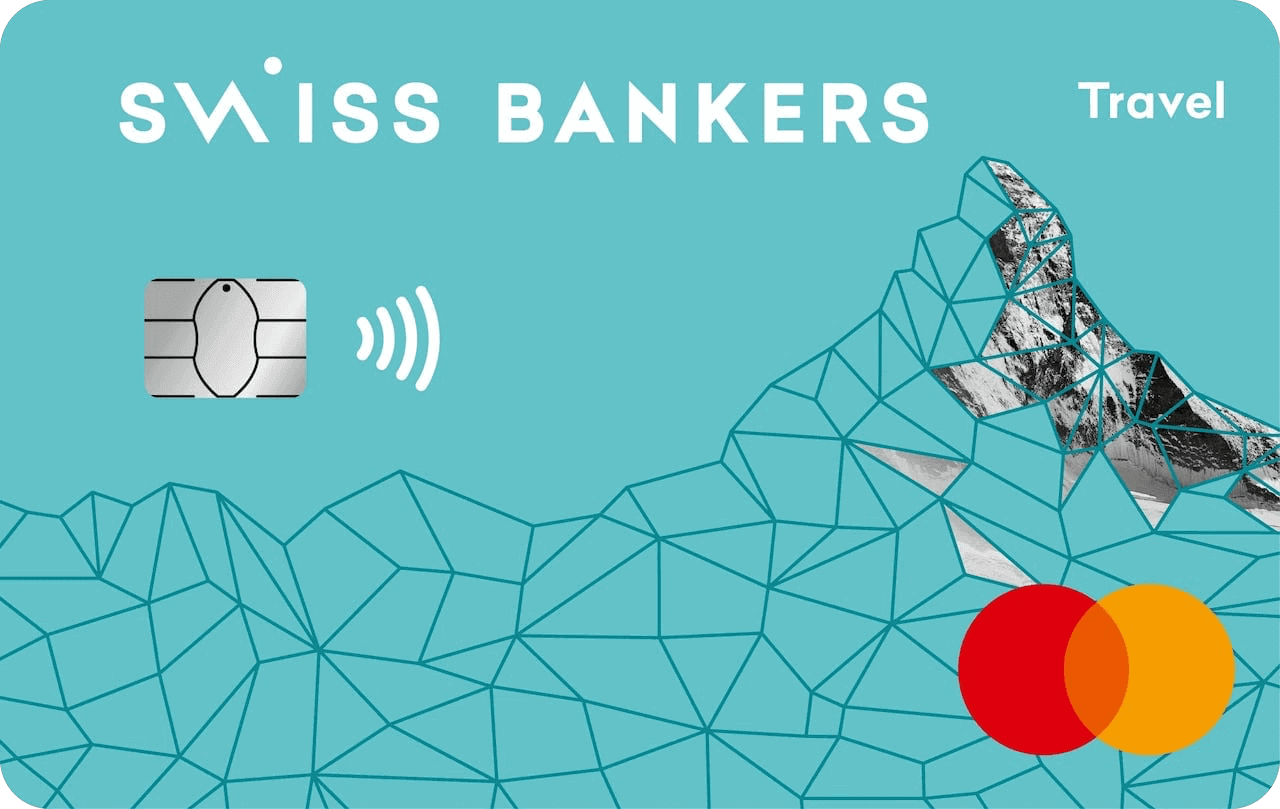
Kartenbeitrag
Jahresgebühr CHF 45
Monatsgebühr CHF 2.90
1.5% 1 , Karte über Verkaufsstelle bezogen Schnelle Ladung per Kreditkarte / Debitkarte (ca. 15min): Zusätzliche Kosten von 1.5% (auf Ladebetrag mit Ladegebühr). Ladung mit PostFinance Karte: Zusätzliche Kosten von CHF 6. Tipp: Die Aufladung über E-Banking erfolgt in der Regel innerhalb von einem Arbeitstag. Es fallen keine zusätzlichen Kosten zu den Ladegebühren an.
Keine, Karte bei Swiss Bankers bezogen Keine 1 , Karte über Verkaufsstelle bezogen Schnelle Ladung per Kreditkarte / Debitkarte (ca. 15min): 1.5%. Ladung mit PostFinance Karte: CHF 6. Tipp: Die Aufladung über E-Banking erfolgt in der Regel innerhalb von einem Arbeitstag und ist kostenlos 1 .
Keine Schnelle Ladung per Kreditkarte / Debitkarte (ca. 15min): 1.5%. Ladung mit PostFinance Karte: CHF 6. Tipp: Die Aufladung über E-Banking erfolgt in der Regel innerhalb von einem Arbeitstag und ist kostenlos. 1
1.5 % 1 Schnelle Ladung per Kreditkarte / Debitkarte (ca. 15min): Zusätzliche Kosten von 1.5% (auf Ladebetrag mit Ladegebühr). Ladung mit PostFinance Karte: Zusätzliche Kosten von CHF 6. Tipp: Die Aufladung über E-Banking erfolgt in der Regel innerhalb von einem Arbeitstag. Es fallen keine zusätzlichen Kosten zu den Ladegebühren an.
Abhängig von den Konditionen 1
Keine 1 Schnelle Ladung per Kreditkarte / Debitkarte (ca. 15min): 1.5%. Ladung mit PostFinance Karte: CHF 6. Tipp: Die Aufladung über E-Banking erfolgt in der Regel innerhalb von einem Arbeitstag und ist kostenlos.
Lademöglichkeiten
- Banküberweisung / E-Banking - Kreditkarte / Debitkarte / PostFinance Karte - Verkaufsstellen Tipp: Öffnen Sie die Swiss Bankers App und drücken Sie auf «Laden». Sie finden dort Ihre persönlichen Zahlungsinformationen. Alternativ können Sie diese auch im Kundenportal einsehen.
Gebühr pro Zahlung
CHF 1 / EUR 1 / USD 1
Bearbeitungsgebühr Währungswechsel
Bargeld-Bezugsgebühr in der Schweiz
CHF 5 / EUR 5 / USD 5
Nicht verfügbar
Abhängig von den Konditionen
Bargeld-Bezugsgebühr Ausland
CHF 7.50 / EUR 7.50 / USD 7.50
Ersatzkarte
Weltweit kostenloser Ersatz bei Verlust oder Diebstahl in der Regel innerhalb von drei Arbeitstagen, inklusive Kartenrestwert. Umgehender Ersatz digital hinterlegter Karten.
Ersatz bei Verlust oder Diebstahl inklusive Kartenrestwert gegen die Gebühr von CHF 20.00 in der Schweiz und CHF 50.00 im Ausland. Umgehender Ersatz digital hinterlegter Karten.
Umgehender Ersatz bei Verlust oder Diebstahl inklusive Kartenrestwert gegen die Gebühr von CHF 20.00.
abhängig von den Konditionen
Ersatz bei Verlust oder Diebstahl inklusive Kartenrestwert gegen eine Gebühr von CHF 20.00 in Deutschland und CHF 50.00 ausserhalb Deutschlands. Umgehender Ersatz digital hinterlegter Karten.
Kartenaufladung
Min. CHF 100 / EUR 100 / USD 100 Max. CHF 10 000 / EUR 10 000 / USD 10 000
Min. CHF 100 Max. CHF 10 000
Min. CHF 100 / EUR 100 / USD 100 Max. CHF 20 000 / EUR 20 000 / USD 20 000
Kartenwährungen
CHF / EUR / USD
Einsatzmöglichkeiten
- Bancomat (Bargeldbezug) - Bezahlterminals/Automaten - Kontaktloses Bezahlen - Internet/Online Zahlungen
- Bezahlterminals/Automaten - Kontaktloses Bezahlen - Internet/Online Zahlungen
Mobile Payment
- Apple Pay - Samsung Pay - Google Pay - Garmin Pay, Fitbit Pay, SwatchPAY!
In EUR / USD: Verkaufsstellen aufrufen
Online Shop öffnen , Banken, SBB Verkaufsstellen aufrufen
Via Swiss Bankers App
Ausgewählte Privatbanken
Verkaufsstellen aufrufen
Anzahl Karten pro Person
5 Karten über die Verkaufsstellen
1 Karte über Swiss Bankers 5 Karten über die Verkaufsstellen
Swiss Bankers App Funktionen
- Karte mit Geld aufladen - Karte sperren - Geo-Blocking - Ausgaben Statistik - Viele weitere Funktionen
- Karte sperren - Geo-Blocking - Ausgaben Statistik - Viele weitere Funktionen
Verkaufsstellen
1 Ladegebühr kann je nach Vertriebspartner abweichen
Alles anzeigen
Bis zu 10% Cashback auf Booking.com – zusätzlich auf vergünstigte Unterkünfte!
Sparen Sie bis zu 10% zusätzlich bei 28 Mio. Unterkünften weltweit mit der Travel Karte
Gilt auch bei bestehenden Rabatten wie z. B. dem Genius-Treueprogramm
Die Travel Karte ist kostenlos und hat keine Jahresgebühr
Buchen Sie jetzt Ihre nächste Unterkunft mit der Travel Karte über die Swiss Bankers Buchungsseite
Wichtig: Der Cashback ist nur über die Swiss Bankers Buchungsseite verfügbar und sofern Sie die Unterkunft mit der Travel Karte bezahlen. Sie benötigen zudem ein Konto bei Booking.com.
Jetzt zur Swiss Bankers Buchungsseite**
** Bitte beachten Sie, dass Booking.com nicht dem Bankkundengeheimnis unterliegt und Kundendaten ausserhalb der Schweiz übermittelt werden können. Auf der Webseite bzw. App von Booking.com gelten die Allgemeinen Geschäftsbedingungen von Booking.com. Die Swiss Bankers Prepaid Services AG übernimmt keine Haftung bei Nutzung der Angeboten von Booking.com.
Häufige Fragen.
Antworten auf allgemeine Fragen zu PIN-Code, Sicherheit, Mobile Payment sowie Services finden Sie unter Häufige Fragen allgemein .
Wo ist die Prepaid Karte Travel erhältlich?
Travel erhalten Sie bei unseren Verkaufsstellen .
Wie viele Karten darf ich besitzen?
Maximal 5 Karten über Verkaufsstellen , diese Anzahl variiert jedoch je nach Vertriebspartner.
In welchen Währungen gibt es Travel?
Travel ist in Euro, US-Dollar oder in Schweizer Franken erhältlich.
Mehr anzeigen
Alles noch einfacher mit der Swiss Bankers App.
Mit den praktischen Funktionen der Swiss Bankers App wird der Umgang mit Travel noch bequemer und übersichtlicher.

Informationen über die Travel Prepaid Kreditkarte
Suchen Sie eine gratis Prepaid Kreditkarte für Reisen?
Sie wollen mit einer gratis Kreditkarte verreisen und in tollen Hotels, vom einfachen Bed & Breakfast bis zum 5-Sterne-Luxushotel, zu besten Konditionen übernachten? Dann haben wir die Lösung für Sie: Die Travel Karte von Swiss Bankers bietet alles auf einmal. Die Travel Karte ist kostenlos und gleichzeitig sparen Sie bis zu 10% auf Booking.com bei über 28 Mio. Unterkünften weltweit – zusätzlich auf vergünstigte Unterkünfte! Ob für Reisen in der Schweiz, City-Trips in Europa oder USA-Reisen – die Travel ist der perfekte Reisebegleiter und in den Währungen CHF, EUR und USD erhältlich.
Wie kann ich mit der Travel Geld sparen?
Wenn Sie gern in Hotels übernachten, ist die kostenlosen Travel genau die richtige Wahl. Vom Hostel bis zum luxuriösen 5-Sterne-Hotel - in mehr als 600 Hotels in der Schweiz, Deutschland, Österreich und Italien bekommen Sie mit der Travel bis zu 50 % Rabatt. Dank der integrierten Hotelcard-Mitgliedschaft sparen Sie bei rechtzeitiger Buchung Ihrer Reisen bares Geld.
Mit Ihrer Travel Karte können Sie sämtliche Hotelcard-Vorteile nutzen. Das Gute daran ist, dass Swiss Bankers für Sie die Hotelcard-Mitgliedschaft übernimmt – so sparen Sie sich die reguläre Hotelcard-Gebühr in Höhe von CHF 99 pro Jahr. Es steht Ihnen frei, ob Sie als Travel Karteninhaber das Angebot an vergünstigten Hotelübernachtungen nutzen wollen oder nicht. Nutzen Sie diesen Vorteil ohne zusätzliche Kosten und sparen Sie bei einer künftigen Hotelbuchung bares Geld! Einfach Ihre Travel Karte hier registrieren , Ihr Hotel über die Plattform Hotelcard.com buchen und vor Ort mit der Travel Karte die Hotelrechnung bezahlen.
Warum ist die Travel Prepaid Kreditkarte ideal für Reisende?
- Bis zu 50 % Rabatt in mehr als 600 Hotels – vom Hostel bis zum 5 Sterne Hotel
- Kostenlose Ersatzkarte weltweit (in der Regel innerhalb von 3 Arbeitstagen)
- Keine Jahresgebühr
- In den Währungen CHF, EUR und USD erhältlich ohne Wechselgebühren
- Über 70 Millionen Akzeptanzstellen weltweit
- Volle Kostenkontrolle über die Swiss Bankers App
- Mobile Payment mit Apple Pay, Google Pay, Samsung Pay u.v.m.
- Keine Bonitätsprüfung
- Für alle ab 16 Jahren erhältlich (mit Zustimmung eines gesetzlichen Vertreters ab 12 Jahren)
Für wen ist die kostenlose Prepaid Kreditkarte geeignet?
Wenn Sie eine sichere Bezahlkarte ohne Jahresgebühr suchen, mit der Sie Ihre Ausgaben unter Kontrolle haben, ist die Travel Prepaid Kreditkarte genau die Richtige. Sie ist ideal für alle, die keine fixen Gebühren bezahlen und die Karte weltweit auf Reisen einsetzen möchten. Bei Verlust wird die Karte weltweit kostenlos inkl. Guthaben in ein bis zwei Tagen per Kurier ersetzt. Digital kann eine Ersatzkarte sogar sofort auf ihrem Smartphone verfügbar gemacht werden.
Nur beim Aufladen und Einsetzen der Karte fallen Gebühren an. Wenn Sie gelegentlich eine Prepaid Kreditkarte benötigen, sind Sie mit der Travel bestens bedient. Mit der kostenlosen Swiss Bankers App profitieren Sie von weiteren Vorteilen: Zu jeder Zahlung erhalten Sie eine Benachrichtigung in Echtzeit und behalten so alle Ausgaben im Blick und Ihr Budget unter Kontrolle. Sie können mittels Mobile Payment mit dem Smartphone bezahlen, jederzeit Ihre PIN ändern und Ihre Karte mit Sicherheitseinstellungen maximal schützen, wie z. B. das Sperren von Ländern.
Welche Vorteile hat eine Karte ohne Jahresgebühr?
Wenn Sie noch nicht so genau wissen wann und wie oft Sie die Karte einsetzen möchten, ist die Travel genau die richtige Karte für Sie. Mit der Travel Prepaid Kreditkarte haben Sie keine Fixkosten. Es fallen nur bei der Nutzung Gebühren an. Auch wenn Sie noch nicht so genau wissen, ob und wann Sie eine Prepaid Kreditkarte benötigen, ist es durchaus sinnvoll, die Travel kostenlos online zu beantragen. Benötigen Sie die Karte eines Tages, müssen Sie diese nur aufladen und diese ist dann sofort einsatzbereit.
Fallen Transaktionsgebühren an?
Die Travel Prepaid Kreditkarte ist ideal für alle, die ihre Karte nur gelegentlich nutzen. Das Guthaben kann je nach Bedarf aufgeladen werden. Dafür wird i. d. R. eine Ladegebühr von 1.5 Prozent des geladenen Betrages erhoben (bei einigen Verkaufsstellen sind Abweichungen möglich). Wird die Karte nicht weiter genutzt, fallen keine weiteren Kosten an. Nur wenn Sie mit der Karte bezahlen, belastet Swiss Bankers 1 CHF Gebühr pro Transaktion (oder je nach Kartenwährung 1 EUR bzw. 1 USD).
In welchen Währungen ist die Prepaid Kreditkarte verfügbar?
Sie können die Karte nicht nur in Schweizer Franken (CHF), sondern auch in Euro (EUR) und US-Dollar (USD) bestellen. Die Ladegebühr ist für alle Währungen gleich.
Wie kann ich die Karte aufladen?
Die Travel können Sie schnell und bequem in den Filialen des Vertriebspartners aufladen, bei dem Sie die Karte bestellt oder erworben haben. Viele Swiss Bankers Partnerbanken bieten das sofortige Aufladen im E-Banking an. Zusätzlich können Sie die Travel Karte über die Swiss Bankers App oder das Kundenportal per Banküberweisung oder mittels Kreditkarte, Debitkarte oder PostFinance Karte aufladen. Bei der Aufladung per Kreditkarte oder über PostFinance, ist das Guthaben innerhalb weniger Minuten auf der Karte verfügbar. Eine Einzahlung per Banküberweisung kann zumeist noch am gleichen Arbeitstag Ihrer Karte gutgeschrieben werden.
Mit wie viel Guthaben kann ich die Karte aufladen?
Der minimale Ladebetrag beträgt EUR/USD/CHF 100, der maximale Ladebetrag bzw. der maximale Kartensaldo beträgt EUR/USD/CHF 10'000.
Wie schnell geht eine Aufladung?
Sie können die Karte einfach und schnell aufladen. Per Banküberweisung steht Ihnen das neue Guthaben zumeist noch am gleichen Arbeitstag zur Verfügung. Bei Aufladung über Kreditkarte oder Postfinance Karte wird der Ladebetrag innerhalb weniger Minuten Ihrer Karte gutgeschrieben.
Wer kann die Karte aufladen?
Eine Einzahlung per Banküberweisung kann uneingeschränkt entweder durch Sie oder über eine andere Person erfolgen. Das Aufladen über Kreditkarte oder PostFinance ist nur mit einer auf Sie ausgestellten Karte möglich. Alternativ können Sie sich von einem anderen Swiss Bankers Karteninhaber auch Geld per Send – unserem innovativen Geldtransferservice – jederzeit zusenden lassen.
Wie werden die hohen Sicherheitsstandards gewährleistet?
- Mit der Swiss Bankers App können Sie die Karte für bestimmte Länder sperren oder entsperren.
- Der PIN-Code kann jederzeit in der Swiss Bankers App geändert werden.
- Bei Verlust einfach und schnell die Karte per Swiss Bankers App sperren. Eine neue Travel Karte mit Ihrem vorhandenen Guthaben senden wir Ihnen weltweit kostenlos per Kurier innerhalb weniger Tage zu.
- Überwachung verdächtiger Transaktionen rund um die Uhr durch unsere Sicherheits-Experten.
- Bei erkanntem Betrugsverdacht sofortige Benachrichtigung und Sperrung der Karte durch Swiss Bankers.
* Der Cashback ist nur verfügbar, wenn dieser bei der Auswahl der Unterkunft angezeigt wird. Dieser wird erst nach einem Aufenthalt und der Bezahlung der Unterkunft ins Booking.com-Wallet gutgeschrieben. Der Cashback beträgt zwischen 5% und 10%. Das Angebot kann jederzeit innerhalb von 5 Tagen durch Booking.com geändert oder eingestellt werden. Barauszahlung und Rechtsweg sind ausgeschlossen.
Geldtransfer
Travel Deals
Stellenangebote
Geschäftsberichte
Rechtliches
Datenschutz
Cookie Richtlinie
Land & Sprachen
Schweiz Liechtenstein
DE FR IT EN
© Swiss Bankers 2024
Mitglied bei der Schweizerischen Bankiervereinigung
You are using an outdated browser. Please upgrade your browser to display this website and improve your experience.

- GENERAL TRAVEL
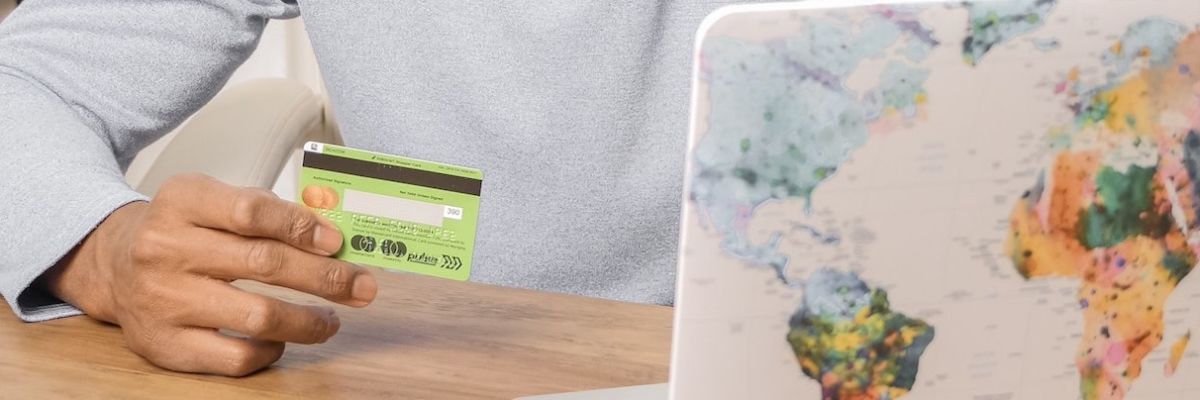
Should You Use Cash or Credit Card When Traveling?

Julie fell in love with traveling in Costa Rica which led to years of volunteering, teaching, and...
- button]:border-none [&>button]:bg-white [&>button]:hover:cursor-pointer [&>button]:hover:text-cyan-400"> button]:hover:text-cyan-400 [&>button]:bg-white hover:cursor-pointer" height="1em" width="1em" xmlns="http://www.w3.org/2000/svg">
Traveling to a new place can be exhilarating, but also intimidating. You’ve most likely spent a good chunk of change (not to mention time) preparing for your trip, from booking transportation , to activities , to accommodation . After that, you’ll also need to spend a bit more time thinking through how you’ll handle expenses while abroad, and whether to use cash or credit card when traveling. Trust us: The best time to start thinking about money is before you’re spending it!
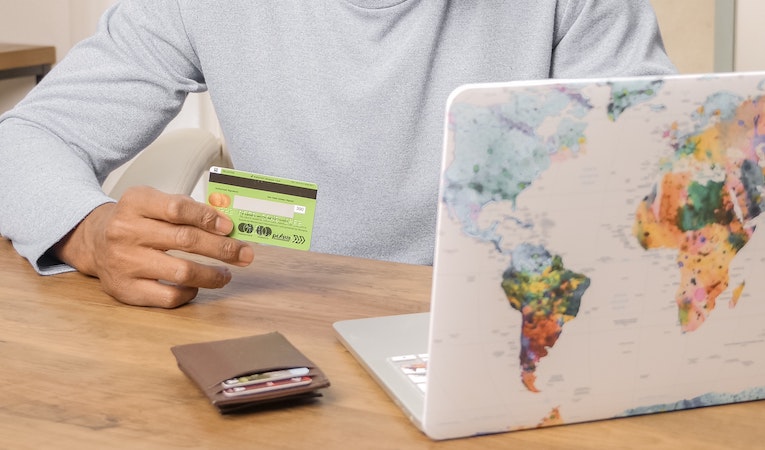
Time to do some budgeting and calculations!
Just a few of the additional costs of travel to keep in mind before, during, and after your trip include exchange rates, foreign transaction fees, and ATM fees. All that considered, you’ll need to decide for yourself whether it’s better to use cash or credit cards when traveling.
READ MORE: Traveling on a Student Budget? You Need This Budget Planner
Is it better to travel with cash or card.
Okay, let’s get right down to it. Is is better to travel with a credit/debit card or local cash? Lots of people think it’s better to take cash out of local ATMs when you arrive at your destination, in order to save on exchange fees and credit card fees. On the flipside, others prefer using a credit card while traveling because it can be more reliable and earn you points on your account.
So, is one better than the other? It depends. When deciding to travel with cash or card abroad, consider the following pros and cons:
Pros and cons of using a credit card abroad
- Pro : May offer a better exchange rate than when using cash
- Pro : If lost or stolen, a card is easier to replace and potentially get your money back
- Pro : More secure than carrying cash
- Pro : Score points on credits that can be used for future travel and other purchases
- Con : If you forget to alert your bank, your charges could be flagged as fraudulent (and they may shut off your card, leaving you stranded)
- Con : You may be charged international transaction fees on every purchase
Pros and cons of using cash while traveling
- Pro : Avoid international transaction fees on your purchases
- Pro : You’ll always have money available for tips or cash-only vendors
- Pro : It supports the local economy more directly
- Pro : You can order local currency in advance from your bank or organizations like AAA
- Con : Less secure than carrying a card (lost or stolen cash is most likely gone forever)
- Con : ATM fees and account fees for cash withdrawls abroad can be huge, especially at out-of-network ATMs
- Con : Difficult to know how much you’ll need, potentially leaving you stranded if ATMs or Western Union are scarce
READ MORE: 5 Best Credit Cards for Travel Rewards
Is it cheaper to use credit cards or cash abroad.
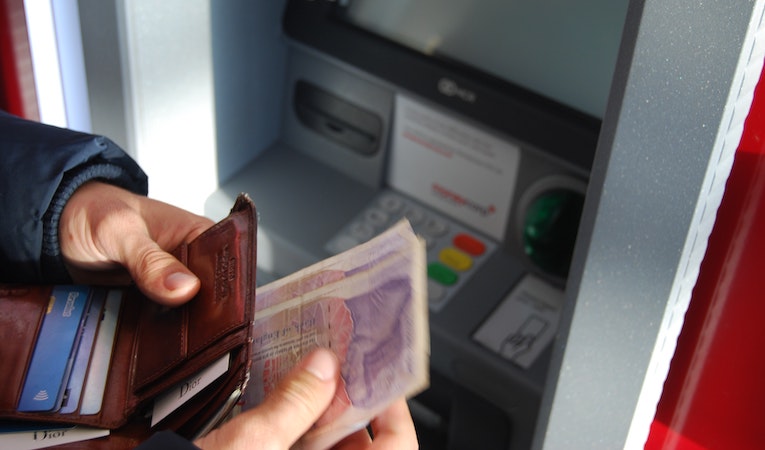
Whether cash or credit is cheaper comes down to exchange rates and transaction fees.
Since many of the pros of using cash or card depend on exchange rates, you’ll want to first understand what they are and how they can determine if it’s cheaper to use credit cards or cash during your travels.
For those who aren’t familiar, exchange rates can be defined as “the value of one currency for the purpose of conversion to another.” Anywhere you travel that doesn’t use the same currency you use at home, you’ll need to convert money so you can spend it.
In some countries, you’ll be able to use your own currency which the vendor then exchanges, but it’s best to take the “when in Rome” attitude, and make the exchange yourself at a kiosk, hotel, or other reputed place of business that offers exchange services.
Keep in mind that exchange rates vary by location. For example, airport kiosks don’t often have the best rates, so it’s a good idea to shop around or go to a local bank instead. It’s very easy to Google what a good rate would be.
Additionally, when you use a credit card, you must also keep in mind exchange rates. Some cards may have better rates than others (this information is also searchable).
This brings us to international and foreign transaction fees! Even with a good exchange rate, you’ll often be charged a foreign transaction fee when making credit card purchases abroad. Luckily, some credit card companies have partnerships with banks abroad, and offer lower (or zero) fees, especially credit cards intended for travel .
It’s best to do some research prior to your trip to see which of your credit cards is better to use (or if this time around you should stick to cash)!
Pro tip : Some vendors will ask you if you want to pay in local or foreign currency when you’re making a credit card purchase. It’s best to select local currency, as that will get you the closest to the fair market rate!
What’s the best way to get cash when traveling abroad?
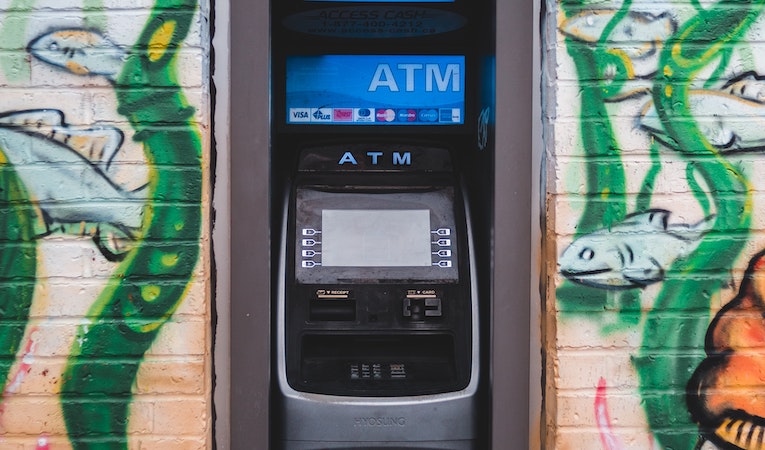
Be sure to research how easy it is to find an ATM in your destination.
Most likely the easiest way to get cash when traveling is by using the same debit card you’d use at home at a local ATM . Just as with credit card foreign transaction fees, when you use your debit card to take out cash at the ATM, you may be charged a fee. Usually, it’s $2 to $7 dollars on any cash withdrawal.
That being said, it’s better to withdraw a large amount of cash at once to avoid multiple fees . The percentage charged by your bank on international withdrawals is most likely fixed, so by making larger withdrawals, you’re actually getting more bang for your buck where ATM fees are concerned.
Avoid scams by going to an actual bank to withdraw funds. Make sure you’re checking that you’re not being charged an exorbitant fee to withdraw your cash, and there isn’t a large minimum amount (you don’t want to carry too much money around with you with the risk that it will be lost or stolen).
Again, your bank may have a partner in the country you’re traveling to where you can withdraw cash with no fee, so try to find out if this is the case prior to jetsetting!
Another reason to get in touch with your bank prior to leaving your home country is to avoid the hassle of them potentially flagging any of your international purchases as fraudulent. Some banks will flag an international transaction until you verify you are indeed out of the country , which may delay being able to use your cards.
Honestly, it’s a great idea to pre-order some cash in the local currency through a travel agency (like AAA) to make sure you have a backup method of payment, at least for your first day or two abroad— especially if you won’t have phone service when you land . No phone service and no cash on hand will leave you stressed AF, especially if you’re landing in the middle of the night.
If for any reason you are not able to use a credit card abroad, other options include prepaid cards from Visa, Mastercard, or other large credit card companies, or even travelers’ checks. While it’s not ideal to carry around large amounts of cash, travelers’ checks can be refunded if lost or stolen.
Should I carry local cash when traveling?

It’s always a good idea to have some local cash on hand.
While credit cards are easy to carry and more secure than cash, you should always have some local cash on you when traveling. It’s just good sense. Besides the fact that some local shops and vendors won’t accept credit cards, having some cash provides a safety net in case your bank shuts off your card for any reason. Plus, cash tips are always more appreciated than digital.
How much cash should I travel with?
How much cash you should travel with largely depends on your destination: How much is the cost of living? Is tipping expected? How long will you be staying? Do many of the activities you want to do or places where you want to do business accept credit cards or online booking?
These are all questions you should ask yourself when determining to use cash or card when traveling, and just how much cash you should travel with. But, if you want a number to work with, we suggest having $200 on hand when you land in your destination , just to be safe. If you decide to go cash-only for your entire trip abroad, then maybe factor in a bit more for your first few weeks.
Keep in mind you’ll also want a safe place to keep your cash. Take with you what you need for the day, perhaps in a money belt or other secure item, and leave the rest in your accommodation, ideally locked up. Most hostels and hotels around the world provide safes or lockboxes in their rooms, so you’ll be golden.
Plan your next trip with GoAbroad.com’s Travel Resources Hub
Cash or credit card it’s up to you.
So, should you use cash or credit cards when traveling? A mix of both may be the answer! If you do a bit of research prior to your trip, you’ll be able to safely estimate how much cash you should bring with you, how much and where to withdraw, and what your bank and credit card company’s policies are regarding international expenditures.
Ready to go abroad? Talk to our FREE Online Advisor and get 5 personalized program matches

Explore Programs on GoAbroad.com
Related Articles

By Cecilia Polanco | 3 days ago

By GoAbroad Writing Team | 3 days ago

By GoAbroad Writing Team | 4 days ago

By Danielle DeSimone | 4 days ago
Popular Searches
Study abroad programs in italy, study abroad programs in spain, marine biology study abroad programs, study psychology abroad, fall study abroad 2024, spring study abroad programs, recommended programs.

2569 reviews
International TEFL Academy

1682 reviews
International Volunteer HQ [IVHQ]

1919 reviews
MAXIMO NIVEL

563 reviews
Intern Abroad HQ
For Travelers
Travel resources, for partners.

© Copyright 1998 - 2024 GoAbroad.com ®
- Study Abroad
- Volunteer Abroad
- Intern Abroad
- Teach Abroad
- TEFL Courses
- Degrees Abroad
- High School Abroad
- Language Schools
- Adventure Travel
- Jobs Abroad
- Online Study Abroad
- Online Volunteer Programs
- Online Internships
- Online Language Courses
- Online Teaching Jobs
- Online Jobs
- Online TEFL Courses
- Online Degree Programs
Prepaid credit cards
Money transfer
Services & Support
Swiss Bankers

The prepaid credit card for travel.

The prepaid credit card for daily life.

The prepaid credit card for discerning customers.

The prepaid credit card for companies.
To the overview
Important information:
The customer portal and web access to the card account were discontinued on 10 April 2024. Please download the Swiss Bankers App to continue to have unrestricted access to all services.
Select country:
Select language:
Change your PIN What to do in case of loss or theft Top up your card Swiss Bankers App
Travel - the free prepaid credit card for travel
The Swiss Bankers Travel card is the secure prepaid card for use while travelling. You receive the card immediately, can add money to your balance as required and can pay worldwide – without an annual fee and with complete control in terms of spending limits.
The Travel Prepaid Card in CHF, EUR and USD is also available at over 200 outlets .
How you benefit from Travel, the new Travel Cash card.
With no annual fee..
Travel with ease and risk-free with the prepaid Travel card with no annual fee and with a free replacement card if the card should ever go missing.
Pay worldwide.
The card is accepted in more than 70 million shops and hotels throughout the world as well as for online payment. You can withdraw money at cash machines in Switzerland and abroad. If you have any questions, our free client service will be happy to assist you.
Available immediately.
The Travel card is available quickly and without a credit check in our online shop , at various outlets and at nearly all banks as well as branches of SBB – to all persons aged 16 and over and, with parental authorisation, also to persons aged 12 to 15. You choose whether the card is denominated in CHF, EUR or USD.
Easy to top up.
You can add money to your card in amounts up to CHF/EUR/USD 10’000 at outlets , using the Swiss Bankers app , on our client portal or using e-banking.
Up to 10% cashback at Booking.com.
Save up to 10% on Booking.com on over 28 million accommodation listings worldwide - plus discounted accommodation and the Genius loyalty program.
Swiss Bankers app.
The Swiss Bankers app includes practical features such as balance and spending overviews, adding money to the card balance, immediate card blocking in the event of loss, immediate digital card replacement in the app and more. Benefit from mobile payments . You pay conveniently with your smartphone or your smartwatch, for example via Apple Pay or Samsung Pay.
Country Information.
Useful information about your travel destination.
Safe and secure worldwide – always.
In the event of loss or theft, the card and its credit balance will be replaced by courier service worldwide at no charge. Cards stored digitally in the Swiss Bankers app can be reactivated immediately.
More about security
Fees and card information.

Annual fee: CHF 45
Monthly fee: CHF 2.90
1.5%, for cards obtained from Swiss Bankers 1.5% 1 , for cards obtained via outlets Fast charging by credit card/debit card (approx. 15min): Additional costs of 1.5% (on charging amount with charging fee). Charging with PostFinance card: Additional costs of CHF 6. Tip: When you top up your card via online banking, your credit is generally available in one working day. There are no further costs in addition to the top-up fee 1 .
None, for cards obtained from Swiss Bankers None 1 , for cards obtained via outlets Fast charge by credit card/debit card (approx. 15min): 1.5%. Charge with PostFinance card: CHF 6. Tip: It’s free to top up your card via online banking, and your credit is generally available in one working day 1 .
None Fast charge by credit card/debit card (approx. 15min): 1.5%. Charge with PostFinance card: CHF 6. Tip: It’s free to top up your card via online banking, and your credit is generally available in one working day.
1.5 % 1 Fast charging by credit card/debit card (approx. 15min): Additional costs of 1.5% (on charging amount with charging fee). Charging with PostFinance card: Additional costs of CHF 6. Tip: When you top up your card via online banking, your credit is generally available in one working day. There are no further costs in addition to the top-up fee.
Subject to conditions 1
None 1 Fast charge by credit card/debit card (approx. 15min): 1.5%. Charge with PostFinance card: CHF 6. Tip: Charge your card via e-banking (2-3 working days), so there are no additional costs.
Ways to top up your card
- Bank transfer/e-banking - Credit card/debit card/PostFinance card - Outlets Tip: To find your personal payment details, open the Swiss Bankers app and select “Top-up.” You can also view your payment details in the customer portal .
Charge per payment
CHF 1 / EUR 1 / USD 1
Processing fee foreign country
ATM withdrawal fee in Switzerland
CHF 5 / EUR 5 / USD 5
Subject to conditions
ATM withdrawal fee abroad
CHF 7.50 / EUR 7.50 / USD 7.50
Replacement card
Free replacement worldwide in case of loss or theft, usually within three working days, including the remaining card balance. Immediate replacement of cards stored digitally.
Replacement in case of loss or theft, including the remaining card balance, for a fee of CHF 20.00 in Switzerland and CHF 50.00 abroad. Immediate replacement of cards stored digitally.
Immediate replacement in case of loss or theft, including the remaining card balance, for a fee of CHF 20.00.
Replacement in case of loss or theft including remaining card value for a fee of CHF 20.00 in Germany and CHF 50.00 outside Germany. Immediate replacement of cards stored digitally.
Card top-up
Min. CHF 100 / EUR 100 / USD 100 Max. CHF 10 000 / EUR 10 000 / USD 10 000
Min. CHF 100 Max. CHF 10 000
Min. CHF 100 / EUR 100 / USD 100 Max. CHF 20 000 / EUR 20 000 / USD 20 000
Card currencies
CHF / EUR / USD
Use options
- ATM - Payment terminals / machines - Contactless payment - Internet / online payments
- Payment terminals / machines - Contactless payment - Internet / online payments
Mobile payment
- Apple Pay - Samsung Pay - Google Pay - Garmin Pay, Fitbit Pay, SwatchPAY!
Availability
In CHF: To the online shop In EUR / USD: To the outlets
To the online shop, Banks, SBB To the outlets
Via Swiss Bankers app
Selected private banks
To the outlets
Maximum number of cards per person
One card directly from Swiss Bankers Five cards via our outlets
Swiss Bankers App Features
– Top up your card – Block your card – Geo-blocking – Spending overview – Many other features
– Block your card – Geo-blocking – Spending overview – Many other features
Order Travel
Order Life Digital
1 Top-up fee may vary depending on the distribution partner
1 Top-up fee may vary depending on the distribution partner
Display all
Up to 10% cashback on Booking.com – plus discounted accommodation!
Save up to an additional 10% on 28 million accommodation listings worldwide with the Travel Card
Also applies to existing discounts such as: the Genius loyalty program
The Travel Card is free and has no annual fee
Book your next accommodation now with the Travel Card via the Swiss Bankers booking site
Important: The cashback* is only available via the Swiss Bankers booking site and provided you pay for the accommodation with the Travel Card. You also need an account with Booking.com.
Go to the Swiss Bankers booking page**
** Please note that Booking.com is not subject to banking secrecy and customer data can be transferred outside Switzerland. The Booking.com General Terms and Conditions apply on the Booking.com website or app. Swiss Bankers Prepaid Services AG assumes no liability when using Booking.com's offers.
Frequently asked questions.
Answers to general questions about PIN codes, security, mobile payment and services can be found under Frequently Asked Questions – general .
Where is the prepaid card Travel available?
You can get Travel in the online shop or from a number of banks and at SBB Change sales points. Please visit outlets for a current list of distributors. You can also order a card via the e-banking interface of many major banks.
How many cards can I have?
1 card via the Swiss Bankers online shop . Maximum 5 cards via outlets , but this number varies depending on the distribution partner.
In what currencies is Travel available?
The Travel card is available in euros, US dollars or Swiss francs.
Everything is even easier to do with the Swiss Bankers app.
The practical features of the Swiss Bankers app make using the Travel card even more convenient, with clear presentation of all options and relevant information.

Information about the Travel Prepaid Credit Card
Looking for a free prepaid credit card for travel?
You want to travel with a free credit card and stay in great hotels, from simple bed and breakfasts to five-star luxury hotels, at the best conditions? Then we have the solution for you: The Travel Card from Swiss Bankers offers everything at once. The Travel Card is free and at the same time you save up to 10% on Booking.com at over 28 million accommodation listing worldwide - plus discounted accommodation! Whether for travel in Switzerland, go on city trips in Europe or visit the USA, the Travel card is the perfect travel companion and is available in CHF, EUR and USD.
How can I save money with Travel?
Cashback even on discounted offers!
Benefit from up to 10% cashback* on Booking.com thanks to the Travel Card - even on existing discounts such as the Genius loyalty programme!
Click here for more information
The Travel Card is your exclusive door opener for this offer. Take the opportunity and book your accommodation today.
It's that simple
- Top up your Travel Card with credit
- Book accommodation on the Swiss Bankers booking page
- Pay for your accommodation with your Travel Card
- Receive cashback* after your stay in the Booking.com wallet
Important: The cashback* is only available via the Swiss Bankers booking page and if you pay for your accommodation with your Travel Card. You also need an account with Booking.com.
Why is the Travel prepaid credit card ideal for travelers
- Up to 50% discount in more than 600 hotels – from hostels to five-star hotels
- Free replacement card worldwide (usually within three working days)
- No annual fee
- Available in CHF, EUR and USD without exchange fees
- Over 70 million points of acceptance worldwide
- Full cost control via the Swiss Bankers app
- Mobile payment with Apple Pay, Google Pay, Samsung Pay and much more
- No credit check
- Available to anyone 16 years of age and older (12 years of age and older with the consent of a legal guardian)
Who is the free prepaid credit card suitable for?
If you’re looking for a secure payment card with no annual fee that keeps your spending under control, the Travel prepaid credit card is just the ticket. It is ideal for those who do not want to pay fixed fees and want to use the card worldwide when travelling.
In case of loss, the card is replaced worldwide free of charge, including credit, in one to two days by courier. Digitally, a replacement card can even be made available immediately on your smartphone.
Charges are only incurred when loading, topping up and inserting the card. If you occasionally need a prepaid credit card, you are well served with Travel. With the free Swiss Bankers app, you benefit from additional advantages: You receive a notification in real time for every payment, keeping an eye on all your expenses and your budget under control. You can pay using your smartphone via mobile payment, change your PIN at any time and ensure maximum protection for your card with security settings, such as blocking countries.
What are the advantages of a card without an annual fee
If you are not sure when and how often you want to use the card, Travel is exactly the right card for you. With the Travel prepaid credit card, you have no fixed costs. You only incur fees when you use it. Even if you don’t know exactly if and when you will need a prepaid credit card, it makes sense to apply for the Travel free of charge online. If you need the card one day, you only have to load it and it will be ready for use immediately.
Are there any transaction fees?
The Travel prepaid credit card is ideal for those who use their card only occasionally. The credit can be topped up as needed. A top-up fee of 1.5% of the added amount is usually charged for this (deviations are possible at some points of sale). If the card is no longer used, no further costs are incurred. Swiss Bankers only charges a fee of CHF 1 per transaction (or EUR 1 or USD 1 depending on the card currency) when you use the card.
Which currencies is the prepaid credit card available in?
You can order the card in CHF, EUR and USD. The loading fee is the same for all currencies.
Who can load and top up the card?
A deposit by bank transfer can be made without restriction either by you or by another person. Loading and topping up via credit card, debit card or PostFinance is only possible with a card issued in your name. Alternatively, you can have another Swiss Bankers cardholder send you money via Send – our innovative money transfer service – at any time.
How can I load and top up the card?
You can load and top up the Travel quickly and conveniently at the branches of the sales partner from whom you ordered or purchased the card. Many Swiss Bankers partner banks offer instant loading and top-up in e-banking. In addition, you can load and top up the Travel Card via the Swiss Bankers app or the customer portal by bank transfer or by credit card, debit card or PostFinance card. When loading or topping up by credit card or via PostFinance, the balance is available on the card within a few minutes. A deposit by bank transfer can usually be credited to your card on the same business day.
How much credit can I add to the card?
The minimum load or top-up amount is EUR/USD/CHF 100, the maximum load or top-up amount or card balance is EUR/USD/CHF 10,000.
How long does it take to load or top up the card ?
You can load and top up the card easily and quickly. By bank transfer, the new balance is usually available on the same business day. If you load or top up by credit card or PostFinance card, the amount will be credited to your card within a few minutes.
How are the high security standards guaranteed?
- You can use the Swiss Bankers app to block or unblock the card for specific countries.
- The PIN code can be changed at any time in the Swiss Bankers app.
- In case of loss, simply and quickly block the card via Swiss Bankers app. We will send you a new Travel card with your existing balance worldwide free of charge by courier within a few days.
- Monitoring of suspicious transactions around the clock by our security experts.
- If fraud is suspected, Swiss Bankers notifies you immediately and blocks the card.
* Cashback is only available if it is displayed when selecting the accommodation. It will only be credited to the Booking.com wallet after a stay and payment for the accommodation. Cashback is between 5% and 10%. The offer can be changed or cancelled by Booking.com at any time within 5 days. Payment in cash and legal recourse are excluded.
This may also be of interest to you.
Travel Deals
Annual reports
General Terms and Conditions
Data Protection
Cookie Policy
Country & languages
Switzerland Liechtenstein
DE FR IT EN
© Swiss Bankers 2024
Member of the Swiss Bankers Association
This website uses cookies. By using our website, you agree to the use of cookies. Click here to find out more about the type of cookies this site uses and how to change your setting.
You are using an outdated browser. Please upgrade your browser to display this website and improve your experience.
Advertisement
Supported by
Travelers Ask, Cash, What’s That?
In a transition hastened by the pandemic, increasingly you can travel abroad and barely ever handle a physical bill or coin, whether pounds, kroner or euros. A guide to going cashless overseas.
- Share full article

By Beth Harpaz
On a recent trip to England, Andrew Dodson, 35, and his wife, Erin, 32, who live in Traverse City, Mich., had an unexpected problem: No matter how hard they tried, they couldn’t spend the 700 British pounds they’d brought along.
“We traveled all around the country, including many small towns in the Lake District and the Cotswolds, and even the tiniest of pubs took cards,” said Mr. Dodson, a content marketing manager for TentCraft, a manufacturer of customized tents and accessories. “Many wouldn’t even accept cash. As we approached the end of our trip, we went to a nice dinner at this Indian restaurant where we hoped to spend off some of the cash we converted, only to be told they don’t accept cash anymore.”
Finally, their London hotel let them pay their balance with cash so they wouldn’t have to bring the pounds home and reconvert them to dollars.
For American vacationers, traveling overseas used to involve the ritual of obtaining local currency, whether from a bank at home before heading off, or from an A.T.M. or currency exchange at their destination. But in a transition hastened by the pandemic’s preference for contactless payment, increasingly you can travel abroad and barely ever handle a physical bill or coin, whether pounds, kroner or euros.
“I’ve had the same 10 euro in my purse for weeks,” said Julene English, 62, a Fairfax, Calif., retiree on her first international trip since the pandemic, a three-month sojourn with her husband in Italy, France and Britain.
Consumers and the travel industry are both playing a part in the trend toward cashless trips. Travel suppliers and service providers have “adopted technology to facilitate online transactions and payments,” while consumers have become “more familiar and comfortable with contactless payments,” said Charuta Fadnis, a senior vice president for research and product strategy at the travel industry research firm Phocuswright . “Paying with a tap of their cards or phones is a behavior that is expected to persist.”
Of course, the move to cashless travel didn’t start with the pandemic. The increased use of digital payment options and mobile wallets is a long-term trend that’s been going on for the last 10 years in Asia and the last three years everywhere else, said Michael Orlando, the chief operating officer of the global payments company Yapstone .
“But there’s no question that the pandemic helped shift that trend into high gear,” said Matt Schulz, the chief credit analyst at LendingTree , the online loan company. Not only did consumers start ordering more things online and by cellphone when the pandemic started, but there was an aversion to handling physical money, especially early on when less was known about how the virus spread. “People just felt more comfortable handing over their plastic or using things like QR codes and mobile pay apps than using cash,” he said.
If you’re heading abroad this summer for the first time since the start of the pandemic, here’s what you need to know about when you’ll need cash (tips, restrooms), when you won’t (shops, restaurants), and how to optimize your credit card, bank card and digital payment options.
Tap, don’t swipe
These days, many vendors outside the United States only accept contactless cards. On his trip, Mr. Dodson said he kept trying to “insert the chip or even swipe on a mobile card reader that the waiter would bring by, only to be reminded that ‘You must tap.’”
Ben Soppitt, the C.E.O. of Unifimoney, a digital wealth management platform, said contactless technology has been the “de facto standard for almost a decade” in many places outside the United States. Indeed, Mastercard reports that half its transactions worldwide are now contactless.
Check your cards before you head overseas and if they don’t have the contactless payment symbol (a series of four curved lines), call your credit card company for a replacement before you travel.
Make sure any card you take abroad waives foreign transaction fees, since you don’t want to replace the currency exchange commission with an even higher credit card fee, which can run as high as 3 percent of every purchase. If you need a new card to avoid fees, Nick Ewen, the director of content at the Points Guy, a website that covers reward travel and related issues, said the Capital One VentureOne is a good choice.
And if you’re asked whether you prefer to be charged in local currency or in American dollars, choose local currency to avoid paying “steep conversion fees,” counsels Max Jones, a travel adviser with the Virtuoso Network and owner of the concierge agency Change Travel.
An added benefit with contactless cards is that they can be used for bus and train fares in many places (including New York City). No more paying extra for a transit card, no more guessing how much money to load on it, no more navigating confusing instructions at a kiosk. Combine the ease of contactless fares with directions from an app, and you’ll be using public transit like a native.
Have a digital backup plan
Nicole Gustas, 51, of Somerville, Mass., the marketing director for International Citizens Insurance, which sells travel and other overseas insurance, said she was “caught flat-footed more than once” in New Zealand and Australia because her credit cards weren’t contactless and merchants couldn’t process them. To get around the problem, she installed Google Pay on her phone.
In fact, it’s not a bad idea before your next trip to set up a digital wallet (like Google Pay or Apple Pay) connected to your bank account or debit card and become familiar with how it works in case you need a credit card alternative.
Jenny Ly, 29, a California-based blogger for the travel guide site Wanderly, said she was surprised to find “we don’t accept cash” signs on a trip to South Africa this year. “Many countries were already heading toward a cashless world before the pandemic, but Covid has expedited the usage of contactless payments via QR codes at checkout,” she said.
Once the QR code is scanned via your phone’s camera, you complete the payment with a digital wallet or by entering credit card information. But be careful, Ms. Ly said: “Malicious QR codes can be used to divert money, steal sensitive information and install malware.”
You might want a little cash
Despite the ubiquity of cashless payments, you may still end up needing some physical currency. “It really depends how far from the beaten path you’re going,” Mr. Jones said. “If you’re in a city, in London, for example, or if you’re on a group tour, you should be 100 percent OK relying on a card. But if you’re backpacking or going to small stores, small restaurants, no matter where you are in the world, there’s a decent chance you might have to use some cash.”
It also varies by country. Germany was a mostly cash economy until the pandemic, Mr. Jones said, but many previously cash-only vendors there now “have signs out that say ‘We prefer contactless payments.’” In contrast, Scandinavia, Australia and New Zealand have “been super pro-card in the last 10 years.” Spain and France, like Germany, remain a mix, he said.
And having some loose change on hand can be helpful. To use a restroom in the train station in Bratislava, the capital of Slovakia, Hana Pevny, 60, who owns the Waldo Emerson Inn in Kennebunk, Maine, was “forced to get euros out of an A.T.M.” on her otherwise cashless trip to that country, Hungary and the Czech Republic.
Using a car can also trigger a need for cash. Toll roads don’t always accept U.S. debit or credit cards, and parking may require coins. Theola Tinny, 28, a co-founder of the tech start-up VinPit , who lives in New York, recently traveled to Kuala Lumpur, Malaysia. Credit cards were widely accepted in restaurants and stores, but when she and her family drove outside Kuala Lumpur, they had to “withdraw money and buy a can of Coke in order to get small change for the parking ticket.”
Another use for cash: “There might be some places where tips are very much appreciated, where you can only do it in cash, so it’s important to have $100 in small bills for the maid in your hotel room or somebody who helps you with your luggage,” said Pauline Frommer, the editorial director for Frommer guidebooks and website.
Beware of A.T.M. fees
In case you do end up needing an A.T.M. abroad, find out in advance “if your bank has any international partnerships that will waive A.T.M. fees,” said Mr. Ewen of the Points Guy. “Bank of America has partnerships with banks around the world, for example.”
Mr. Jones advises his clients to open a free Charles Schwab account, deposit a few hundred dollars, and use Schwab’s debit card for A.T.M. withdrawals abroad. Schwab reimburses A.T.M. fees, and this way you’re protected against bigger losses if your data is stolen by an A.T.M. skimmer.
Beth Harpaz is a copy editor at the Forward, a Jewish news site.

52 Places for a Changed World
The 2022 list highlights places around the globe where travelers can be part of the solution.
Follow New York Times Travel on Instagram , Twitter and Facebook . And sign up for our weekly Travel Dispatch newsletter to receive expert tips on traveling smarter and inspiration for your next vacation. Dreaming up a future getaway or just armchair traveling? Check out our 52 Places for a Changed World for 2022.
An earlier version of this article included an incorrect title for Michael Orlando of the global payments company Yapstone. He is the chief operating officer, not the chief executive officer.
How we handle corrections
Card Category Offers
Additional education.
- Best Credit Cards of 2021
- Best Reward Cards
- Best Cards for Bad Credit Scores
- Best Cards for People with No Credit
- Best Business Cards
- Credit Cards 101
- How To Choose The Best Credit Card
- 5 Credit Card Fees To Avoid
- What Is A Credit Card Balance?
- Types Of Credit Cards
- Get The Most From Your Rewards Card
- Pending Transactions Explained
- What's This Charge On My Credit Card Statement?
- Who Accepts Virtual Credit Cards?
- How To Track Credit Card Purchases
Services & Reviews
- Best Credit Repair Companies
- Lexington Law Review
- CreditZo Review
- Creditrepair.com Review
- CreditFirm.net Review
- TotallyMoney Review
- Signs You Need Credit Repair
- Credit Repair vs Credit Counseling
- Sample Credit Letter Templates
- How to Read Your Credit Report
- How to Contact Credit Bureaus
- How to Dispute Items On Credit Report
- How to Remove Something From Credit Report
- Credit Repair Guide
- 5 Ways to Get Your Free Credit Report
- How to Get a Free Experian Credit Report
- Annualcreditreport.com Review
- How to Get a Free Transunion Credit Report
- How to Get a Free Equifax Credit Report
- Credit Karma Credit Report Review
- What is a Credit Score?
- What is Credit Monitoring?
- What Affects Your Credit Score?
- What is a Good Credit Score?
- Credit Score Ranges
- How to Improve Your Credit Score
Additional Education & Learning Centers
- Credit Score and Credit Report Resources
- Credit Card Learning Center
- Small Business Resource Center
- Medical Debt Resources
- Advertiser Disclosure
- Financial Literacy
- News & Economics
Traveling Abroad: Cash or Card?
- May 22, 2017

It’s the start of your great backpacking trip through Europe. You touched down a couple days ago, staying in a major city before commencing the backpacking portion of your trip. Until now, you’ve been able to get by on credit cards. In a tiny town, none of the shops are accepting cards. Transaction fees are too high on the merchant’s end, they explain. Should you have carried cash with you, instead of risking relying solely on cards?
Travel with Cash
The first rule of traveling is always have cash — even if it’s a backup and you intend on being mostly in big cities. In Europe, for instance, travel expert Rick Steves notes day-to-day spending is usually based around cash .
While it’s a good idea to pay for big-ticket items, like hotels and rental cars, with a credit card, pay for smaller purchases such as bus or subway tickets, taxis, local guides, and purchases in gift shops with cash. Some may simply not accept credit cards at all, even in a big city.
Europeans do not use credit cards nearly as much as Americans , in part because merchants must pay a commission on every purchase made in their shop. As such, smaller mom-and-pop shops often will not accept a card, as they don’t want to pay the fee. That awesome Italian ice cream shop? Cash only. That quaint B&B in the Swiss Alps? Waves away your card, but takes your cash.
You, too, will need to pay a transaction fee on any card purchase, and exchange rates differ between credit card lenders. If you are making many small purchases, regardless of whether the shop takes cards, you may still want to opt for paying in cash.
Traveling Smart
You’ll need to travel smart when abroad, as, unlike a stolen credit card, you won’t get any cash back that slips out of your pocket and into an enterprising thief’s hands.
The first thing you should do when you land is use a debit card at an ATM and get local currency. Beware anyone offering to help you with the ATM , as fraudsters will try to target you and steer you towards their ATMs with skimmers attached. Exchanging money before traveling is not advised, unless you are traveling to parts of Asia or Africa, or any developing country . Plan ahead and do research on where the best places to exchange currency are. Exchanging with a street vendor will mean losing money on your end — they will not give you a fair trade. Instead, use banks or exchange bureaus.
Just as you wouldn’t keep all of your eggs in one basket, under no circumstances should you have all of your cash in one place . Traveling safely with cash while abroad means outsmarting fraudsters and thieves. Even cash belts are no longer safe — pickpockets have figured out how to cut them and take your money. Still, on-body storage is still the best. Bras, long johns, and even regular underwear will now come with a built-in pocket specifically to stash travel cash.
How much cash can you travel with? That depends on how safe you feel. In places where cash is still king, you’ll want notes of both small and large denominations. Remember, spread them out in hiding places, and consider carrying a cheap dummy wallet.
There are also bags meant for travel, with metal cables in the shoulder straps, preventing them from easily being cut. It will, at least, slow a thief down.
Be safe in your hotel and rental car , as well. Do not leave anything out in the open when you are not around, and utilize hotel safes. Anything valuable that a thief can see inside a car means you will likely come back to a broken window and items missing — or the entire car gone.
Bring a Card
Relying on just cash, however, has its own set of consequences. If you do lose all of your money, it is gone. There is no real recourse. Losing a credit card is a hassle, but you will get a new card, and any money that is spent as part of fraud will be returned to you.
Having a credit card as a backup is still recommended, especially if you are staying in cities. The security of being able to pay, especially if you can’t find an ATM and don’t have enough cash, is worth the fees associated with using a card.
It is important to note that countries outside the US, especially in Europe, have moved to chip-and-PIN technology, while credit cards in America are chip-and-signature, and not always accepted. This means your debit card will work (assuming it has an EMV chip ) as it requires a PIN, not a signature, but your credit card may not. However, some lenders offer special credit cards meant to be used abroad that use a PIN instead of a signature. Check with your lender to see if this is an option.
The key to traveling with any type of money is to do your research and travel smart. Do you need cash beforehand, or can you wait until you get to your destination to get a better exchange rate? Do most places in your country of choice accept credit cards, or is cash still the most widely used payment method? Do you have a safe place to stash your cash, whether it’s a hotel safe, or on your person? Don’t flash a wallet full of money, and if possible, carry a dummy wallet to throw off thieves. The less you look like you have money, the less attractive you will be to pickpockets. Be safe, carry cash and a backup card, and go have awesome travel adventures.
Need more information on how to use a credit card while traveling? You can find more guides at the Fiscal Tiger credit card resource center .
Image source : https://pixabay.com/
Keep Learning
Does 1st convenience bank use chexsystems, charles schwab bank review: checking, savings, and other financial features.
Want a FREE Credit Evaluation from Credit Saint?
A $19.95 Value, FREE!
Related Posts
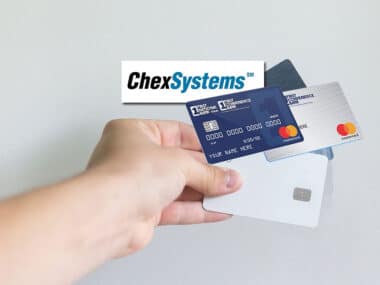
Is Discover a Good Bank?
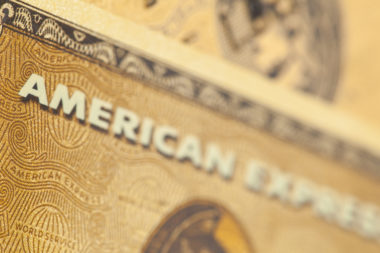
Should You Open an Account at American Express National Bank?

Cash back vs. travel rewards: How to choose a credit card

Editor's Note
If you're new to credit card rewards, one of the first questions you'll need to answer for yourself is: Should I get a card that earns travel rewards or a card that earns cash back?
The good news is you can find reliable options among the top cash-back credit cards and the best travel credit cards . In the end, you may want both a cash back and a points card .
Below, we'll break down the pros and cons of different types of cards and their associated rewards programs. We'll dive into things like rewards value, welcome offers, redemption, ease of use and perks. Considering these options will help you choose the best card for you.
Your spending and goals
The number of credit card options is both the best and most challenging part of choosing a card. Before we dig into what different cards offer, you'll want to think about your own spending habits and goals .
First, take a look at where your money is going right now. Are you renovating a home and spending a large portion of your money at home improvement stores? Maybe you're traveling a lot for work or spending your weekends trying out all the new restaurants nearby. Whatever you're doing, you can find a card that will maximize your rewards in your highest spending categories.
Then, determine what you would like to get out of your credit card rewards. Do you want to use points and miles to visit family over the holidays or book a dream vacation? Or are you hoping to help cover the cost of a large upcoming expense?
These answers are unique to you, and determining them upfront will help you decide which options will work best for you.
Types of cards
Generally, we designate credit cards as either travel rewards cards or cash-back cards . The names are pretty self-explanatory: they are cards that either earn travel rewards or simple cash back.
However, some cards offer more flexibility and allow users to choose how they redeem their rewards. Cards that earn transferable points , such as American Express Membership Rewards or Chase Ultimate Rewards , allow the cardholder a variety of options for redeeming the points they earn. While some redemptions are more valuable than others (more on that below), it can be nice to have the option to change your redemption strategy in case your goals change in the future.
Welcome offers
What you earn on credit card spending is essential, but nothing beats a card's welcome bonus when it comes to accumulating rewards quickly. The first few months of card ownership are potentially the most valuable since these bonuses can be worth hundreds or even thousands of dollars.
Travel rewards cards almost always offer higher welcome bonuses than cash-back cards. For example, The Platinum Card® from American Express currently offers a welcome bonus of 80,000 Membership Rewards points, worth $1,600 (according to TPG calculations ).
However, a higher bonus on a travel rewards card usually comes with a higher spending requirement. In order to get the bonus on The Platinum Card, for instance, you'll need to spend $8,000 in the first six months of membership. (Terms apply.)

Cash-back cards, on the other hand, generally offer a much lower bonus but also require a much lower spend in order to receive it. For example, the Capital One Quicksilver Rewards Credit Card (see rates and fees) provides a one-time $200 bonus but only requires you to spend $500 on purchases within the first three months of opening your account to unlock the bonus.
Reward categories
When you consider a card's reward categories , it's helpful to identify where you spend the majority of your money.
While it makes sense that most travel rewards cards earn the most on travel purchases , you can find both travel rewards and cash-back card options that will reward you for everyday spending at places like supermarkets and gas stations .

The Chase Sapphire Reserve , for example, is a travel rewards card. Using it, you'll earn 3 points per dollar on all travel spending. Apart from travel, though, the card also earns 3 points per dollar on dining and 10 points per dollar on Lyft rides (through March 2025). Since TPG values Chase Ultimate Rewards Points at 2.05 cents each, you'll effectively earn a value of 6.2 cents per dollar spent on travel and dining, as well as a very lucrative return of 21 cents per dollar spent on Lyft rides.
But if travel isn't a big spending category for you, or if you want to earn your rewards in the form of cash back, there are some excellent cash-back cards with different reward category options.
The Blue Cash Preferred® Card from American Express, for example, gives you 6% cash back at U.S. supermarkets (on up to $6,000 per calendar year in purchases, then 1%) and 6% cash back on select U.S. streaming services (with no cap), 3% cash back at U.S. gas stations and transit, while giving 1% back on other purchases. That means for every dollar you spend at U.S. supermarkets, you'll earn 6 cents that can be applied to a statement credit.
An important element to consider as you make your credit card decision is whether a card has an annual-fee and, if so, whether it is worthwhile to pay
Travel rewards cards have a reputation for carrying higher annual fees, and sometimes for good reason: many premium travel rewards cards have annual fees of $350 or more. The welcome bonuses and perks of these cards generally offset the cost of the annual fee , but the cost itself may not be something you want to pay right now if you're on a tighter budget.
The good news is that there are plenty of lower and no annual fee travel rewards cards available.
The Chase Sapphire Preferred® Card , for example, has an annual fee of only $95 and still comes with a welcome bonus of 75,000 Chase Ultimate Rewards points after you spend $4,000 on purchases in the first three months from account opening. It also still earns you 2 points per dollar on travel, 3 points per dollar on dining, and 5 points per dollar on Lyft rides (through March 2025). With our 2.05-cent-per-point valuation , that's a lot of value for a relatively low annual fee.
Furthermore, the Capital One VentureOne Rewards Credit Card (see rates and fees ) has no annual fee and offers 20,000 bonus miles after spending $500 within the first three months from account opening. You also earn you 1.25 miles per dollar on every purchase.
While the perks aren't as abundant as the perks of cards with higher fees, these cards, along with other low and no-annual-fee travel cards, are a great way to earn travel rewards with lower out-of-pocket costs.
With cash-back cards , you'll find even more options if you want to avoid annual fees . Some of our favorite no annual fee cash back cards are the Citi Double Cash® Card (see rates and fees ) and the Chase Freedom Unlimited® . If you're looking at a cash-back card that does carry an annual fee, though, make sure your earning potential makes the fee worth it. An annual fee on a cash-back card can quickly eat into the rewards you'll earn with the card.
Big welcome bonuses and hefty annual fees tend to lead to valuable perks , which is a point in favor of points and miles cards. The Chase Sapphire Reserve , for instance, includes a $300 annual travel credit reimbursement and complimentary access to Priority Pass lounges .
Other card benefits to look out for include baggage insurance , primary car rental insurance and purchase protection .
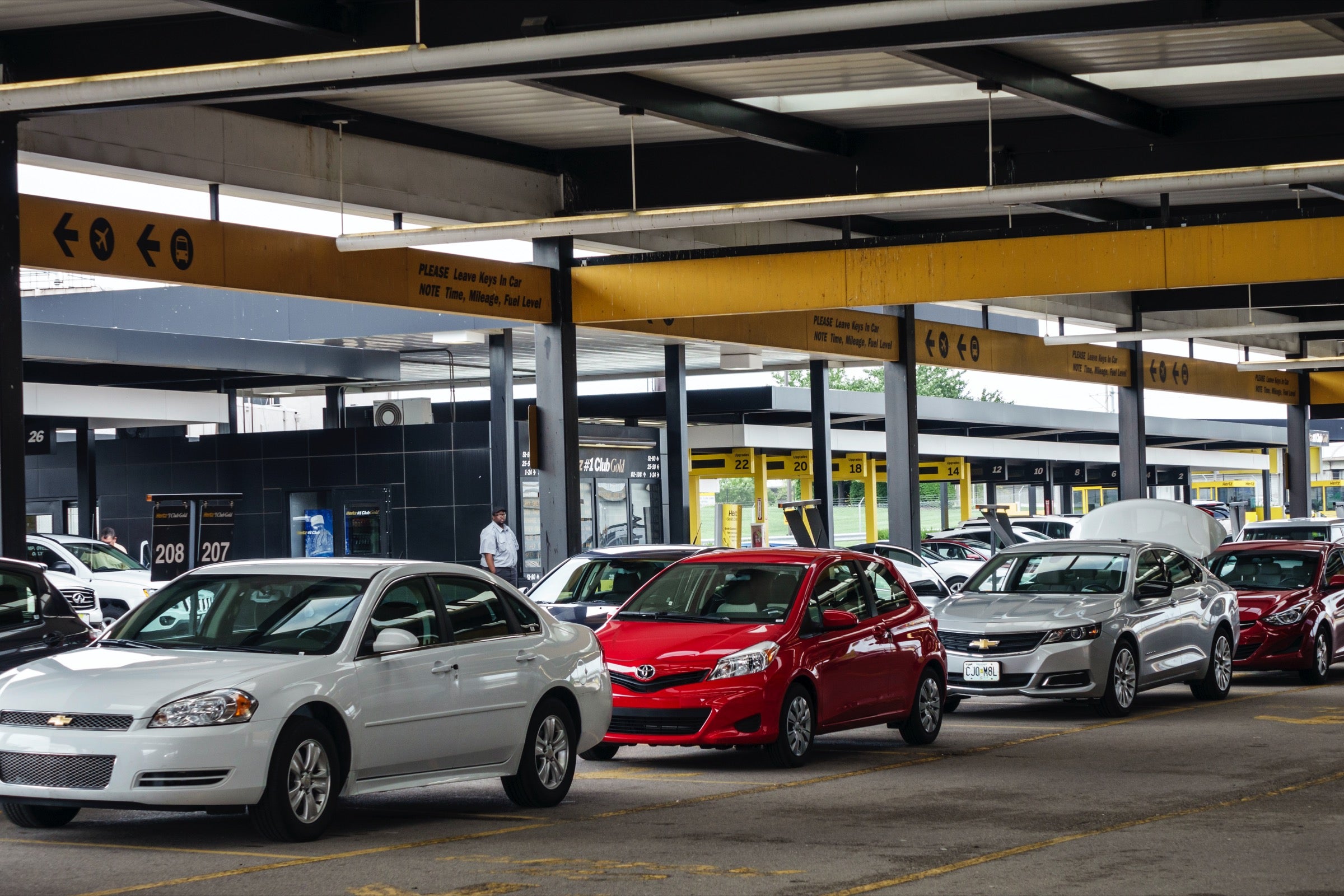
Cash-back cards tend to have fewer benefits, but you should still be able to find a card that offers some industry-standard benefits, like these:
- Purchase protection: Covers your new purchases for a limited amount of time against damage or theft up to a certain amount per claim and per account.
- Extended warranty: Extends the period of a U.S. manufacturer's warranty (typically up to a year) on eligible warranties (of up to three to five years typically).
- Zero Liability: You won't be held responsible for unauthorized charges made with your card or account information. Federal law generally limits your liability to $50.
Ease of using rewards
While many travel rewards cards offer excellent bonus categories and perks, keeping up with everything takes effort. Especially if you end up with multiple cards , it can be easy to get overwhelmed as you figure out which cards to use for different purchases to maximize your benefits. Then, once you have your points and miles in hand, you'll need to figure out how you want to redeem them . If you're able and willing to put some work into your strategy, you'll be able to get some excellent value with these rewards.
However, not everyone wants or is able to put much energy into maximizing their credit card rewards. If that's you, a cash-back card may be a better choice.
If you're looking for simplicity, cash-back cards are hard to beat. The most work you'll likely have to put in for one is activating the quarterly 5% bonus categories on the Chase Freedom Flex℠ .
But if you don't even want to deal with rotating categories, you can opt for a card like the Citi Double Cash , which pays 2% cash back (1% cash back on all purchases and another 1% back when you repay on time) on all purchases. Paying on time and in full (one of TPG's ten credit card commandments ) means you'll enjoy an almost effortless 2% cash-back reward on all purchases with this card. That's a pretty good deal for everyday spending and very little effort.
Redeeming points for cash back or travel
Cash-back cards win again for simplicity on redemption since one cash-back percentage point equals 1 cent per dollar spent. But when it comes to value, points and miles cards almost always come out on top.
When redeeming points and miles, 1 point or mile is almost always worth more than 1 cent. Furthermore, a point is often not a fixed-rate commodity. The value of currencies like Amex Membership Rewards , Chase Ultimate Rewards and Citi ThankYou points are hard to pin down since you can transfer these rewards to various travel partners and get much more value for a first-class flight.
There's certainly a learning curve, but referencing our valuations is an excellent way to see if you're getting a good bang for your buck, especially if you're considering traveling soon.
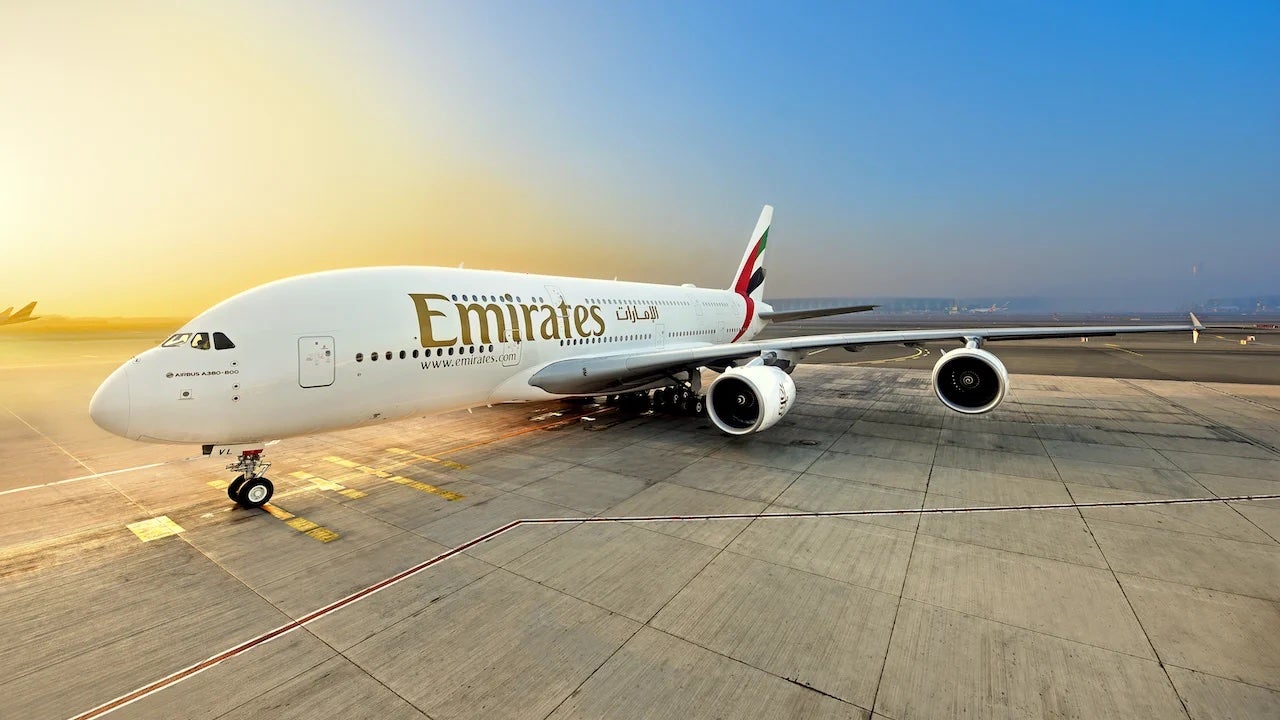
Is it better to redeem points for cash or travel?
Generally speaking, it's better to redeem your points for travel. You'll likely get more value from a travel redemption than cash back for the same number of points. It's best to aim to get at least 1.5 cents value from each point .
Is it better to get cash back or gift cards?
It depends. It's hard to beat the simplicity of a cash-back redemption since most cards offer this redemption in the form of a statement credit. However, sometimes gift card redemptions are offered at a higher value than cash back. If you can find a good deal on a gift card you'll use, a gift card redemption may make sense.
Is there a downside to cash back?
Cashback is great if cash flow is what you need or want right now or if you don't have the energy to keep up with a more complex credit card strategy. However, you'll generally get more value for travel redemptions by using a rewards credit card rather than a cash back card.
Are airline miles worth more than cash back?
Yes. Cashback is usually valued at 1% or 1 cent, whereas most airline miles are worth more than 1 cent . However, some airlines like Hawaiian Airlines and Spirit Airlines have poorly-valued miles, so cash back is better in these cases.
Bottom Line
If your top priority is getting the most value out of a credit card — no matter the blood, sweat and tears required — you should get a travel rewards card and maybe a premium one at that. You'll get far more value out of one of these cards from the bonus, the points, the perks and the redemption options than you'll get from a cash-back card.
But not everyone has the time or inclination to put this much effort into tracking spending and returns, which is where cash-back cards come in. There's nothing wrong with either perspective.
The only major misstep you can take — if you pay your credit cards off every month — is not to take advantage of the free money issuers will throw at you in the form of welcome offers.
Additional reporting by Danyal Ahmed
Best cash back credit cards for travel
Advertiser disclosure.
We are an independent, advertising-supported comparison service. Our goal is to help you make smarter financial decisions by providing you with interactive tools and financial calculators, publishing original and objective content, by enabling you to conduct research and compare information for free - so that you can make financial decisions with confidence.
Bankrate has partnerships with issuers including, but not limited to, American Express, Bank of America, Capital One, Chase, Citi and Discover.
- Share this article on Facebook Facebook
- Share this article on Twitter Twitter
- Share this article on LinkedIn Linkedin
- Share this article via email Email

- • Rewards credit cards
- • Credit card comparisons

- • Travel credit cards
The Bankrate promise
At Bankrate we strive to help you make smarter financial decisions. While we adhere to strict editorial integrity , this post may contain references to products from our partners. Here's an explanation for how we make money . The content on this page is accurate as of the posting date; however, some of the offers mentioned may have expired. Terms apply to the offers listed on this page. Any opinions, analyses, reviews or recommendations expressed in this article are those of the author’s alone, and have not been reviewed, approved or otherwise endorsed by any card issuer.
At Bankrate, we have a mission to demystify the credit cards industry — regardless or where you are in your journey — and make it one you can navigate with confidence. Our team is full of a diverse range of experts from credit card pros to data analysts and, most importantly, people who shop for credit cards just like you. With this combination of expertise and perspectives, we keep close tabs on the credit card industry year-round to:
- Meet you wherever you are in your credit card journey to guide your information search and help you understand your options.
- Consistently provide up-to-date, reliable market information so you're well-equipped to make confident decisions.
- Reduce industry jargon so you get the clearest form of information possible, so you can make the right decision for you.
At Bankrate, we focus on the points consumers care about most: rewards, welcome offers and bonuses, APR, and overall customer experience. Any issuers discussed on our site are vetted based on the value they provide to consumers at each of these levels. At each step of the way, we fact-check ourselves to prioritize accuracy so we can continue to be here for your every next.
Editorial integrity
Bankrate follows a strict editorial policy , so you can trust that we’re putting your interests first. Our award-winning editors and reporters create honest and accurate content to help you make the right financial decisions.
Key Principles
We value your trust. Our mission is to provide readers with accurate and unbiased information, and we have editorial standards in place to ensure that happens. Our editors and reporters thoroughly fact-check editorial content to ensure the information you’re reading is accurate. We maintain a firewall between our advertisers and our editorial team. Our editorial team does not receive direct compensation from our advertisers.
Editorial Independence
Bankrate’s editorial team writes on behalf of YOU — the reader. Our goal is to give you the best advice to help you make smart personal finance decisions. We follow strict guidelines to ensure that our editorial content is not influenced by advertisers. Our editorial team receives no direct compensation from advertisers, and our content is thoroughly fact-checked to ensure accuracy. So, whether you’re reading an article or a review, you can trust that you’re getting credible and dependable information.
How we make money
You have money questions. Bankrate has answers. Our experts have been helping you master your money for over four decades. We continually strive to provide consumers with the expert advice and tools needed to succeed throughout life’s financial journey.
Bankrate follows a strict editorial policy , so you can trust that our content is honest and accurate. Our award-winning editors and reporters create honest and accurate content to help you make the right financial decisions. The content created by our editorial staff is objective, factual, and not influenced by our advertisers.
We’re transparent about how we are able to bring quality content, competitive rates, and useful tools to you by explaining how we make money.
Bankrate.com is an independent, advertising-supported publisher and comparison service. We are compensated in exchange for placement of sponsored products and services, or by you clicking on certain links posted on our site. Therefore, this compensation may impact how, where and in what order products appear within listing categories, except where prohibited by law for our mortgage, home equity and other home lending products. Other factors, such as our own proprietary website rules and whether a product is offered in your area or at your self-selected credit score range, can also impact how and where products appear on this site. While we strive to provide a wide range of offers, Bankrate does not include information about every financial or credit product or service.
Key takeaways
- If you travel two or more times per year, or if you plan to travel more in the future, you might find a lot of value in a travel credit card
- If you don't travel frequently, you might find more value in strategically using a cash back credit card to cover travel-related purchases
- Many cash back cards offer travel-related perks like bonus rewards on travel purchases, no foreign transaction fees, access to the issuer's travel portal and limited-time offers on select travel purchases
Once you’ve got the travel itch, you know it’s time to plan your next getaway. But if you only travel occasionally, a travel credit card might not be the right fit for you. Sure, travel cards often come with incredible welcome bonuses, higher rewards rates, annual statement credits, airport lounge access and other major perks, but they also tend to come with high annual fees, which can be hard to recoup if you don’t use enough card benefits each year.
In that case, it might make more sense to use a cash back credit card to help fund your next vacation. Many cash back cards offer rewards on both everyday spending and travel spending, and you can redeem your rewards for statement credits to cover travel-related expenses. Plus, some cash back cards also come with access to an issuer’s travel portal, no foreign transaction fees and other travel benefits.
Below, we’ll go over some of the best cash back credit cards for travel, along with some tips and considerations.
Chase Freedom Flex: Best for rotating bonus categories
The Chase Freedom Flex℠ * offers 5 percent cash back on activated, rotating bonus category purchases each quarter (on up to $1,500, then 1 percent back). These bonus categories change each quarter, but the annual calendar often includes gas stations or other travel-related categories.
This card also earns 5 percent cash back on Chase Ultimate Rewards travel purchases; 5 percent cash back on Lyft rides (through March 31, 2025); 3 percent cash back on dining and drugstore purchases; and 1 percent cash back on all other purchases. This card also comes with no annual fee, trip cancellation and interruption insurance , travel and emergency assistance services and the ability to redeem rewards for travel through Chase.
Blue Cash Preferred Card from American Express: Best for higher rewards on everyday spending
With the Blue Cash Preferred® Card from American Express , you’ll earn 6 percent cash back on U.S. supermarket purchases (on up to $6,000 per year, then 1 percent back); 6 percent cash back on select U.S. streaming subscriptions; 3 percent cash back on transit and at U.S. gas station; and 1 percent cash back on everything else. Also, note that you’ll get a $0 intro annual fee for the first year, after which an annual fee of $95 applies.
With this card, you can save up your cash back earnings and redeem them for a statement credit to cover travel purchases like hotels or flights. Plus, this card also comes with access to Amex Offers , allowing you to earn more rewards on qualifying purchases with select brands (including travel brands like hotels), along with access to the American Express Travel portal .
Citi Double Cash Card: Best for flat cash back
If you’d prefer a simpler rewards strategy, the Citi Double Cash ® Card is one of the best flat-rate cards on the market. This card comes with no annual fee, and you’ll earn up to 2 percent cash back on all purchases — 1 percent back as you make purchases and 1 percent back as you pay for purchases. That’s $20 in rewards for every $1,000 you spend on your card. Over time, you can earn enough rewards to cover a flight or hotel (in the form of a statement credit to your account).
This card also allows you to redeem your rewards for travel through the Citi travel portal , though it’s important to note that you won’t be able to transfer your rewards to Citi travel partners since this card only earns basic Citi ThankYou points .
Capital One SavorOne Cash Rewards Credit Card: Best for entertainment and international travel
The Capital One SavorOne Cash Rewards Credit Card is, by far, one of the best cash back credit cards for international travel. It comes with no annual fee and no foreign transaction fees, along with impressive rewards rates on entertainment and select travel purchases. You’ll earn 10 percent cash back on Uber and Uber Eats purchases (through Nov. 14, 2024); 8 percent cash back on Capital One Entertainment purchases; 5 percent cash back on hotels and rental cars booked through Capital One Travel; 3 percent cash back on dining, entertainment, popular streaming subscriptions and grocery store purchases (excluding superstores like Walmart and Target); and 1 percent cash back on all other purchases.
This card also comes with travel-related benefits like travel accident insurance, 24-hour travel assistance services and complimentary concierge services, which can help you with any travel, dining and entertainment plans. Plus, cash back rewards can be redeemed for Capital One Travel reservations (not including taxes and fees).
How to use cash back credit cards for travel
Look for cards that offer cash back on everyday expenses and travel.
Numerous cash back cards offer rewards on both everyday expenses and travel purchases, so look for a card with bonus categories that fit well with your everyday and travel spending. And don’t forget: If you have a cash back card that offers rewards on dining and gas, for example, you’ll still earn rewards on dining and gas purchases when you travel. However, with some cards, you’ll only earn rewards on U.S. category purchases, so be sure to check the fine print of your credit card agreement for any terms or limitations.
Redeem cash back as a statement credit to cover travel expenses
With a cash back credit card, you can redeem your cash back to cover a wide variety of travel-related expenses. For instance, you could save up your rewards until you reach $100 to $200 in cash back. Then, you could redeem your rewards for a statement credit to cover hotel bookings, flights, rideshares, dining out or any other travel-related expenses you have.
Check your issuer’s limited-time offers program for travel deals
Most credit cards come with access to an issuer’s limited-time offers program, which allows you to earn more rewards when you make eligible purchases with participating merchants. For example, you might find offers on hotel bookings with a specific chain (such as 10 percent back on a booking or $100 off a booking when you spend $300 or more) or offers for purchases made with travel-booking sites or rideshare companies.
See if you have access to your issuer’s travel portal
In order to stay competitive, many cash back credit cards now offer access to issuer travel portals . These portals may offer exclusive deals on travel or other benefits. For example, some cash back cards offer boosted rewards rates for select purchases made through a travel portal, while others allow you to redeem your rewards for travel purchases through the travel portal.
If you travel abroad, look for a card with no foreign transaction fees
Many cash back credit cards include a foreign transaction fee (usually 3 percent) on any purchases you make outside of the United States. If you travel abroad frequently, it would be worth getting a card with no foreign transaction fee so you don’t cancel out the rewards you’ll earn with your card. For instance, all Discover and Capital One credit cards come with no foreign transaction fees.
Is a cash back card for travel right for you?
While you can use the rewards you earn from a cash back credit card to help fund your vacation, make sure that you’re truly better off with a cash back card rather than a points or miles credit card .
For instance, if you travel two or more times per year, or if you plan to travel more frequently in the near future, it would be worth looking at some of the top travel credit cards available. Travel credit cards frequently come with perks like high welcome bonuses, travel protections, annual statement credits for travel-related purchases or airport lounge access. Just make sure that you’re able to recoup the cost of membership through card spending or benefits if you pick a card with an annual fee.
If you’re just starting to travel more frequently — or if you’re not sure if a travel card is right for you — there are a number of entry-level travel cards with low annual fees or no annual fees . That way, you can test out the travel card space to see if it’s right for you before committing to a card with a higher annual fee.
The bottom line
If you don’t travel that frequently, getting a travel credit card doesn’t make sense. Instead, you might find more value in strategically using a cash back credit card to cover travel-related purchases. With the right cash back card , you might even get some travel-related card perks such as bonus rewards on travel purchases, no foreign transaction fees, access to the issuer’s travel portal and limited-time offers on select travel purchases.
*The information about the Chase Freedom Flex℠ has been collected independently by Bankrate.com. The card details have not been reviewed or approved by the card issuer.
For Capital One products listed on this page, some of the above benefits are provided by Visa® or Mastercard® and may vary by product. See the respective Guide to Benefits for details, as terms and exclusions apply.

Why you should have a 2% cash back card

How to choose a cash back credit card

Best Cash Back Credit Cards of 2024

UponArriving
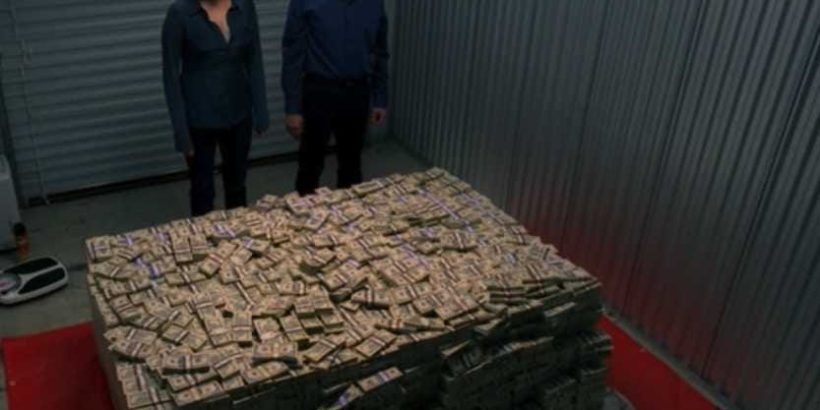
How Much Cash Can You Travel With? (TSA & International Rules) [2023]
So you have a load of cash and you want to transport it across the country or perhaps even internationally. But exactly how much cash are you allowed to travel with?
In this article, I will break down everything you need to know about traveling with cash including important rules and limitations when flying.
I’ll also cover a number of key considerations you will want to think about before taking your cash with you when going through TSA or even traveling internationally.
Table of Contents
How much cash can you travel with?
There are no limits on the amount of cash you can travel with but there are some major considerations you need to think about when doing so.
If you are traveling domestically, your primary concern is avoiding forfeiture of your cash.
If you are traveling internationally, forfeiture is a concern but you should also be focused on remembering to declare the value of your currency and monetary instruments totaling above $10,000. Keep reading to find out more.
Tip: Use the free app WalletFlo to help you travel the world for free by finding the best travel credit cards and promotions!
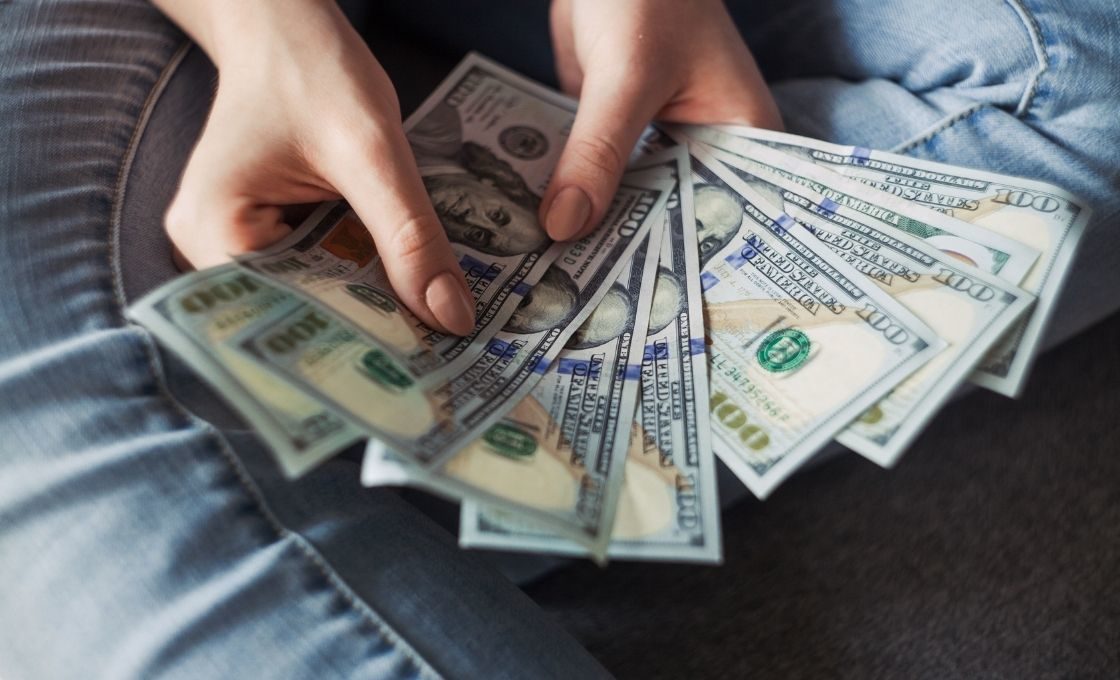
Legal risks of traveling with cash
TSA is concerned about dangerous threats such as explosives and not with enforcing laws and penal codes. (This is why they do not check for arrest warrants .)
Your cash money does not present a dangerous threat and so there should be no legitimate concern about it harming other passengers on the plane.
However, in the past there have been reports of TSA agents initiating the process for seizing cash from passengers under the suspicion that it is money gained from an illegal activity or money that is intended to be used on illegal activity.
Think drugs, weapons, and organized crime activities.
The seizing of cash can be accomplished under a number of different statutes including 21 U.S. Code § 881(a)(6) which governs forfeitures.
It states that you have no property right for:
(6) All moneys, negotiable instruments, securities, or other things of value furnished or intended to be furnished by any person in exchange for a controlled substance or listed chemical in violation of this subchapter, all proceeds traceable to such an exchange, and all moneys, negotiable instruments, and securities used or intended to be used to facilitate any violation of this subchapter.
It’s possible that if a TSA agent spots a lot of cash on you or in your bag (especially a lot of smaller bills like $20 bills) they could refer you to authorities (i.e., DEA) for some type of questioning.
The authorities may check to see if you are on some type of watchlist but even if you are not they may still deem that your cash is subject to civil forfeiture, which means that it will all be taken from you.
This can happen even if you have not been charged or convicted of any crime.
Some dogs that patrol airports have a nose for cash and a lot of cash has come into contact with illegal narcotics.
In fact, a study by Yuegang Zuo of the University of Massachusetts Dartmouth in 2009 found that about 90 percent of banknotes contain traces of cocaine . Traces of other drugs have also been found on cash like codeine, amphetamines and methamphetamines .
That means that “false positives” could be triggered, which could potentially be used as further evidence about your illegal activity (reportedly dogs don’t usually sniff out these faint traces).
If your money is seized you should have the opportunity to petition the process and to retrieve your funds.
It’s an odd legal proceeding where your cash is literally the defendant: “United States of America v. $50,000 in United States currency.”
That’s important because it means that the legal burden of proof is at the civil level which only requires it to be more likely than not that you were up to no good.
This petition process may not be very fun, could last a long time, and could be very costly. For example, you will likely need to hire an attorney which might cost you as much money as you have at stake.
Your success rate could also be very low.
In March 2017, the Justice Department’s Office of Inspector General reported that over the course of 10 years, the DEA only returned money in 8% of cases.
And if you do get your money back, if you owe taxes or judgments, those will likely have to be paid out first.
For these reasons, I would try to limit the cash I take through TSA security to maybe just a couple of thousand dollars (If that).
Personally, the most cash I ever carry on me is a couple of hundred bucks.
This may be problematic for people who want to gamble at their destination or who are looking to do things like purchase a car with cash but you should make alternative arrangements to receive your cash at your destination if possible.
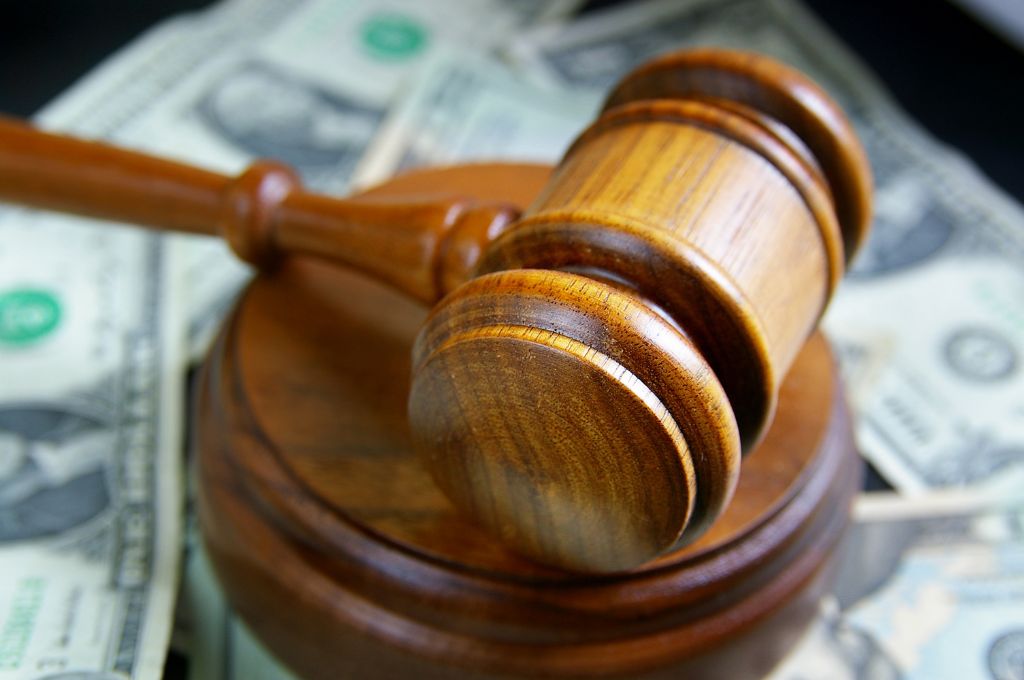
Tips for traveling domestically with cash
If you are thinking about traveling through TSA with cash my advice would be the following:
Keep the amount as small as possible
First, avoid bringing more than $2,000 in cash if possible. That should be well below the level considered to be suspicious, as the lowest amount I saw subject to forfeiture was $6,000.
Also, try to avoid $20 bills since those are customarily used in drug deals.
Notify a TSA agent
If you do bring cash consider notifying a TSA agent when you enter the line and see if you can get some type of private or secondary screening.
If you have TSA Pre-Check , an agent might consider you to be less likely to be engaged in criminal activity but that is not a guarantee.
But note that cash has been seized in cases where people notified a TSA agent themselves so this is not a full proof method.
And it goes without saying but do not attempt to conceal the cash on your body such as strapping it to your chest because the full body scanners will find this quite easily.
Avoid checked baggage
You might be thinking about putting the cash in your checked baggage but that is not a good idea.
For one, if the cash was detected you will not be there to explain the situation and you may be caught off guard later when you are brought in for questioning by the DEA.
Second, if your cash is detected it’s possible that an unethical TSA agent could simply decide to take your cash.
And finally, if your luggage is lost you will not be able to retrieve that cash and cash is almost always an exception to baggage insurance policies.
Bring documentation
If you are traveling with a lot of cash because you want to purchase a vehicle or take care of some other transaction make sure that you have all of the supporting documentation already with you in case you are brought in for questioning.
Presenting anything less than an airtight explanation for transporting cash can mean instant forfeiture.
Avoid transporting suspicious items
It is a good idea to avoid transporting other items such as marijuana along with your cash since that will only reinforce the image that you are up to some type of criminal drug activity.
This is even the case if the state you are flying out of has legalized marijuana.
Consider your criminal history
And finally, if you have any type of criminal history — especially cases related to drug infractions — the odds of you encountering an issue with forfeiture go up.
That’s because it will be that much easier for them to make a case against you. Remember, we are talking about a civil court burden of proof — not criminal court.
So you should really reconsider bringing a lot of cash if that applies to you.
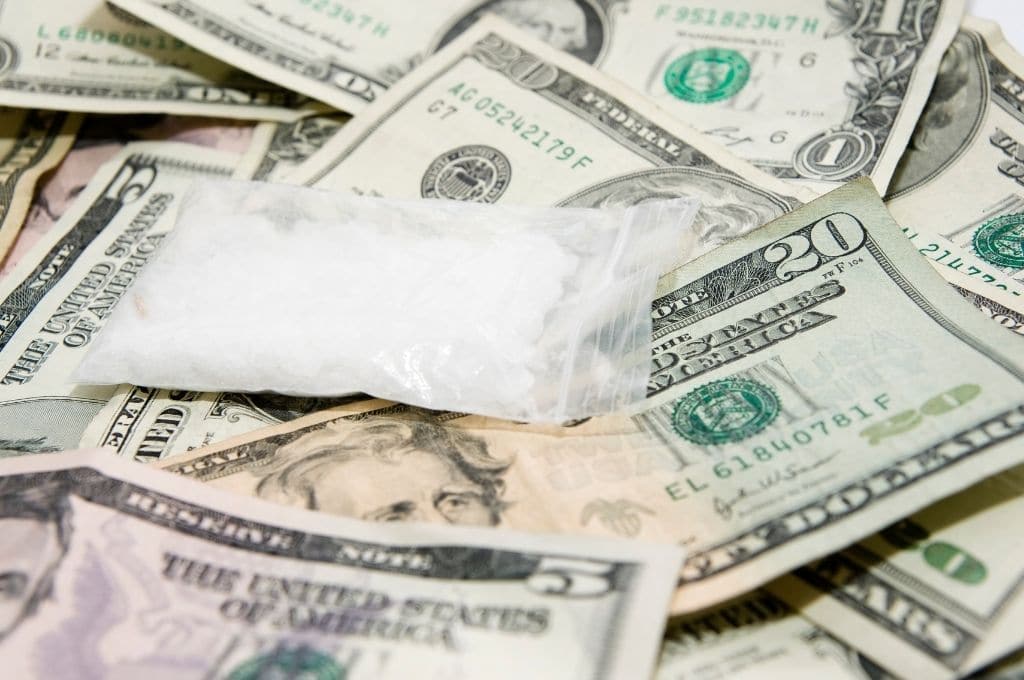
The International cash limit of $10,000 and the need to declare
US Customs and Border Protection is clear that you can transport “any amount of currency or other monetary instruments into or out of the United States.”
The caveat is that if the amount of currency exceeds $10,000 or it’s for an equivalent then you will need to file a FinCEN Form 105 (“Report of International Transportation of Currency or Monetary Instruments”) with U.S. Customs and Border Protection.
This is a pretty simple form to fill out and basically just requires you to input the following information:
- Contact information including passport number
- Export/import information
- Shipping information if applicable
- Details of the currency or monetary instrument
You can file this form electronically at FinCEN Form 105 CMIR, U.S. Customs and Border Protection (dhs.gov) but you can also file it in paper form.
In addition, if you are entering the United States you must declare if you are carrying currency or any other monetary instruments if they total over $10,000.
You can make this declaration on your Customs Declaration Form (CBP Form 6059B) and then file a FinCEN Form 105.
Do not blow off this requirement because failing to declare could mean forfeiture of your money and some pretty serious criminal penalties.
And remember each country has its own policy regarding traveling with cash so you have to make sure you are in compliance with the country you are headed to.
Monetary instrument
Unless you went to law school for three years you might be wondering what a “monetary instrument” is as it’s found on the FinCEN Form 105 .
US Customs and Border Protection defines it as:
- Traveler’s checks in any form
- All negotiable instruments (including personal checks, business checks, official bank checks, cashier’s checks, third-party checks, promissory notes, and money orders) that are either, in bearer form, endorsed without restriction, made out to a fictitious payee, or otherwise in such form that title passes upon delivery
- Incomplete instruments (including personal checks, business checks, official bank checks, cashiers’ checks, third-party checks, promissory notes, and money orders) signed but with the payee’s name omitted
- securities or stock in bearer form or otherwise, in such form that title passes thereto upon delivery.
In this article we are mostly focused on cash which would most definitely fall under “currency.”
Specifically, 19 CFR § 1010.100(m) defines “currency” as the coin and paper money of the United States or of any other country that:
- (1) is designated as legal tender, (2) circulates, and (3) is customarily used and accepted as a medium of exchange in the country of issuance.
- Currency includes U.S. silver certificates, U.S. notes, and Federal Reserve notes.
- Currency also includes official foreign bank notes that are customarily used and accepted as a medium of exchange in a foreign country.
The big take away here is that this restriction applies to cash of the US and also other countries.
The cash of pretty much every developed country is going to meet the requirements for currency listed above so it doesn’t matter if you are transporting Great Britain Pounds, Euros, etc.
Keep in mind that each form of currency and monetary instrument counts separately, as well. So if you have $6,000 in cash and a $5,000 traveler’s check, you are above the limit.
And members of a family residing in one household entering the United States that submit a joint or family declaration must declare if the members are collectively above the $10,000 limit.
So if a husband has $4,000 and the wife has $7,000, that family must declare because they are collectively above the limit.
Items that don’t count as currency
Some items related to currency do not officially count as currency but you still may have to declare them as “merchandise.”
For example, coins of precious metals, including silver and gold, do not fall into the definition of “monetary instrument” or “currency.”
However, coins of precious metals must be declared as merchandise if they are acquired abroad.
Other articles of precious metals (including gold bullion, gold bars, and gold jewelry) also do not fall into the definition of “monetary instrument” or “currency.”
However, these articles must also be declared as merchandise if they are acquired abroad.
They also have a list of excluded items which includes:
- Warehouse receipts and bills of lading
- Monetary instruments that are made payable to a named person, but are not endorsed or which bear restrictive endorsements
- Credit cards and prepaid cards
- Virtual currencies including Bitcoin
So if you are traveling around with credit limits above $50,000 or a nice stash of cryptocurrency you don’t have to worry about declaring those items.
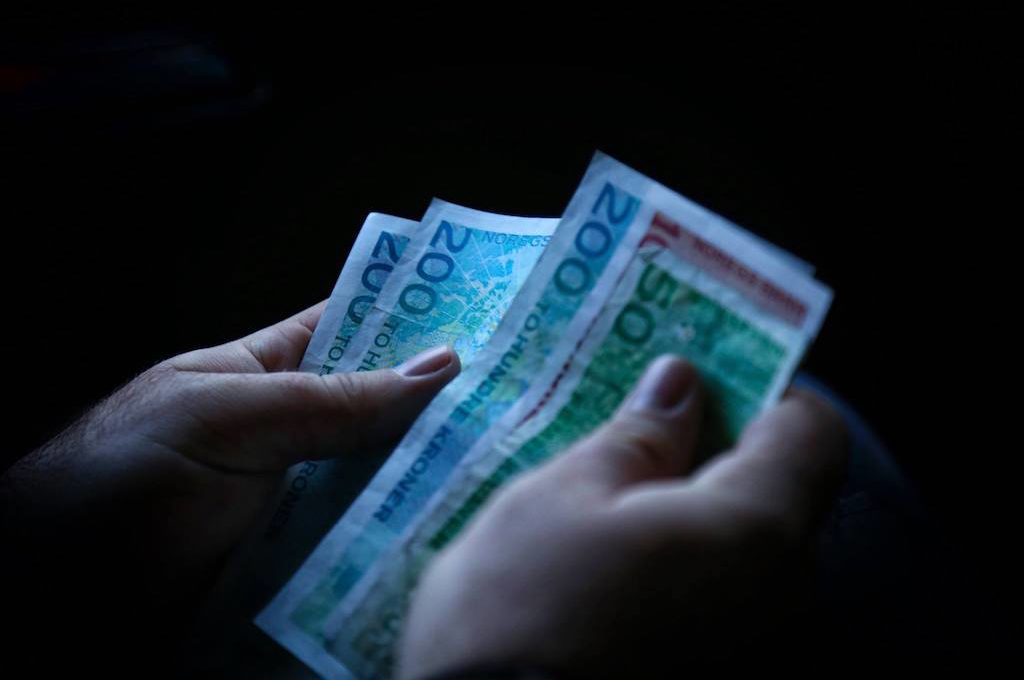
Factors to consider when traveling with cash
When you are traveling chances are you are going to want to spend some money on various expenses like dining and excursions. It is highly recommended to use a good travel rewards credit card for these expenses for a few reasons.
Getting through security
If you have a bag full of cash money, that bag is going to have to get through security at some point. This may be at the airport, a train station, etc.
As explained in detail above, if a screening agent notices that you have wads of cash in a bag this could potentially raise a red flag and a worst-case scenario of you losing your cash and never getting it back.
The theft risk
Traveling with cash is risky whether you keep that cash on you or you stored in your hotel room.
If you are walking around with cash on you there is always that chance that you could run into a thief. This could be someone who could pick pocket your wallet or cash right out of your clothes or bag.
Or in a more serious case, this could be someone who holds you up with some type of weapon and forces you to handover your cash.
If you are going to travel with cash on your person it’s recommended to have some type of hidden wallet and a dummy wallet in your pocket. Your dummy wallet will have a small amount of cash, perhaps a duplicate credit card and even a duplicate ID to make it look as realistic as possible.
The idea is that if someone were to take that dummy wallet they would only get away with a minimal amount of your valuables. You could then have your real stash of cash hidden beneath your clothing.
If you choose to store your cash in your hotel room you also need to be careful. Putting your cash into a hotel safe is not quite as secure as you might think . In some cases you may actually want to just hide your cash somewhere in the room where a thief would not think to look.
Either way you go, carrying a lot of cash on you is a risk that you need to weigh very carefully.
Travel insurance
You can get travel insurance by paying for your excursions and travels with a good travel credit card.
So if for some reason you purchase a nonrefundable hotel or tour and then you have to cancel because you get sick or for some other covered reason, you can get fully reimbursed for your purchase. In some cases this could put thousands of dollars back in your pocket.
But if you paid for something like your hotel with cash there is a good chance that you will simply be out of luck and get hit with the loss.
Also, you might struggle to even be able to pay cash for certain travel expenses like rental cars .
Foreign conversion fees
When you convert your cash into a foreign currency you will be paying some type of conversion fee and in some cases may be dealing with a subpar rate, especially at those kiosks .
Certain types of ATM cards will allow you to withdraw cash in the local currency with minimal fees but the best way to make purchases abroad is to simply have a credit card with no foreign transaction fees.
Travel credit cards are great about offering rewards on purchases made abroad.
You don’t have to look very far to find a credit card that will earn you extra bonus points on flights, hotels, and even your tours and events. Earning extra points on dining, even when dining abroad, is also easy with cards like the Amex Gold Card.
By paying with cash you are missing out on all of these valuable rewards.
Traveling with a lot of cash can be problematic because that is often how actors travel who are engaged in criminal activities.
Your best bet is to avoid bringing a lot of cash but if you must, try to bring as much supporting documentation as possible and be prepared for questioning and the possibility of you having to fight against the government to retrieve your money.

Daniel Gillaspia is the Founder of UponArriving.com and the credit card app, WalletFlo . He is a former attorney turned travel expert covering destinations along with TSA, airline, and hotel policies. Since 2014, his content has been featured in publications such as National Geographic, Smithsonian Magazine, and CNBC. Read my bio .
Leave a Reply Cancel reply
Your email address will not be published. Required fields are marked *
Privacy Overview
The 11 Best Cash Back Credit Cards for Travelers in 2024
By Harrison Pierce

All products featured on Condé Nast Traveler are independently selected by our editors. However, when you buy something through our retail links, we may earn an affiliate commission.
Condé Nast Traveler has partnered with CardRatings for our coverage of credit card products. Condé Nast Traveler and CardRatings may receive a commission from card issuers. Compensation does not impact how or where cards appear on the site. We don't review or include all companies, or all available products. Moreover, the editorial content on this page was not provided by any of the companies mentioned and has not been reviewed, approved or otherwise endorsed by any of these entities. Opinions expressed here are entirely those of Condé Nast Traveler's editorial team.
Cash back credit cards can be a valuable addition to any traveler's wallet. You might not want to make all your monthly purchases on a cash back card, but they can certainly work into a larger points and miles strategy .
Seasoned travelers know the importance of using the right card at the right time. You need to maximize the amount you earn per dollar. For example, I will always use my Delta SkyMiles® Platinum American Express to book flights on Delta . As a frequent traveler , I use my Citi Premier card at restaurants and supermarkets to earn 3x points per dollar spent, but I’ll take out my Capital One Venture X to book hotels through Capital One Travel, which will give me 10x miles for each dollar I spend.
A cash back card can be the icing on the cake to your points and miles strategy, giving you money back in your wallet to put toward future trips and filling in any gaps within your existing travel cards. For instance, if you don’t have a card that gives you bonus points for transit and you commute every day, you could use the Blue Cash Preferred from American Express, which will give you three percent cash back.
These cards give you an immense opportunity to earn, often while avoiding an annual fee, acting as a balance to the premium cards you may already have in your wallet. For those new to cash back cards, here's how they work: Most will allow you to redeem your cash back for a statement credit, check, or direct deposit, or for gift cards. When you are ready to redeem, you can log into your account and select your preferred method. (Note that some cards have a minimum redemption amount.)
Read on for the top cash back credit cards for travelers in 2024, or jump straight to the card that fits your spending habits or priorities:
- Best overall: Chase Freedom Flex℠
- Best for travel portal redemptions: Chase Freedom Unlimited®
- Best for road trippers: Blue Cash Preferred® from American Express
- Best for foodies: Capital One® SavorOne® Cash Rewards
- Best for simplicity: Citi Custom Cash Card
- Best for customization: Bank of America Customized Cash Rewards
- Best for cash back matching: Discover It Cash Back
- Best for big spenders: Alliant Cash Back Visa Signature
- Best for fair credit: Credit One Bank Platinum X5 Visa
- Best for flexibility: U.S. Bank Cash+® Visa Signature® Card
- Best for unlimited two percent back: Wells Fargo Active Cash Credit Card
Chase Freedom Flex℠
Best overall.
The Chase Freedom Flex is one of the most popular cash back credit cards on the market, and for a good reason. There is no annual fee and a pretty lucrative rewards system. Currently, you can earn a $200 bonus after spending just $500 on purchases in the first three months after account opening, plus five percent cash back on up to $12,000 in gas station and grocery store purchases in your first year.
Cardholders earn five percent cash back on quarterly rotating categories for up to $1,500 spent. These categories can include grocery stores, gas stations , or online merchants. You then earn three percent back on dining and drugstore purchases and one percent on all other purchases.
What makes this card so great for travelers is the additional five percent cash back on travel purchases made through Chase Ultimate Rewards. This is fantastic news for frequent travelers looking to save some money. You can book flights, car rentals, and hotels through the online portal, which can quickly add up.
Annual fee: $0

Chase Freedom Unlimited®
Best for travel portal redemptions.
Chase certainly knows how to make an excellent cash back credit card. The Chase Freedom Unlimited is much more straightforward–earn five percent back on travel purchases through Chase Ultimate Rewards, three percent on dining and drugstore purchases, and an unlimited 1.5 percent on all other purchases. The Freedom Unlimited offers the same sign-up bonus and intro APR as the Freedom Flex. There is no annual fee, which is great for travelers who already have a few premium credit card fees in their budget.
Blue Cash Preferred® from American Express
Best for road trippers.
If you like going on road trips, the Blue Cash Preferred will be your new best friend. Cardholders will enjoy three percent cash back on transit, which covers taxis, rideshare, parking, tolls, trains, and buses, and at gas stations. The perks do not end while you’re on the road–you will also get a whopping six percent cash back at U.S. supermarkets on up to $6,000 per year in purchases (terms apply).
Not only will you get money back when you fill up the tank, but you can also rest assured with the car rental loss and damage insurance offered as perks of the card. This lets you save money on the collision damage waiver at the counter while still staying protected.
You can earn $250 back after spending $3,000 on purchases in the first six months after account opening.
Annual fee: $0 intro annual fee for the first year, then $95 (see rates and fees )
Eligibility and Benefit level varies by Card. Terms, Conditions, and limitations apply. Please visit americanexpress.com/benefitsguide for more details. Underwritten by AMEX Assurance Company. Car Rental Loss or Damage is Offered through American Express Travel Related Services Company, Inc .
Capital One® SavorOne® Cash Rewards
Best for foodies.
If you do not want to cook while on vacation, you can use your SavorOne Cash Rewards card to earn an unlimited three percent back on dining purchases. Also, enjoy three percent back on grocery stores (excluding some superstores like Walmart and Target), streaming services, and entertainment. Earn one percent back on all other purchases.
Currently, you can earn an additional $200 back after spending $500 in purchases within the first three months of account opening. Long term, cardholders can enjoy making reservations all across the country with the SavorOne card, knowing you will automatically get some cash back every single time with no annual fee.
Citi Custom Cash Card
Best for simplicity.
If you do not want to worry about activating categories for higher earning potentials, the Citi Custom Cash Card does it for you. You will automatically earn five percent cash back on up to $500 in your highest spend category each billing cycle. This could include travel, meaning you could earn $25 back on travel purchases each billing cycle or $300 per year. Although it does not have other premium benefits that come with cards like the Chase Sapphire Reserve, getting $300 back each year on travel purchases is nothing to scoff at.
There is no annual fee for this card, and you can earn a $200 welcome bonus after spending $1,500 on purchases in the first six months after account opening.

Hannah Towey

CNT Editors

Jessica Puckett

Steph Koyfman
Bank of America Customized Cash Rewards
Best for customization.
If you want to be able to choose your highest cash back category, the Bank of America Customized Cash Rewards is the best option. Earn three percent back in the category of your choice and two percent back at grocery stores and wholesale clubs on up to $2,500 in combined spending each quarter.
You could use this card to earn the most back on travel purchases or use a different card for travel expenses and this card for dining while on the road.
Discover It Cash Back
Best for cash back matching.
The Discover It Cash Back is similar to the Chase Freedom Flex, where you earn five percent back on everyday card purchases at different places each quarter, up to a maximum amount. For quarter one of 2024, January to March, the category is restaurants and drug stores on up to $1,500 in purchases. After that, earn one percent cash back on all other purchases. The other quarterly bonus categories are announced the month prior. So, the bonus category for April to June will be announced on March 1, and so on.
Where this card shines is the unlimited dollar-for-dollar cash back match at the end of your first year. Let’s say you only use your card for purchases in the five percent back category each quarter. If you max that out, you will earn $75 per quarter or $300 by the end of the year. Discover would then match that $300, giving you another $300, for a total of $600. More money in your pocket at the end of the year may give you extra incentive to book that dream trip—or splurge on a last-minute one.
Alliant Cash Back Visa Signature
Best for big spenders.
The Alliant Cash Back Visa Signature has a tiered earning system. Tier 1 gives you 2.5 percent back on up to $10,000 in purchases each billing cycle. You earn an unlimited 1.5 percent back on all other purchases if you go over that. To qualify for Tier 1, you must meet the Alliant High-Rate Checking Account requirements.
If you do not meet the requirements, you are in Tier 2, which gives you unlimited 1.5 percent back on all purchases. This is an excellent cash back card for travelers with large budgets, as there is no cap on how much cash back you can earn and no foreign transaction or annual fees.
Credit One Bank Platinum X5 Visa
Best for fair credit.
If you have fair credit, you’ll enjoy the perks of the Credit One Bank Platinum X5 Visa. You’ll earn five percent cash back on the first $5,000 of eligible gas, grocery, internet, cable, satellite TV, and mobile phone service purchases each year. All other purchases earn one percent cash back. Although there’s an annual fee of $95 and a high variable APR of 29.24%, it’s worthwhile for those who might not get approved for the other cards on this list. Most credit-building cards do not offer any rewards; if they do, the rates are meager. The opportunity to earn five percent cash back, even with a reasonably low spending limit, is enticing. There’s no welcome offer, but applicants can get pre-approved without impacting their credit score.
Annual fee: $95
U.S. Bank Cash+® Visa Signature® Card
Best for flexibility.
U.S. Bank Cash+® Visa Signature® Card is another great card for flexibility. Cardholders earn five percent cash back on prepaid travel booked through the Rewards Travel Center. You can also earn five percent back on your first $2,000 in combined purchases each quarter in two categories you choose out of 12 different categories. Then, earn two percent cash back on one everyday category—you can choose between grocery stores, restaurants, and gas stations. Earn one percent cash back on all other purchases. To redeem your earnings, you can choose between a statement credit, rewards card, or direct deposit into your U.S. Bank checking or savings account.
Wells Fargo Active Cash Credit Card
Best for unlimited two percent back.
Another ultra-popular cash back card is the Wells Fargo Active Cash. This is the perfect card for someone who is looking for a simple, no-fuss, and no-annual-fee card. Earn unlimited two percent cash back on all purchases, plus a bonus $200 back after spending just $500 on your card within three months of account opening. You can redeem your cash back as a statement credit, at an ATM, or for gift cards. Your rewards never expire, and you can take advantage of an introductory 0% APR period for 15 months on purchases and balance transfers (after that, the variable APR is 20.24%, 25.24%, or 29.99% based on credit worthiness). If you already bank with Wells Fargo, adding this card to your wallet could be a no-brainer.
Condé Nast Traveler has partnered with CardRatings for our coverage of credit card products. Condé Nast Traveler and CardRatings may receive a commission from card issuers.
See rates and fees for the American Express cards listed: Delta SkyMiles Platinum , Blue Cash Preferred
Packing List
By signing up you agree to our User Agreement (including the class action waiver and arbitration provisions ), our Privacy Policy & Cookie Statement and to receive marketing and account-related emails from Traveller. You can unsubscribe at any time. This site is protected by reCAPTCHA and the Google Privacy Policy and Terms of Service apply.
- Credit cards
- View all credit cards
- Banking guide
- Loans guide
- Insurance guide
- Personal finance
- View all personal finance
- Small business
- Small business guide
- View all taxes
15 Best Travel Credit Cards of May 2024
ALSO CONSIDER: Best credit cards of 2024 || Best rewards credit cards || Best airline credit cards || Best hotel credit cards
The best travel credit card is one that brings your next trip a little closer every time you use it. Purchases earn points or miles you can use to pay for travel. If you're loyal to a specific airline or hotel chain, consider one of that company's branded travel credit cards. Otherwise, check out our picks for general-purpose travel cards that give you flexible travel rewards without the restrictions and blackout dates of branded cards.
250+ credit cards reviewed and rated by our team of experts
80+ years of combined experience covering credit cards and personal finance
100+ categories of best credit card selections ( See our top picks )
Objective comprehensive ratings rubrics ( Methodology )
NerdWallet's credit cards content, including ratings and recommendations, is overseen by a team of writers and editors who specialize in credit cards. Their work has appeared in The Associated Press, USA Today, The New York Times, MarketWatch, MSN, NBC's "Today," ABC's "Good Morning America" and many other national, regional and local media outlets. Each writer and editor follows NerdWallet's strict guidelines for editorial integrity .
Show summary
NerdWallet's Best Travel Credit Cards of May 2024
Chase Sapphire Preferred® Card : Best for Max flexibility + big bonus
Capital One Venture Rewards Credit Card : Best for Flat-rate rewards
Capital One Venture X Rewards Credit Card : Best for Travel portal benefits
Chase Freedom Unlimited® : Best for Cash back for travel bookings
American Express® Gold Card : Best for Big rewards on everyday spending
Wells Fargo Autograph℠ Card : Best for Bonus rewards + no annual fee
The Platinum Card® from American Express : Best for Luxury travel perks
Ink Business Preferred® Credit Card : Best for Business travelers
Citi Premier® Card : Best for Triple points on multiple categories
Bank of America® Travel Rewards credit card : Best for Flat-rate rewards + no annual fee
Chase Sapphire Reserve® : Best for Bonus rewards + high-end perks
World of Hyatt Credit Card : Best for Best hotel card
Bilt World Elite Mastercard® Credit Card : Best for Travel rewards for rent payments
United℠ Explorer Card : Best for Best airline card
PenFed Pathfinder® Rewards Visa Signature® Card : Best for Credit union benefits
Best Travel Credit Cards
Find the right credit card for you..
Whether you want to pay less interest or earn more rewards, the right card's out there. Just answer a few questions and we'll narrow the search for you.
Max flexibility + big bonus
Flat-rate rewards, travel portal benefits, cash back for travel bookings, big rewards on everyday spending, bonus rewards + no annual fee, luxury travel perks, business travelers, triple points on multiple categories, flat-rate rewards + no annual fee, bonus rewards + high-end perks, best hotel card, travel rewards for rent payments, best airline card, credit union benefits, full list of editorial picks: best travel credit cards.
Before applying, confirm details on the issuer’s website.
Capital One Venture Rewards Credit Card
Our pick for: Flat-rate rewards
The Capital One Venture Rewards Credit Card is probably the best-known general-purpose travel credit card, thanks to its ubiquitous advertising. You earn 5 miles per dollar on hotels and car rentals booked through Capital One Travel and 2 miles per dollar on all other purchases. Miles can be redeemed at a value of 1 cent apiece for any travel purchase, without the blackout dates and other restrictions of branded hotel and airline cards. The card offers a great sign-up bonus and other worthwhile perks ( see rates and fees ). Read our review.
Bank of America® Travel Rewards credit card
Our pick for: Flat-rate rewards + no annual fee
One of the best no-annual-fee travel cards available, the Bank of America® Travel Rewards credit card gives you a solid rewards rate on every purchase, with points that can be redeemed for any travel purchase, without the restrictions of branded airline and hotel cards. Bank of America® has an expansive definition of "travel," too, giving you additional flexibility in how you use your rewards. Read our review.
Chase Sapphire Reserve®
Our pick for: Bonus rewards + high-end perks
The high annual fee on the Chase Sapphire Reserve® gives many potential applicants pause, but frequent travelers should be able to wring enough value out of this card to more than make up for the cost. Cardholders get bonus rewards (up to 10X) on dining and travel, a fat bonus offer, annual travel credits, airport lounge access, and a 50% boost in point value when redeeming points for travel booked through Chase. Points can also be transferred to about a dozen airline and hotel partners. Read our review.
Chase Sapphire Preferred® Card
Our pick for: Max flexibility + big bonus
For a reasonable annual fee, the Chase Sapphire Preferred® Card earns bonus rewards (up to 5X) on travel, dining, select streaming services, and select online grocery purchases. Points are worth 25% more when you redeem them for travel booked through Chase, or you can transfer them to about a dozen airline and hotel partners. The sign-up bonus is stellar, too. Read our review.
Wells Fargo Autograph℠ Card
Our pick for: Bonus rewards + no annual fee
The Wells Fargo Autograph℠ Card offers so much value, it's hard to believe there's no annual fee. Start with a great bonus offer, then earn extra rewards in a host of common spending categories — restaurants, gas stations, transit, travel, streaming and more. Read our review.
Citi Premier® Card
Our pick for: Triple points in multiple categories
The Citi Premier® Card earns bonus points on airfare, hotels, supermarkets, dining and gas stations. There's a solid sign-up bonus as well. Read our review.
U.S. Bank Altitude® Connect Visa Signature® Card
Our pick for: Road trips
The U.S. Bank Altitude® Connect Visa Signature® Card is one of the most generous cards on the market if you're taking to the skies or the road, thanks to the quadruple points it earns on travel and purchases at gas stations and EV charging stations. It's also a solid card for everyday expenses like groceries, dining and streaming, and it comes with ongoing credits that can offset its annual fee: $0 intro for the first year, then $95 . Read our review .
Capital One Venture X Rewards Credit Card
Our pick for: Travel portal benefits
Capital One's premium travel credit card can deliver terrific benefits — provided you're willing to do your travel spending through the issuer's online booking portal. That's where you'll earn the highest rewards rates plus credits that can make back the bulk of your annual fee ( see rates and fees ). Read our review.
Chase Freedom Unlimited®
Our pick for: Cash back for travel bookings
The Chase Freedom Unlimited® was already a fine card when it offered 1.5% cash back on all purchases. Now it's even better, with bonus rewards on travel booked through Chase, as well as at restaurants and drugstores. On top of all that, new cardholders get a 0% introductory APR period and the opportunity to earn a sweet bonus. Read our review.
The Platinum Card® from American Express
Our pick for: Luxury travel perks
The Platinum Card® from American Express comes with a hefty annual fee, but travelers who like to go in style (and aren't afraid to pay for comfort) can more than get their money's worth. Enjoy extensive airport lounge access, hundreds of dollars a year in travel and shopping credits, hotel benefits and more. That's not even getting into the high rewards rate on eligible travel purchases and the rich welcome offer for new cardholders. Read our review.
American Express® Gold Card
Our pick for: Big rewards on everyday spending
The American Express® Gold Card can earn you a pile of points from everyday spending, with generous rewards at U.S. supermarkets, at restaurants and on certain flights booked through amextravel.com. Other benefits include hundreds of dollars a year in available dining and travel credits and a solid welcome offer for new cardholders. There's an annual fee, though, and a pretty substantial one, so it's not for smaller spenders. Read our review.
Bilt World Elite Mastercard® Credit Card
Our pick for: Travel rewards on rent payments
The Bilt World Elite Mastercard® Credit Card stands out by offering credit card rewards on rent payments without incurring an additional transaction fee. The ability to earn rewards on what for many people is their single biggest monthly expense makes this card worth a look for any renter. You also get bonus points on dining and travel when you make at least five transactions on the card each statement period, and redemption options include point transfers to partner hotel and loyalty programs. Read our review.
PenFed Pathfinder® Rewards Visa Signature® Card
Our pick for: Credit union rewards
With premium perks for a $95 annual fee (which can be waived in some cases), jet-setters will get a lot of value from the PenFed Pathfinder® Rewards Visa Signature® Card . It also offers a generous rewards rate on travel purchases and a decent flat rate on everything else. Plus, you’ll get travel credits and a Priority Pass membership that offers airport lounge access for $32 per visit. Read our review.
United℠ Explorer Card
Our pick for: B est airline card
The United℠ Explorer Card earns bonus rewards not only on spending with United Airlines but also at restaurants and on eligible hotel stays. And the perks are outstanding for a basic airline card — a free checked bag, priority boarding, lounge passes and more. Read our review.
» Not a United frequent flyer? See our best airline cards for other options
World of Hyatt Credit Card
Our pick for: Best hotel card
Hyatt isn't as big as its competitors, but World of Hyatt Credit Card is worth a look for anyone who spends a lot of time on the road. You can earn a lot of points even on non-Hyatt spending, and those points have a high value compared with rival programs. There's a great sign-up bonus, free nights, automatic elite status and more. Read our review.
» Not a Hyatt customer? See our best hotel cards for other options.
Ink Business Preferred® Credit Card
Our pick for: Business travelers
The Ink Business Preferred® Credit Card starts you off with one of the biggest sign-up bonuses of any credit card anywhere: Earn 100,000 bonus points after you spend $8,000 on purchases in the first 3 months from account opening. That's $1,000 cash back or $1,250 toward travel when redeemed through Chase Travel℠. You also get bonus rewards on travel expenses and common business spending categories, like advertising, shipping and internet, cable and phone service. Points are worth 25% more when redeemed for travel booked through Chase, or you can transfer them to about a dozen airline and hotel partners. Learn more and apply .
Are you in Canada?
See NerdWallet's best travel cards for Canada.
OTHER RESOURCES
How travel rewards work.
Modern-day adventurers and once-a-year vacationers alike love the idea of earning rewards toward their next big trip. According to a NerdWallet study , 68% of American adults say they have a credit card that earns travel rewards.
With a travel rewards credit card, you earn points or miles every time you use the card, but you can often earn more points per dollar in select categories. Some top travel credit cards, such as the Chase Sapphire Reserve® , offer bonus points on any travel spending, while the Marriott Bonvoy Boundless® Credit Card grants bonus points when you use the card at Marriott hotels, grocery stores, restaurants or gas stations.

Not all points and miles earned on travel rewards credit cards are the same:
General-purpose travel credit cards — including the Chase Sapphire Preferred® Card , the American Express® Gold Card and the Capital One Venture Rewards Credit Card — give you rewards that can be used like cash to pay for travel or that can be exchanged for points in airline or hotel loyalty programs. With their flexible rewards, general-purpose options are usually the best travel credit cards for those who don't stick to a single airline or hotel chain.
Airline- and hotel-specific cards — such as the United℠ Explorer Card and the Hilton Honors American Express Card — give points and miles that can be used only with the brand on the card. (Although it's possible in some cases to transfer hotel points to airlines, we recommend against it because you get a poor value.) These so-called co-branded cards are usually the best travel credit cards for those who always fly one particular airline or stay with one hotel group.
How do we value points and miles? With the rewards earned on general travel cards, it's simple: They have a fixed value, usually between 1 and 1.5 cents per point, and you can spend them like cash. With airline miles and hotel points, finding the true value is more difficult. How much value you get depends on how you redeem them.
To better understand what miles are worth, NerdWallet researched the cash prices and reward-redemption values for hundreds of flights. Our results:
Keep in mind that the airline values are based on main cabin economy tickets and exclude premium cabin redemptions. See our valuations page for business class valuations and details about our methodology.
Our valuations are different from many others you may find. That’s because we looked at the average value of a point based on reasonable price searches that anyone can perform, not a maximized value that only travel rewards experts can expect to reach.
You should therefore use these values as a baseline for your own redemptions. If you can redeem your points for the values listed on our valuations page, you are doing well. Of course, if you are able to get higher value out of your miles, that’s even better.
HOW TO CHOOSE A TRAVEL CREDIT CARD
There are scores of travel rewards cards to choose from. The best travel credit card for you has as much to do with you as with the card. How often you travel, how much flexibility you want, how much you value airline or hotel perks — these are all things to take into account when deciding on a travel card. Our article on how to choose a travel credit card recommends that you prioritize:
Rewards you will actually use (points and miles are only as good as your ability to redeem them for travel).
A high earning rate (how much value you get in rewards for every dollar spent on the card).
A sign-up bonus (a windfall of points for meeting a spending requirement in your first few months).
Even with these goals in mind, there are all kinds of considerations that will influence your decision on a travel rewards credit card.

Travel cards are for travelers
Travel cards vs. cash-back cards.
The very first question to ask yourself when choosing a travel credit card is: Should I get a travel card at all? Travel credit cards are best for frequent travelers, who are more likely to get enough value from rewards and perks to make up for the annual fees that the best travel credit cards charge. (Some travel cards charge no annual fee, but they tend to offer lesser rewards than full-fee cards.) A NerdWallet study found that those who travel only occasionally — say, once a year — will probably get greater overall rewards from cash-back credit cards , most of which charge no annual fee, than from a travel card.
Flexibility and perks: A trade-off
Co-branded cards vs. general travel cards.
Travel credit cards fall into two basic categories: co-branded cards and general travel cards.
Co-branded cards carry the name of an airline or hotel group, such as the United℠ Explorer Card or the Marriott Bonvoy Boundless® Credit Card . The rewards you earn are redeemable only with that particular brand, which can limit your flexibility, sometimes sharply. For example, if your credit card's co-branded airline partner doesn't have any award seats available on the flight you want on the day you want, you're out of luck. On the other hand, co-branded cards commonly offer airline- or hotel-specific perks that general travel cards can't match.
General travel cards aren't tied to a specific airline or hotel, so they offer much greater flexibility. Well-known general travel cards include the Capital One Venture Rewards Credit Card and the Chase Sapphire Preferred® Card . Rewards on general travel cards come as points (sometimes called "miles" but they're really points) that you can redeem for any travel expense. You're not locked into using a single airline or hotel, but you also won't enjoy the perks of a co-branded card.
Evaluating general travel credit cards
What you get with a general travel card.
The credit cards featured at the top of this page are general travel cards. They're issued by a bank (such as Chase or Capital One), carry only that bank's name, and aren't tied to any single airline or hotel group. With these cards, you earn points on every purchase — usually 1 to 2 points per dollar spent, sometimes with additional points in certain categories.
Issuers of general travel cards typically entice new applicants with big sign-up bonuses (also known as "welcome offers") — tens of thousands of miles that you can earn by spending a certain amount of money on the card in your first few months.
» MORE: NerdWallet's best credit card sign-up offers
What do you do with those points? Depending on the card, you may have several ways to redeem them:
Booking travel. With this option, your points pay for travel booked through the issuer's website, using a utility similar to Orbitz or Expedia. For example, if points were worth 1 cent apiece when redeemed this way, you could book a $400 flight on the issuer's portal and pay for it with 40,000 points
Statement credit. This lets you essentially erase travel purchases by using your points for credit on your statement. You make travel arrangements however you want (directly with an airline or hotel, through a travel agency, etc.) and charge it to your card. Once the charge shows up on your account, you apply the necessary points and eliminate the cost.
Transferring to partners. The card issuer may allow you to transfer your points to loyalty programs for airlines or hotel chains, turning your general card into something like a co-branded card (although you don't get the perks of a co-brand).
Cash back, gift cards or merchandise. If you don't plan to travel, you can burn off your rewards with these options, although you'll often get a lower value per point.
Airline and hotel cards sharply limit your choice, but they make up for it with perks that only they can offer, like free checked bags or room upgrades. General travel cards, on the other hand, offer maximum flexibility but can't provide the same kinds of perks, because the banks that issue them don't operate the airlines or hotels. Still, there are some noteworthy perks on general travel cards, including:
Travel credit. This is automatic reimbursement for travel-related spending. Some top travel credit cards offer hundreds of dollars a year in travel credit.
Trusted traveler reimbursement. More and more travel credit cards are covering the application fee for TSA Precheck and Global Entry, programs that allow you to move through airport security and customs more quickly.
Airport lounge access. Hundreds of lounges worldwide operate separately from airlines under such networks as Priority Pass and Airspace, and several general travel cards offer access to these lounges.
Points programs
Every major card issuer has at least one travel card with a points program. American Express calls its program Membership Rewards, while Chase has Ultimate Rewards® and Citi pays in ThankYou points. Wells Fargo has Wells Fargo Rewards, and U.S. Bank has FlexPerks. Bank of America® travel cards offer points without a fancy name. Travel cards from Capital One, Barclays and Discover all call their points "miles."
These programs differ in how much their points are worth and how you can use them. Some offer the full range of redemption options, including transfers to loyalty programs. Others let you use them only to book travel or get statement credit.
» MORE: Travel loyalty program reviews
Evaluating airline credit cards
What you get with an airline credit card.
Airline credit cards earn "miles" with each purchase. You typically get 1 mile per dollar spent, with a higher rate (2 or more miles per dollar) on purchases with the airline itself. (Some airline cards have also begun offering extra miles for purchases in additional categories, such as restaurants or car rental agencies.) These miles go into the same frequent-flyer account as the ones you earn by flying the airline, and you can redeem them for free flights with the airline or its alliance partners.
Co-branded airline cards typically offer sign-up bonuses (or welcome offers). But what really sets them apart are the perks they give you. With some cards, for example, the checked-bag benefit alone can make up for the annual fee after a single roundtrip by a couple. Common perks of airline cards include:
Free checked bags. This commonly applies to the first checked bag for you and at least one companion on your reservation. Some cards extend this perk to more people, and higher-end cards (with higher annual fees) may even let you check two bags apiece for free.
Priority boarding. Holders of co-branded airline credit cards often get to board the plane early — after the airline's elite-status frequent flyers but before the general population. This gives you time to settle in and gives you a leg up on claiming that coveted overhead bin space.
In-flight discounts or freebies. You might get, say, 25% off the cost of food and beverages during the flight, or free Wi-Fi.
Airport lounge access. High-end cards often include a membership to the airline's airport lounges, where you can get away from the frenzy in the terminal and enjoy a complimentary snack. Some less-expensive airline cards give you only limited or discounted lounge access; others give you none at all.
Companion fares. This perk lets you bring someone with you for a lower cost when you buy a ticket at full price.
A boost toward elite status. Miles earned with a credit card, as opposed to those earned from actually flying on the airline, usually do not count toward earning elite status in an airline's frequent-flyer program. However, carrying an airline's high-end card might automatically qualify you for a higher tier within the program.
The biggest U.S. airlines — American, United and Delta — offer an array of credit cards. Each airline has a no-annual-fee card that earns miles on purchases but provides little in the way of perks (no free bags or priority boarding). Each has a high-end card with an annual fee in the neighborhood of $450 that offers lounge access and sumptuous perks. And each has a "middle-class" card with a fee of around $100 and solid ongoing perks. Southwest offers three credit cards with varying fees; smaller carriers may just have a single card.
» MORE: NerdWallet's best airline credit cards
Choosing an airline
Which airline card you get depends in large part on what airline you fly, and that's heavily influenced by where you live. Alaska Airlines, for example, has an outstanding credit card, but the airline's routes are concentrated primarily on the West Coast. So it's not a great option for those who live in, say, Buffalo, New York, or Montgomery, Alabama.
If your local airport is dominated by a single airline, then you're probably flying that carrier most (or all) of the time by default. Delta, for example, is the 800-pound gorilla at Minneapolis-St. Paul and Salt Lake City. United has the bulk of the traffic at Newark and Washington Dulles. American calls the shots at Charlotte and Dallas-Fort Worth. That airline's credit card may be your only realistic option. If you're in a large or midsize market with frequent service from multiple airlines, you have more choice.
» MORE: How to choose an airline credit card
Evaluating hotel credit cards
What you get with a hotel card.
Hotel credit cards earn points with each purchase. As with airline cards, you typically get more points per dollar for purchases from the co-brand partner, and some cards also give bonus points in additional categories. (Hotel cards tend to give you a greater number of points overall than airline cards, but each individual point is generally worth less than a typical airline mile.) Similar to the airline model, the points you earn with the card go into the same loyalty account as the points you earn from actually staying at a hotel. You redeem your points for free stays.
Hotel cards usually offer a sign-up bonus, but like airline cards, they really make their bones with the ongoing perks. Common perks on hotel cards include:
Free nights. Several cards offer this perk, which can make up for the card's annual fee. You may get a free night automatically every year, or you may unlock it by spending a certain amount within a year. In the latter case, it comes on top of the points you earn for your spending.
Upgrades and freebies. Cardholders may qualify for automatic room upgrades when available, or free or discounted amenities such as meals or spa packages.
Early check-in/late check-out. No one likes having to cool their heels in the hotel lobby waiting for 3 o'clock to check in. And no one likes have to vacate their room by 11 a.m. when their flight doesn't leave till evening.
Accelerated elite status. Some hotel cards automatically bump you up a level in their loyalty program just for being a cardholder.
» MORE: NerdWallet's best hotel credit cards
Choosing a hotel group
If you decide to go the hotel-card route, you'll need to decide which hotel group gets your business. Hotels aren't as market-concentrated as airlines, so if your travels take you mostly to metropolitan areas, you'll have a decent amount of choice. Keep in mind that even though there are dozens of nationally recognizable hotel brands, ranging from budget inns to luxury resorts, many of them are just units in a larger hotel company, and that company's card can unlock benefits across the group.
Marriott, for example, includes not only its namesake properties but nearly 30 other brands, including Courtyard, Fairfield, Renaissance, Residence Inn, Ritz-Carlton, Sheraton and Westin. The Hilton family includes DoubleTree, Embassy Suites, Hampton Inn and Waldorf-Astoria. InterContinental includes Holiday Inn, Candlewood, Staybridge and Crowne Plaza. Wyndham and Choice have more than 15 mid-tier and budget-oriented brands between them.
HOW TO COMPARE TRAVEL CREDIT CARDS
No travel rewards credit card is going to have everything you want. You're going to be disappointed if you expect to find a high rewards rate, a generous sign-up bonus, top-notch perks and no annual fee. Each card delivers value through a different combination of features; it's up to you to compare cards based on the following features and choose the best travel credit card for your needs and preferences.
Most of the best travel cards charge an annual fee. Fees in the range of $90 to $100 are standard for travel cards. Premium cards with extensive perks will have fees of $450 or more. Weigh the value of the rewards and perks you'll get to make sure they'll make up for the fee.
Can you find good cards without an annual fee? Absolutely! There are no-fee options on our list of the best travel credit cards, and we've rounded up more here . Just be aware that if you go with a no-fee travel card, you'll earn rewards at a lower rate, your sign-up bonus will be smaller, and you won't get as many (if any) perks.
Rewards rate
Rewards can be thought of in terms of "earn rate" and "burn rate".
The earn rate is how many points or miles you receive per dollar spent. Some general travel cards offer flat-rate rewards, meaning you get the same rate on all purchases, all the time — 2 miles per dollar, for example, or 1.5 points per dollar. Others, including most co-branded cards, offer a base rate of maybe 1 point per dollar and then pay a higher rate in certain categories, such as airline tickets, hotel stays, general travel expenses or restaurant meals.
The burn rate is the value you get for those points or miles when you redeem them. The industry average is about 1 cent per point or mile. Some cards, particularly hotel cards, have lower value per point on the "burn" side but give you more points per dollar on the earning side.
When comparing rewards rates, don't just look at the numbers. Look at the categories to which those numbers apply, and find a card that matches your spending patterns. Getting 5 points per dollar seems great — but if those 5X points come only on purchases at, say, office supply stores, and you don't spend money on office supplies, then you're getting lousy value.
Sign-up bonus
Travel cards tend to have the biggest sign-up bonuses — tens of thousands of points that you earn by hitting a certain amount of spending. But there's more to consider when comparing sign-up bonuses than just how many points or miles you earn. You must also take into account how much you have to spend to earn the bonus. While cash-back credit cards often require just $500 to $1,000 in spending over three months to unlock a bonus, travel cards commonly have thresholds of $3,000 to $5,000.
Never spend money you don't have just to earn a sign-up bonus. Carrying $3,000 in debt for a year in order to earn a $500 bonus doesn't make economic sense — the interest you'll pay could easily wipe out the value of the bonus.
Finally, keep in mind that the biggest bonuses will come on cards with annual fees.
Foreign transaction fees
A good travel card will not charge a foreign transaction fee. These fees are surcharges on purchases made outside the U.S. The industry standard is about 3%, which is enough to wipe out most if not all of the rewards you earn on a purchase. If you never leave the U.S., then this isn't much of a concern, but anyone who travels abroad should bring a no-foreign-transaction-fee card with them.
Some issuers don't charge foreign transaction fees on any of their cards. Others charge them on some cards but not all.
International acceptance
Not all travel credit cards are great companions for international travel. While Visa and Mastercard are good pretty much worldwide, you may encounter limited acceptance for American Express and, especially, Discover, depending on the destination. This doesn't mean world travelers should dismiss AmEx and Discover. Just know that if you take one of these cards with you overseas, you'd be smart to bring along a backup in case you run into acceptance problems. (Having a backup card is good advice within the U.S., too, really.)
Travel protections
Consider which travel protections — car rental insurance , trip cancellation coverage , lost baggage protection — are important to you.
"Rewards" are what you get for using a credit card — the points earned with each transaction and the bonuses you unlock with your spending. "Perks" are goodies that you get just for carrying the card. There's a very close correlation between the annual fee on a card and the perks you get for carrying it. Cards with no annual fee are all about rewards and go very light on perks. Premium cards with annual fees of $450 or more are laden with perks (although sometimes their rewards aren't too special). Midtier cards (in the $100 range) tend to have solid rewards and a handful of high-value perks.
Assuming you take advantage of them, the perks often make up for the annual fee on a card quite easily. This is especially true with co-branded cards. Free checked bags can pay for an airline card several times over, and a free night is usually worth more than the fee on a hotel card. When comparing the perks of various cards, be realistic about which ones you will and won't use. Sure, that card may entitle you to a free spa package the next time you're at a five-star hotel, but how often do you stay at five-star hotels?
SHOULD YOU GET A TRAVEL CARD? PROS AND CONS
Pros: why it's worth getting a travel card.
The sign-up bonus gives you a big head-start on travel. Bonuses on the best travel credit cards typically run $500 or more — enough for a roundtrip ticket in many instances.
Perks make travel less expensive and more relaxing. You won't have to worry about cramming a week's worth of clothes into a carry-on if your travel credit card gives you a free checked bag (or automatically reimburses you for the bag fee). Hate the crush of travelers in the terminal? Escape to the airport lounge. Renting a car? Use a travel card that provides primary rental car insurance.
Rewards get you closer to your next trip with every purchase. Spending money on the mundane activities of daily life has a silver lining when you know that every $1,000 you spend will knock $10 or $20 off the cost of that future beach vacation or trip home to see Mom and Dad.
No foreign transaction fee can mean big savings. Take just any old credit card with you on vacation outside the U.S., and $1,000 worth of purchases can cost you $30 off the top due to the foreign transaction surcharge. Good travel cards don't charge this fee.
"Double dipping" gives you more points on travel purchases. Buy a plane ticket or book a hotel room, and you'll earn loyalty points or miles regardless of how you pay. Use the right credit card, though, and you'll earn even more points and miles on top of those.
Strategic redemption can multiply your value. With cash-back credit cards, 1 cent is worth 1 cent, and that's just how it goes. The points and miles on many travel credit cards have variable value based on how you redeem them — booking travel with them vs. transferring them to a partner, booking domestic vs. international flights and economy vs. business class, staying at budget hotels vs. high-end resorts, and so on.
Cons: Why a travel card might not be for you
The best cards charge annual fees. In many cases, the value you get from a credit card more than makes up for the annual fee. But some people are dead set against paying a fee under any circumstances. If that's you, your options in travel cards will be sharply limited, and you won't get the perks that provide a big portion of the value on many cards.
Sign-up bonus spending requirements can be steep. A bonus worth $500, $600 or $700 is attractive, but only if you can afford to earn it with spending you were going to do anyway. If you have to amass thousands of dollars in debt and then pay interest on it, it's not worth it.
Travel cards aren't ideal for infrequent travelers. In the first year with a travel card, you're probably going to come out ahead: You can earn a big sign-up bonus, and several popular cards waive the first year's annual fee, too. In subsequent years, though, you'll break even on that fee only if you use the card enough to make up for it (with the rewards you earn and redeem and the perks you use). Infrequent travelers are more likely to get more total rewards from a cash-back card with no annual fee.
Cash back is simpler and more flexible. Some travel cards allow you to redeem your rewards only for travel. Others give you poor value unless you redeem for travel. Still others have complicated redemption options, making it hard to get the most out of your rewards. With cash-back credit cards, you can use your rewards on anything, you know exactly how much your rewards are worth, and redemption is usually simple.
Rewards cards tend to charge higher interest rates. If you regularly carry a balance from month to month, a travel credit card — or any rewards credit card — probably isn't your best choice. The interest you pay is eating up the value of your rewards. You're better off with a low-interest card that reduces the cost of carrying debt.
MAKING THE MOST OF YOUR TRAVEL CARD
Maximize your rewards with the following tips:
Plan your credit card application around a big purchase to earn the sign-up bonus.
Seize every opportunity to pick up the tab, especially if your travel credit card pays bonus rewards on dining; your friends can pay you back while you collect rewards.
Redeem rewards for travel instead of gift cards, merchandise or (in most cases) cash back to get the best value.
Join the loyalty program associated with a co-branded card — a frequent-flyer or frequent-guest program.
Shop for essentials in your card’s online bonus mall or through its exclusive offers, if available, to get extra rewards.
OTHER CARDS TO CONSIDER
It’s worth considering whether a travel credit card is even right for you in the first place. A NerdWallet study found that cash-back credit cards often earn more money — even for many travelers.
If you carry a balance from month to month, the higher interest rates typically charged by rewards cards can cancel out any rewards earned. If you have a good credit score, you're better off with a low-interest credit card that can save you money on interest.
A good travel credit card shouldn't charge foreign transaction fees, but there are good non-travel cards that also don't charge them. See our best cards with no foreign transaction fee .
If you value transparency and flexibility in your rewards, you can't go wrong with a cash-back card — and you can still use the rewards for travel, if you want.
Finally, if you're still not sure what's right for you, take a look at our best rewards credit cards for options beyond travel and cash back.
NerdWallet's Sam Kemmis contributed to this article.
To view rates and fees of the American Express® Gold Card , see this page . To view rates and fees of The Platinum Card® from American Express , see this page .
Last updated on May 3 , 2024
Methodology
NerdWallet's Credit Cards team selects the best travel rewards credit cards based on overall consumer value, as evidenced by star ratings, as well as their suitability for specific kinds of travelers. Factors in our evaluation include each card's annual fee, foreign transaction fees, rewards earnings rates, ease of use, redemption options, domestic and international acceptance, promotional APR period, bonus offers, and cardholder perks such as automatic statement credits and airport lounge access. Learn how NerdWallet rates credit cards.
Frequently asked questions
Travel credit cards earn points (sometimes called miles) each time you buy something. The standard earning rate is 1 to 2 points per dollar spent, and many cards give you extra points for certain purchases, particularly travel expenses. The value of a point depends on the card that earned it and how you redeem it, but a good rule of thumb is to assume each point is worth an average of about 1 cent.
Your points accumulate in a rewards account, where you can use them to pay for travel. Most cards let you book travel directly using a portal similar to those at online travel agencies or on airline and hotel websites, but instead of paying cash, you pay with your points. Depending on the card, you may also have the option of booking travel any way you want, paying for it with the card and then cashing in your points for a credit against those expenses.
Points and miles are just different names for the same thing: the currency used in a travel rewards program. Some travel credit cards call them points, some call them miles.
Airline frequent flyer programs have long used the term “miles” to refer to the rewards you earn for flying. That’s because at one time, you really did earn rewards according to how many miles you flew — the longer the flight, the more miles you earned. Nowadays, most domestic airlines give out “miles” based on how much you spend, not how far you fly, so they’re really just points. (There are a few exceptions, though, notably Alaska Airlines.)
Especially when it comes to redeeming your rewards, there’s no difference between points and miles. The number of points or miles you need is based mostly on the cost of what you’re redeeming them for. It takes more than 500 miles (value about: $5) to get a free 500-mile flight!
The value of a point or mile depends on the card you earned it with and how you redeem it. A common rule of thumb is to assume that each point or mile is worth an average of 1 cent, although you can certainly get a much higher (or lower) redemption value. See our travel loyalty roundup page for NerdWallet’s current valuations for airline miles and hotel points.
Travel credit cards fall into two main categories: co-branded and general-purpose.
• Co-branded travel cards carry the name of an airline or hotel chain. The rewards you earn on the card can typically be redeemed only with that brand (or maybe its partners). Co-branded cards limit your flexibility, but because they are issued in partnership with an airline or hotel, they can give you special perks, like free checked bags or room upgrades.
• General-purpose travel cards are issued by a credit card company and are not directly tied to any particular airline or hotel. They earn points in the issuer's own program, such as American Express Membership Rewards, Chase Ultimate Rewards® or Citi ThankYou. These points are a lot more flexible, as you can use them to pay for a range of travel expenses, including flights on any airline or stays at any hotel. However, they don’t offer the airline- or hotel-specific perks of co-branded cards.
Travel cards — like rewards cards in general — typically require good to excellent credit for approval. Good credit is generally defined as a credit score of 690 or better. However, credit scores alone do not guarantee approval. Every issuer has its own criteria for evaluating applications.
Business travel can earn credit card rewards just like leisure travel. Credit cards that earn rewards for travel purchases don't distinguish between one or the other — meaning, if a card pays 3X points on airfare, for example, it's going to pay it no matter why you're buying the ticket. There are also travel credit cards specifically designed for business operators, with benefits and perks better aligned with their needs.
Where things get complicated is when you're not arranging the travel yourself. With credit card points, the rewards go to the cardholder. So if you arrange travel through your employer and the cost goes on the "company card," then the company card gets the points. Put it on your own card and get reimbursed later, and you get the points. (And if you have a company card with your name on it? That may come down to company policy.)
When redeeming travel rewards, you want to get as much value as possible. If you can get more value by using your rewards than by using cash, then it's smart to do so. (And of course, the reverse also applies.) NerdWallet has calculated the baseline values of most major credit card points, airline miles and hotel points. When you get a value that exceeds these baselines, go ahead and use your rewards. If not, consider using cash.
For example, say you could book a trip by paying $400 cash for a ticket or by redeeming 50,000 points or miles. In that case, your points would be getting you a value of 0.8 cents apiece (50,000 x 0.8 cents = $400). If the baseline value of each point is 1 cent, then you're better off paying cash and saving the points for when you can redeem them for 1 cent or better.
That said, you don't want to be overthinking it and hoarding points indefinitely in search of the deal to end all deals. Like any other currency, travel rewards lose value over time. That flight that costs 50,000 points today might cost 55,000 next year. Do you have enough points to get you where you want to go, when you want to go, in the way you want to get there? If so, don't let fractions of a penny stop you from booking your trip. It's your money, and you get to decide how to spend it.
A number of travel credit cards come with "travel credits," which reimburse you for specific expenses. The Chase Sapphire Reserve® , for example, has a $300 annual travel credit; several cards offer credits toward things like airline fees or hotel bookings; and a bunch of cards have a credit for the application fee for TSA PreCheck or Global Entry .
The less restrictive a credit is, the easier it is to redeem. The easiest travel credit to redeem is one that:
Applies to a broad range of expenses. Some credits are very fickle. You may get $200 a year in "airline credit," but it applies only to incidental fees (not airfare) on a single airline that you have to choose ahead of time. A card may offer hundreds of dollars in credit toward travel, but you have to go through the issuer's booking portal, where rates may be more expensive and options more limited. Other credits, however, are broad and open-ended: $300 on any travel expense, $100 toward any airline booking, and so on.
Shows up automatically on your statement. Your issuer's system should be able to recognize qualifying expenses and then apply the credit to them without you having to do anything. If the only way to receive the credit is by calling a phone number or submitting receipts or other documentation, that makes it harder to redeem, which in turn makes it less likely that you'll redeem (and that may be the point).
About the author
Sara Rathner

Moscow Metro Font

Moscow Metro is a multi-line display typeface inspired by the Moscow underground map. It comes in Regular and Color versions.
Moscow Metro is ideal for posters and headlines, neon signage and other artworks.
- Share by email
Designed by: Nadira Filatova Website
License: free for commercial use.

Please turn on JavaScript in your browser It appears your web browser is not using JavaScript. Without it, some pages won't work properly. Please adjust the settings in your browser to make sure JavaScript is turned on.
How to use the chase travel portal.

One of the many perks of using a Chase branded credit card is the opportunity to earn and redeem points for travel-related purchases. What’s more, did you know that you could maximize your points value and reap even more rewards points by booking through the Chase Travel portal?
To make the most of your purchases for travel, you can book your flights, hotels and more through the Chase Travel portal.
To help you navigate the rewards program, we’ll go over:
How to earn and redeem Chase Ultimate Rewards points
Accessing the chase travel portal.
- How to book flights through the Chase Travel portal
Booking hotels through the Chase Travel portal
How to book rental cars, cruises and other types of travel.
- The benefits of booking travel in the Chase Travel portal
- Additional tips and tricks for the Chase Travel portal
Chase Ultimate Rewards points are earned by using your Chase branded card on everyday purchases. When you use your Chase card(s), you can also earn points by making purchases on:
- Paid reservations
- Restaurant bookings
- Hotel reservations
Depending on the Chase credit card you use, you can be eligible for a wide range of perks and rewards. All Chase family cards, such as Freedom ® , Sapphire ® and Ink ® , earn points that can be redeemed on the Chase Ultimate Rewards portal.
To access the portal, go to the booking platform at www.chasetravel.com or login to your Chase Ultimate Rewards account and go to your Chase credit card’s main dashboard.
Next, click on the “Earn/Use” button where the number of points you have is listed. Choose “Travel” from the options listed, and this will take you to the travel portal.
How to book flights through Chase Travel portal
Rather than making your flight purchases externally, book your flights using the Chase Travel portal so you can get rewards on airfare. To do this, access the travel portal and search for the flight you want. You can filter your search by cost, airline, departure/arrival time and departure airport.
Once you’ve found the flight of your choice, select your option and purchase your flight using your Chase card. If you have Ultimate Rewards points available, you can use them to pay for all or part of your flight, and/or other travel-related purchases.
Similar to flights, you can redeem your Ultimate Rewards for hotel reservations. To do this, search by destination to see available hotels. You can narrow your search by filtering for price/amenities/ratings, type of property, number of bedrooms, neighborhood and more.
Select your hotel option, then continue to confirm your booking using your Chase card or redeeming your Ultimate Rewards to help make your purchases.
You can use the portal to book rental cars, activities and other travel-related purchases. To book a cruise line, you need to call directly.
For car rentals, be sure to use the appropriate points connected to your specific card to get additional perks, such as car insurance.
The benefits of booking travel in Chase Travel portal
Travel costs can add up easily, but if you’re using the portal to redeem your points, you are giving your points good use with certain cards. On the other hand, using the portal could also help you earn more points on your purchases. For example, you can get even more points on flights if you book through portal. These points can later be redeemed on your future travels.
Chase Travel portal summary
No matter where your next adventure takes you, use the Chase Travel portal to book hotels, flights and more. Earning points through the portal can unlock future opportunities for you to take trips in one platform.
- card travel tips
What to read next
Credit card basics hyatt hotels to stay at in louisville, kentucky.

Learn about the top Hyatt hotels to book in Louisville, Kentucky.
credit card basics The guide to the Chase Sapphire Terrace in Austin
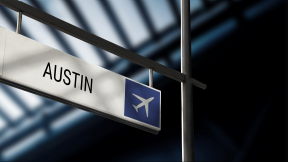
Learn about the new Chase Sapphire Terrace at Austin-Bergstrom International Airport, including features, operating hours, and how to get in.
rewards and benefits Guide to the Chase Sapphire Lounge at LaGuardia Airport

The Sapphire Lounge at LaGuardia can be a calm place to unwind and relax before your flight. Learn about the features and amenities of the Sapphire airport lounge at LGA airport.
credit card basics What is trip interruption insurance?
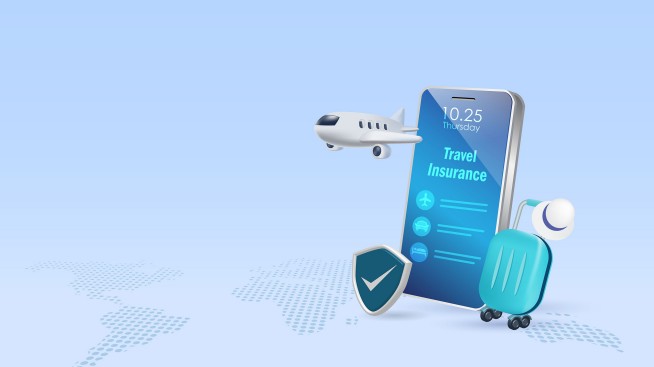
Trip interruption insurance offers travelers reimbursements for prepaid, unused, or nonrefundable expenses if their trip is unexpectedly cut short.

40 Facts About Elektrostal
Written by Lanette Mayes
Modified & Updated: 02 Mar 2024
Reviewed by Jessica Corbett

Elektrostal is a vibrant city located in the Moscow Oblast region of Russia. With a rich history, stunning architecture, and a thriving community, Elektrostal is a city that has much to offer. Whether you are a history buff, nature enthusiast, or simply curious about different cultures, Elektrostal is sure to captivate you.
This article will provide you with 40 fascinating facts about Elektrostal, giving you a better understanding of why this city is worth exploring. From its origins as an industrial hub to its modern-day charm, we will delve into the various aspects that make Elektrostal a unique and must-visit destination.
So, join us as we uncover the hidden treasures of Elektrostal and discover what makes this city a true gem in the heart of Russia.
Key Takeaways:
- Elektrostal, known as the “Motor City of Russia,” is a vibrant and growing city with a rich industrial history, offering diverse cultural experiences and a strong commitment to environmental sustainability.
- With its convenient location near Moscow, Elektrostal provides a picturesque landscape, vibrant nightlife, and a range of recreational activities, making it an ideal destination for residents and visitors alike.
Known as the “Motor City of Russia.”
Elektrostal, a city located in the Moscow Oblast region of Russia, earned the nickname “Motor City” due to its significant involvement in the automotive industry.
Home to the Elektrostal Metallurgical Plant.
Elektrostal is renowned for its metallurgical plant, which has been producing high-quality steel and alloys since its establishment in 1916.
Boasts a rich industrial heritage.
Elektrostal has a long history of industrial development, contributing to the growth and progress of the region.
Founded in 1916.
The city of Elektrostal was founded in 1916 as a result of the construction of the Elektrostal Metallurgical Plant.
Located approximately 50 kilometers east of Moscow.
Elektrostal is situated in close proximity to the Russian capital, making it easily accessible for both residents and visitors.
Known for its vibrant cultural scene.
Elektrostal is home to several cultural institutions, including museums, theaters, and art galleries that showcase the city’s rich artistic heritage.
A popular destination for nature lovers.
Surrounded by picturesque landscapes and forests, Elektrostal offers ample opportunities for outdoor activities such as hiking, camping, and birdwatching.
Hosts the annual Elektrostal City Day celebrations.
Every year, Elektrostal organizes festive events and activities to celebrate its founding, bringing together residents and visitors in a spirit of unity and joy.
Has a population of approximately 160,000 people.
Elektrostal is home to a diverse and vibrant community of around 160,000 residents, contributing to its dynamic atmosphere.
Boasts excellent education facilities.
The city is known for its well-established educational institutions, providing quality education to students of all ages.
A center for scientific research and innovation.
Elektrostal serves as an important hub for scientific research, particularly in the fields of metallurgy, materials science, and engineering.
Surrounded by picturesque lakes.
The city is blessed with numerous beautiful lakes, offering scenic views and recreational opportunities for locals and visitors alike.
Well-connected transportation system.
Elektrostal benefits from an efficient transportation network, including highways, railways, and public transportation options, ensuring convenient travel within and beyond the city.
Famous for its traditional Russian cuisine.
Food enthusiasts can indulge in authentic Russian dishes at numerous restaurants and cafes scattered throughout Elektrostal.
Home to notable architectural landmarks.
Elektrostal boasts impressive architecture, including the Church of the Transfiguration of the Lord and the Elektrostal Palace of Culture.
Offers a wide range of recreational facilities.
Residents and visitors can enjoy various recreational activities, such as sports complexes, swimming pools, and fitness centers, enhancing the overall quality of life.
Provides a high standard of healthcare.
Elektrostal is equipped with modern medical facilities, ensuring residents have access to quality healthcare services.
Home to the Elektrostal History Museum.
The Elektrostal History Museum showcases the city’s fascinating past through exhibitions and displays.
A hub for sports enthusiasts.
Elektrostal is passionate about sports, with numerous stadiums, arenas, and sports clubs offering opportunities for athletes and spectators.
Celebrates diverse cultural festivals.
Throughout the year, Elektrostal hosts a variety of cultural festivals, celebrating different ethnicities, traditions, and art forms.
Electric power played a significant role in its early development.
Elektrostal owes its name and initial growth to the establishment of electric power stations and the utilization of electricity in the industrial sector.
Boasts a thriving economy.
The city’s strong industrial base, coupled with its strategic location near Moscow, has contributed to Elektrostal’s prosperous economic status.
Houses the Elektrostal Drama Theater.
The Elektrostal Drama Theater is a cultural centerpiece, attracting theater enthusiasts from far and wide.
Popular destination for winter sports.
Elektrostal’s proximity to ski resorts and winter sport facilities makes it a favorite destination for skiing, snowboarding, and other winter activities.
Promotes environmental sustainability.
Elektrostal prioritizes environmental protection and sustainability, implementing initiatives to reduce pollution and preserve natural resources.
Home to renowned educational institutions.
Elektrostal is known for its prestigious schools and universities, offering a wide range of academic programs to students.
Committed to cultural preservation.
The city values its cultural heritage and takes active steps to preserve and promote traditional customs, crafts, and arts.
Hosts an annual International Film Festival.
The Elektrostal International Film Festival attracts filmmakers and cinema enthusiasts from around the world, showcasing a diverse range of films.
Encourages entrepreneurship and innovation.
Elektrostal supports aspiring entrepreneurs and fosters a culture of innovation, providing opportunities for startups and business development.
Offers a range of housing options.
Elektrostal provides diverse housing options, including apartments, houses, and residential complexes, catering to different lifestyles and budgets.
Home to notable sports teams.
Elektrostal is proud of its sports legacy, with several successful sports teams competing at regional and national levels.
Boasts a vibrant nightlife scene.
Residents and visitors can enjoy a lively nightlife in Elektrostal, with numerous bars, clubs, and entertainment venues.
Promotes cultural exchange and international relations.
Elektrostal actively engages in international partnerships, cultural exchanges, and diplomatic collaborations to foster global connections.
Surrounded by beautiful nature reserves.
Nearby nature reserves, such as the Barybino Forest and Luchinskoye Lake, offer opportunities for nature enthusiasts to explore and appreciate the region’s biodiversity.
Commemorates historical events.
The city pays tribute to significant historical events through memorials, monuments, and exhibitions, ensuring the preservation of collective memory.
Promotes sports and youth development.
Elektrostal invests in sports infrastructure and programs to encourage youth participation, health, and physical fitness.
Hosts annual cultural and artistic festivals.
Throughout the year, Elektrostal celebrates its cultural diversity through festivals dedicated to music, dance, art, and theater.
Provides a picturesque landscape for photography enthusiasts.
The city’s scenic beauty, architectural landmarks, and natural surroundings make it a paradise for photographers.
Connects to Moscow via a direct train line.
The convenient train connection between Elektrostal and Moscow makes commuting between the two cities effortless.
A city with a bright future.
Elektrostal continues to grow and develop, aiming to become a model city in terms of infrastructure, sustainability, and quality of life for its residents.
In conclusion, Elektrostal is a fascinating city with a rich history and a vibrant present. From its origins as a center of steel production to its modern-day status as a hub for education and industry, Elektrostal has plenty to offer both residents and visitors. With its beautiful parks, cultural attractions, and proximity to Moscow, there is no shortage of things to see and do in this dynamic city. Whether you’re interested in exploring its historical landmarks, enjoying outdoor activities, or immersing yourself in the local culture, Elektrostal has something for everyone. So, next time you find yourself in the Moscow region, don’t miss the opportunity to discover the hidden gems of Elektrostal.
Q: What is the population of Elektrostal?
A: As of the latest data, the population of Elektrostal is approximately XXXX.
Q: How far is Elektrostal from Moscow?
A: Elektrostal is located approximately XX kilometers away from Moscow.
Q: Are there any famous landmarks in Elektrostal?
A: Yes, Elektrostal is home to several notable landmarks, including XXXX and XXXX.
Q: What industries are prominent in Elektrostal?
A: Elektrostal is known for its steel production industry and is also a center for engineering and manufacturing.
Q: Are there any universities or educational institutions in Elektrostal?
A: Yes, Elektrostal is home to XXXX University and several other educational institutions.
Q: What are some popular outdoor activities in Elektrostal?
A: Elektrostal offers several outdoor activities, such as hiking, cycling, and picnicking in its beautiful parks.
Q: Is Elektrostal well-connected in terms of transportation?
A: Yes, Elektrostal has good transportation links, including trains and buses, making it easily accessible from nearby cities.
Q: Are there any annual events or festivals in Elektrostal?
A: Yes, Elektrostal hosts various events and festivals throughout the year, including XXXX and XXXX.
Was this page helpful?
Our commitment to delivering trustworthy and engaging content is at the heart of what we do. Each fact on our site is contributed by real users like you, bringing a wealth of diverse insights and information. To ensure the highest standards of accuracy and reliability, our dedicated editors meticulously review each submission. This process guarantees that the facts we share are not only fascinating but also credible. Trust in our commitment to quality and authenticity as you explore and learn with us.
Share this Fact:
km travel chesterfield 2024 brochure prices
This is our KM Travel Tour Operators page, we have listed the full address of KM Travel as well as phone numbers and websites. KM Travel is in Chesterfield, KM Travel may offer holiday tours, sightseeing tours, and general city tours in Chesterfield.
If you have used KM Travel before be sure to leave your own comment or rating on the city tour or holiday tour that you went on so other poeple wishing to use this company can read fair and honest reviews before the book there holiday with KM Travel. Please remember that KM Travel may offer much more that just UK holiday tours, UK Coach Tours and city tours so remember to contact the travel agents company using the details below to find out more information.
Latest KM Travel Reviews

- Transportation (Chesterfield)
- KM Travel Chesterfield
Chesterfield, United Kingdom
Related places.
- Get directions
- Photos page
QR code, vCard

Activate map
Business hours
Reviews of km travel chesterfield.
- Things to Do
- Restaurants
- Holiday Rentals
- Travel Stories
- Add a Place
- Travel Forum
- Travellers' Choice
- Help Centre
Lovely holiday - KM British & European Coach Holiday
- Europe
- United Kingdom (UK)
- England
- Yorkshire
- South Yorkshire
- Barnsley
- Barnsley - Things to Do
- KM British & European Coach Holiday
Brilliant holiday to Torquay, tinsel & turkey 20 th November to Belgrave Sands hotel. The hotel was... read more
Thanks to all at KM TRAVEL especially our driver courier Matt who made the trip more enjoyable and... read more
Trains Moscow to Elektrostal: Times, Prices and Tickets
- Train Times
- Seasonality
- Accommodations
Moscow to Elektrostal by train
The journey from Moscow to Elektrostal by train is 32.44 mi and takes 2 hr 7 min. There are 71 connections per day, with the first departure at 12:15 AM and the last at 11:46 PM. It is possible to travel from Moscow to Elektrostal by train for as little as or as much as . The best price for this journey is .
Get from Moscow to Elektrostal with Virail
Virail's search tool will provide you with the options you need when you want to go from Moscow to Elektrostal. All you need to do is enter the dates of your planned journey, and let us take care of everything else. Our engine does the hard work, searching through thousands of routes offered by our trusted travel partners to show you options for traveling by train, bus, plane, or carpool. You can filter the results to suit your needs. There are a number of filtering options, including price, one-way or round trip, departure or arrival time, duration of journey, or number of connections. Soon you'll find the best choice for your journey. When you're ready, Virail will transfer you to the provider's website to complete the booking. No matter where you're going, get there with Virail.
How can I find the cheapest train tickets to get from Moscow to Elektrostal?
Prices will vary when you travel from Moscow to Elektrostal. On average, though, you'll pay about for a train ticket. You can find train tickets for prices as low as , but it may require some flexibility with your travel plans. If you're looking for a low price, you may need to prepare to spend more time in transit. You can also often find cheaper train tickets at particular times of day, or on certain days of the week. Of course, ticket prices often change during the year, too; expect to pay more in peak season. For the lowest prices, it's usually best to make your reservation in advance. Be careful, though, as many providers do not offer refunds or exchanges on their cheapest train tickets. Unfortunately, no price was found for your trip from Moscow to Elektrostal. Selecting a new departure or arrival city, without dramatically changing your itinerary could help you find price results. Prices will vary when you travel from Moscow to Elektrostal. On average, though, you'll pay about for a train ticket. If you're looking for a low price, you may need to prepare to spend more time in transit. You can also often find cheaper train tickets at particular times of day, or on certain days of the week. Of course, ticket prices often change during the year, too; expect to pay more in peak season. For the lowest prices, it's usually best to make your reservation in advance. Be careful, though, as many providers do not offer refunds or exchanges on their cheapest train tickets.
How long does it take to get from Moscow to Elektrostal by train?
The journey between Moscow and Elektrostal by train is approximately 32.44 mi. It will take you more or less 2 hr 7 min to complete this journey. This average figure does not take into account any delays that might arise on your route in exceptional circumstances. If you are planning to make a connection or operating on a tight schedule, give yourself plenty of time. The distance between Moscow and Elektrostal is around 32.44 mi. Depending on the exact route and provider you travel with, your journey time can vary. On average, this journey will take approximately 2 hr 7 min. However, the fastest routes between Moscow and Elektrostal take 1 hr 3 min. If a fast journey is a priority for you when traveling, look out for express services that may get you there faster. Some flexibility may be necessary when booking. Often, these services only leave at particular times of day - or even on certain days of the week. You may also find a faster journey by taking an indirect route and connecting in another station along the way.
How many journeys from Moscow to Elektrostal are there every day?
On average, there are 71 daily departures from Moscow to Elektrostal. However, there may be more or less on different days. Providers' timetables can change on certain days of the week or public holidays, and many also vary at particular times of year. Some providers change their schedules during the summer season, for example. At very busy times, there may be up to departures each day. The providers that travel along this route include , and each operates according to their own specific schedules. As a traveler, you may prefer a direct journey, or you may not mind making changes and connections. If you have heavy suitcases, a direct journey could be best; otherwise, you might be able to save money and enjoy more flexibility by making a change along the way. Every day, there are an average of 18 departures from Moscow which travel directly to Elektrostal. There are 53 journeys with one change or more. Unfortunately, no connection was found for your trip from Moscow to Elektrostal. Selecting a new departure or arrival city, without dramatically changing your itinerary could help you find connections.
Book in advance and save
If you're looking for the best deal for your trip from Moscow to Elektrostal, booking train tickets in advance is a great way to save money, but keep in mind that advance tickets are usually not available until 3 months before your travel date.
Stay flexible with your travel time and explore off-peak journeys
Planning your trips around off-peak travel times not only means that you'll be able to avoid the crowds, but can also end up saving you money. Being flexible with your schedule and considering alternative routes or times will significantly impact the amount of money you spend on getting from Moscow to Elektrostal.
Always check special offers
Checking on the latest deals can help save a lot of money, making it worth taking the time to browse and compare prices. So make sure you get the best deal on your ticket and take advantage of special fares for children, youth and seniors as well as discounts for groups.
Unlock the potential of slower trains or connecting trains
If you're planning a trip with some flexible time, why not opt for the scenic route? Taking slower trains or connecting trains that make more stops may save you money on your ticket – definitely worth considering if it fits in your schedule.
Best time to book cheap train tickets from Moscow to Elektrostal
The cheapest Moscow - Elektrostal train tickets can be found for as low as $35.01 if you’re lucky, or $54.00 on average. The most expensive ticket can cost as much as $77.49.
Find the best day to travel to Elektrostal by train
When travelling to Elektrostal by train, if you want to avoid crowds you can check how frequently our customers are travelling in the next 30-days using the graph below. On average, the peak hours to travel are between 6:30am and 9am in the morning, or between 4pm and 7pm in the evening. Please keep this in mind when travelling to your point of departure as you may need some extra time to arrive, particularly in big cities!
Moscow to Elektrostal CO2 Emissions by Train

Anything we can improve?
Frequently Asked Questions
Go local from moscow, trending routes, weekend getaways from moscow, international routes from moscow and nearby areas, other destinations from moscow, other popular routes.
Na Ulitse Yalagina 13B Apartments
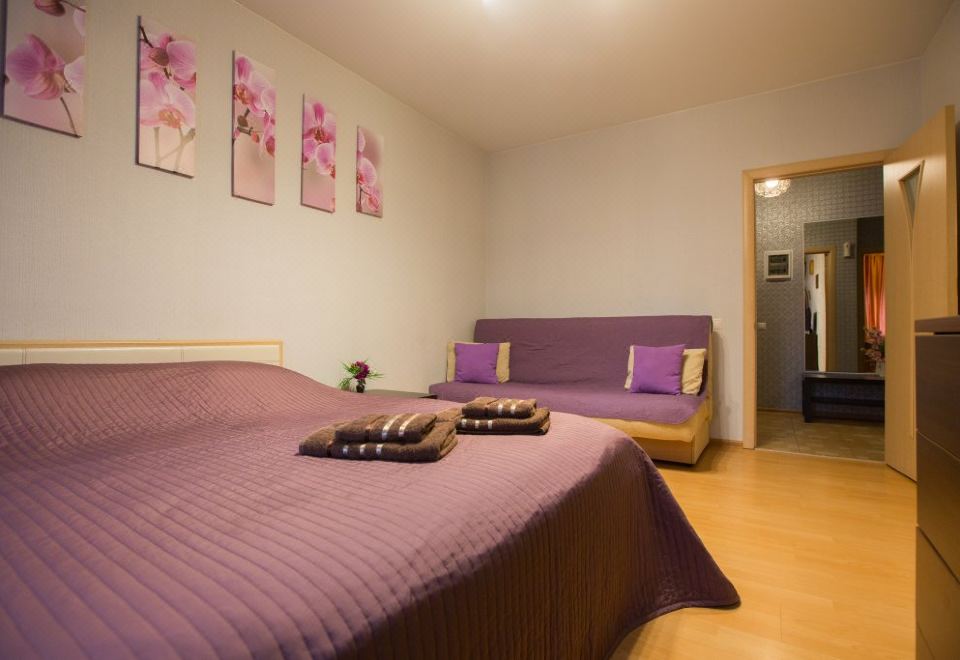
Trending Questions
Property policies, frequently asked questions, how much does it cost to stay at na ulitse yalagina 13b apartments, what are the check-in and check-out times at na ulitse yalagina 13b apartments, does na ulitse yalagina 13b apartments provide airport transfer services, what amenities and services does na ulitse yalagina 13b apartments have, does na ulitse yalagina 13b apartments have a swimming pool, does na ulitse yalagina 13b apartments have fitness amenities, does na ulitse yalagina 13b apartments provide wi-fi, does na ulitse yalagina 13b apartments have non-smoking rooms, does na ulitse yalagina 13b apartments have a restaurant, is parking available at na ulitse yalagina 13b apartments, popular hotels, popular attractions, explore more.
Expedia Rewards is now One Key™
Elektrostal, visit elektrostal, check elektrostal hotel availability, popular places to visit.
- Electrostal History and Art Museum
You can spend time exploring the galleries in Electrostal History and Art Museum in Elektrostal. Take in the museums while you're in the area.
- Cities near Elektrostal

- Places of interest
- Yuri Gagarin Cosmonaut Training Center
- Peter the Great Military Academy
- Central Museum of the Air Forces at Monino
- History of Russian Scarfs and Shawls Museum
- Balashikha Arena
- Balashikha Museum of History and Local Lore
- Bykovo Manor
- Pekhorka Park
- Ramenskii History and Art Museum
- Malenky Puppet Theater
- Drama Theatre BOOM
- Likino Dulevo Museum of Local Lore
- Noginsk Museum and Exhibition Center
- Pavlovsky Posad Museum of Art and History
- Saturn Stadium
- Fairy Tale Children's Model Puppet Theater
- Fifth House Gallery
- Church of Vladimir
- Malakhovka Museum of History and Culture
- Orekhovo Zuevsky City Exhibition Hall
Destinations in May
Destinations in 2024.
Please note prices are based on two persons sharing a twin/double room. Single room supplements may apply, please call check single availability/price.
Comments are closed.
- Destinations
- Hotel Information
- Private hire
- Special offers / Late availability
- Travel Insurance
- Employment Opportunities

NEW CHRISTMAS TOUR 2024 - Bournemouth - Norfolk Royale Hotel - BROCHURE ADDITION . 2024 EUROPEAN HOLIDAYS - Early release - ITALY - Lake Garda / Alassio Click here to download our 2024 Brochure All Our Holidays Include In The Price: Free Door to Door Taxi ( Subject to Area ) ~ Luxury Coach Travel ~ Reserved Coach Seats . Personally Selected ...
www.kmchesterfield.co.uk
KM Travel of Barnsley, South Yorkshire. Request a brochure by: Calling: 01226 245564 email: [email protected] . download: click here to download the 2024 Tour Brochure.
KM Travel is in Chesterfield, KM Travel may offer holiday tours, sightseeing tours, and general city tours in Chesterfield. If you have used KM Travel before be sure to leave your own comment or rating on the city tour or holiday tour that you went on so other poeple wishing to use this company can read fair and honest reviews before the book ...
What people are saying. " HOLIDAY TO BLACKPOOL ". Oct 2023. Thanks to all at KM TRAVEL especially our driver courier Matt who made the trip more enjoyable and a credit to the co... " Lovely place enjoyed it clean need a bit of investment there ". Aug 2022. Stayed at ilfracombe Devon 14 to 20 Aug the coach was lovely our driver Tony was ...
Reviews, contact details and business hours of KM Travel Chesterfield at 27 Stephenson Place, Chesterfield, Derbyshire. Check out nearby places on a map. Write a review. Log in. ... 21:03 Tuesday, 23 April 2024: Business hours. Monday: 9:00 am - 4:30 pm: Tuesday: 9:00 am - 4:30 pm: Wednesday: 9:00 am - 4:30 pm: Thursday: 9:00 am - 4:30 ...
KM Travel of Barnsley, South Yorkshire. Tel: (01226) 245564 [email protected] . Home. Booking Guide Request Brochure Customer Information Contact Us. ... Our 2024 British Coach Holiday Brochure is now available to download and available shortly from our Market Street office in paper form.
5. £339. Nil. Please note prices are based on two persons sharing a twin/double room. Single room supplements may apply, please call check single availability/price. Price Includes: * Luxury Coach Travel * Local Departure Points. * En-suite bedrooms * Excursions. * Half Board Accommodation.
Page List. (Click on the page required to be linked with that page in the brochure) Page 1 - Front cover. Page 2 - Introduction. Page 3 - Contact information. Customer information. Page 4 - How to make a booking. Holiday index January to June. Page 5 - Holiday index June to December.
Our 2024 UK Brochure is OUT NOW! Order yours today. 01246 474747 Opening Times Brochures . Menu (current) Home Holidays Day Trips ... A-Line Travel 15 Soresby Street Chesterfield S40 1JW 01246 474747 [email protected] . A-Line Travel, Company number 13060548
Lovely holiday. Review of KM British & European Coach Holiday. Reviewed 9 December 2023. Just back from a T&T break at Exmouth. The hotel and food were brilliant, and the driver James was the best. However we had a bad start after waiting nearly one and a half hours in cold and rain at Ilkeston for the coach. I know there was traffic problems ...
Geeveetravelchesterfield, Chesterfield. 1,657 likes · 24 talking about this · 29 were here. DOOR TO DOOR COACH HOLIDAYS DAY TRIPS AND PRIVATE HIRE
Thankyou received our brochure in the post , I see you have new for 2024 Kynren weekend , we went last year and its the most amazing show I've seen well worth going recommended to everybody. 22w. Robert Lindley. Can I have a brochure please 9 monsal crescent Barnsley S71 3PY. 15w.
KM Travel of Barnsley, South Yorkshire. Tel: (01226) 245564 [email protected] . Home. Booking Guide Request Brochure Customer Information Contact Us. Skip to content. Request a brochure by: Calling: 01226 245564 . email: [email protected] download: ... Please note prices are based on two persons sharing a twin/double room ...
Central Air Force Museum The Central Air Force Museum, housed at Monino Airfield, 40 km east of Moscow, Russia, is one of the world's largest aviation museums, and the largest for Russian aircraft. 173 aircraft and 127 aircraft engines are on display, and the museum also features collections of weapons, instruments, uniforms (including captured U2 pilot Gary Powers' uniform), other Cold War ...
The journey from Moscow to Elektrostal by train is 32.44 mi and takes 2 hr 7 min. There are 71 connections per day, with the first departure at 12:15 AM and the last at 11:46 PM. It is possible to travel from Moscow to Elektrostal by train for as little as or as much as . The best price for this journey is . Journey Duration.
KM Travel of Barnsley, South Yorkshire. Tel: (01226) 245564 [email protected] . ... we guarantee excellent customer service and affordable prices. ... Winter/Spring 2024. Blackpool 2024 Potters Resorts 2024. Our booking office is located at: 52, ...
2022 Brochure . Page List ... All Our Holidays Include In The Price: Free Door to Door Taxi ( Subject to Area ) ~ Luxury Coach Travel ~ Reserved Coach Seats . Personally Selected Hotels ~ En-suite Bedrooms ~ Free Varied Excursions . Telephone: 01246 -556617 ...
Prices at Na Ulitse Yalagina 13B Apartments are subject to change according to dates, hotel policy, and other factors. To view prices, please search for the dates you wish to stay at the hotel. What are the check-in and check-out times at Na Ulitse Yalagina 13B Apartments? The check-in time is after 14:00 and the check-out time is before 12:00.
Cities near Elektrostal. Places of interest. Pavlovskiy Posad Noginsk. Travel guide resource for your visit to Elektrostal. Discover the best of Elektrostal so you can plan your trip right.

IMAGES
VIDEO
COMMENTS
Wenn wir an die Vorteile der Travel Cash Prepaid Mastercard denken, müssen wir direkt an die N26 Kreditkarte denken. Die Karte ist ein Geheimtipp unter den Kreditkarten und bietet einige Vorteile, die sich auch auf Reisen sehr auszahlen können. Mit der Karte profitiert Ihr bis zu fünf kostenfreien Bargeldabhebungen pro Monat an allen ...
Traveling with money is a task that makes many people uneasy, especially when foreign currency is involved. Carrying cash abroad can be deemed as risky, but credit and debit cards can be notoriously finicky because of bank security and the fees that come with international credit charges can have a major effect on your funds in the long run.
Liquidate your coins. If you do end up with cash at the end of your trip, you can usually exchange it back or to another currency if you are traveling on to somewhere else. However, currency exchangers will usually not accept coins and deal in notes only. If you end up with a handful of foreign coins at the end of a trip, try and use them up ...
Ihre Vorteile mit Travel, der neuen Travel Cash Karte. ... Mit Ihrer Travel Karte können Sie sämtliche Hotelcard-Vorteile nutzen. Das Gute daran ist, dass Swiss Bankers für Sie die Hotelcard-Mitgliedschaft übernimmt - so sparen Sie sich die reguläre Hotelcard-Gebühr in Höhe von CHF 99 pro Jahr. Es steht Ihnen frei, ob Sie als Travel ...
Pros and cons of using a credit card abroad. Pro: May offer a better exchange rate than when using cash. Pro: If lost or stolen, a card is easier to replace and potentially get your money back. Pro: More secure than carrying cash. Pro: Score points on credits that can be used for future travel and other purchases.
The Swiss Bankers Travel card is the secure prepaid card for use while travelling. You receive the card immediately, can add money to your balance as required and can pay worldwide - without an annual fee and with complete control in terms of spending limits. The Travel Prepaid Card in CHF, EUR and USD is also available at over 200 outlets.
Each allows you to redeem your rewards, or transfer them to airline or hotel partners. The both charge an annual fee, though. By contrast, the Bank of America® Travel Rewards credit card gives ...
Jinhwa Jang. By Beth Harpaz. June 8, 2022. On a recent trip to England, Andrew Dodson, 35, and his wife, Erin, 32, who live in Traverse City, Mich., had an unexpected problem: No matter how hard ...
In Europe, for instance, travel expert Rick Steves notes day-to-day spending is usually based around cash. While it's a good idea to pay for big-ticket items, like hotels and rental cars, with a credit card, pay for smaller purchases such as bus or subway tickets, taxis, local guides, and purchases in gift shops with cash.
For the ease of flat-rate rewards, the Citi Double Cash® Card earns 2% cash back on everything — 1% when you make a purchase, and 1% when you pay your credit card bill. The annual fee is $0 ...
Redeeming points for cash back or travel. Cash-back cards win again for simplicity on redemption since one cash-back percentage point equals 1 cent per dollar spent. But when it comes to value, points and miles cards almost always come out on top. When redeeming points and miles, 1 point or mile is almost always worth more than 1 cent.
Earning and cash-back value: This card's earning structure includes unlimited 3% cash back on travel purchases, 2% back on dining, and 1% on everything else. Annual fee: $89, waived the first ...
The Capital One SavorOne Cash Rewards Credit Card is, by far, one of the best cash back credit cards for international travel. It comes with no annual fee and no foreign transaction fees, along ...
So if you have $6,000 in cash and a $5,000 traveler's check, you are above the limit. And members of a family residing in one household entering the United States that submit a joint or family declaration must declare if the members are collectively above the $10,000 limit. So if a husband has $4,000 and the wife has $7,000, that family must ...
Best for big spenders: Alliant Cash Back Visa Signature. Best for fair credit: Credit One Bank Platinum X5 Visa. Best for flexibility: U.S. Bank Cash+® Visa Signature® Card. Best for unlimited ...
General-purpose travel credit cards — including the Chase Sapphire Preferred® Card, the American Express® Gold Card and the Capital One Venture Rewards Credit Card — give you rewards that ...
License: Free for commercial use. July 14, 2020 featured in Display. Download Moscow Metro font, a multi-line display typeface in two styles, inspired by the Moscow underground map. Moscow Metro is ideal for posters and headlines, neon signage and other artworks.
To access the portal, go to the booking platform at www.chasetravel.com or login to your Chase Ultimate Rewards account and go to your Chase credit card's main dashboard. Next, click on the "Earn/Use" button where the number of points you have is listed. Choose "Travel" from the options listed, and this will take you to the travel portal.
40 Facts About Elektrostal. Elektrostal is a vibrant city located in the Moscow Oblast region of Russia. With a rich history, stunning architecture, and a thriving community, Elektrostal is a city that has much to offer. Whether you are a history buff, nature enthusiast, or simply curious about different cultures, Elektrostal is sure to ...
Central Air Force Museum The Central Air Force Museum, housed at Monino Airfield, 40 km east of Moscow, Russia, is one of the world's largest aviation museums, and the largest for Russian aircraft. 173 aircraft and 127 aircraft engines are on display, and the museum also features collections of weapons, instruments, uniforms (including captured U2 pilot Gary Powers' uniform), other Cold War ...